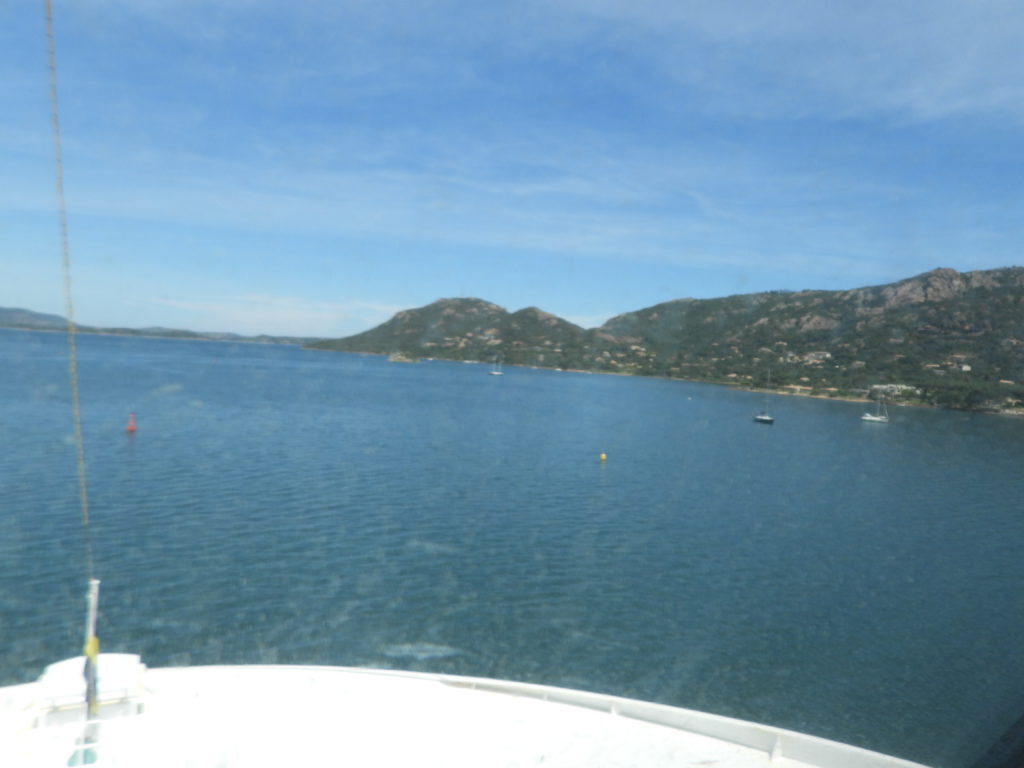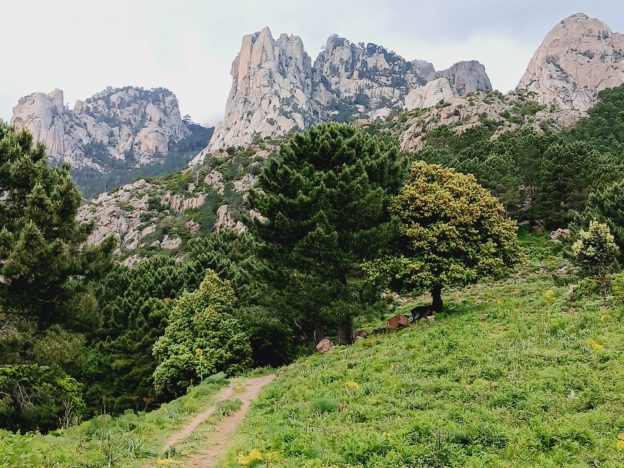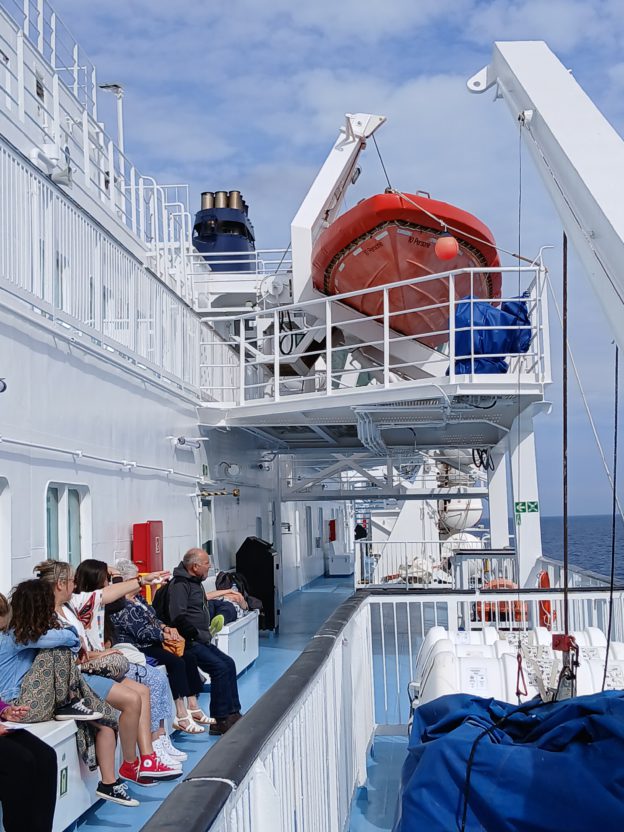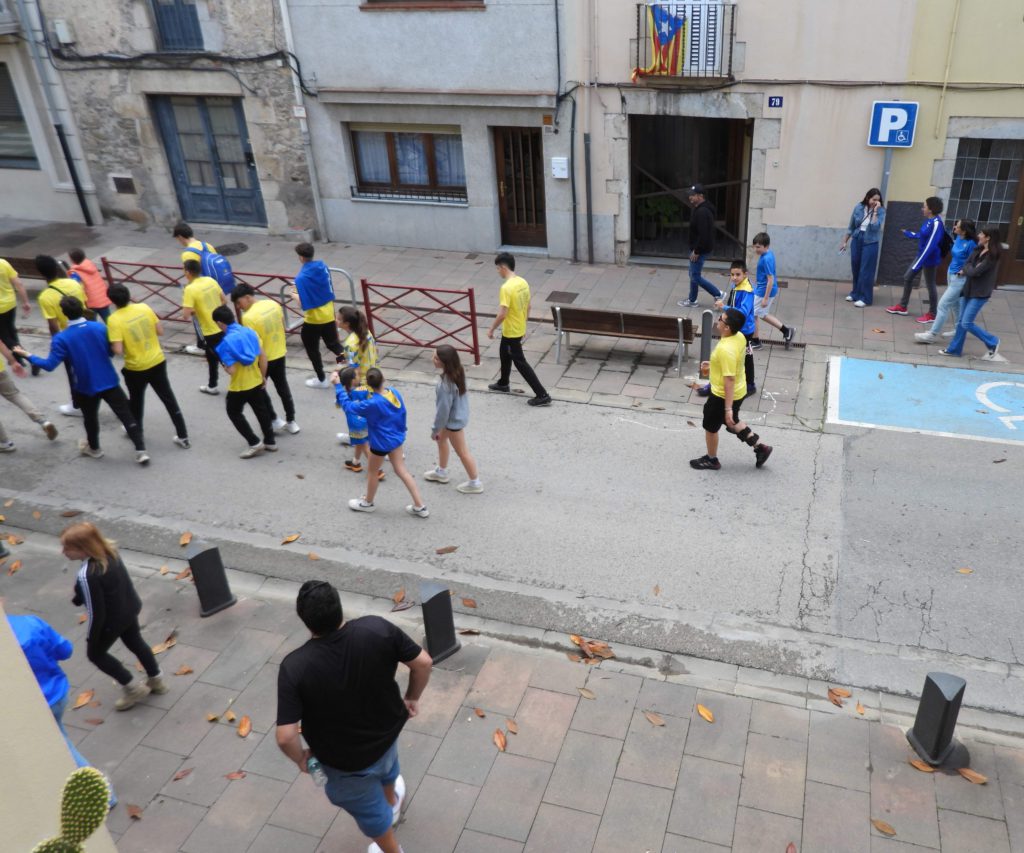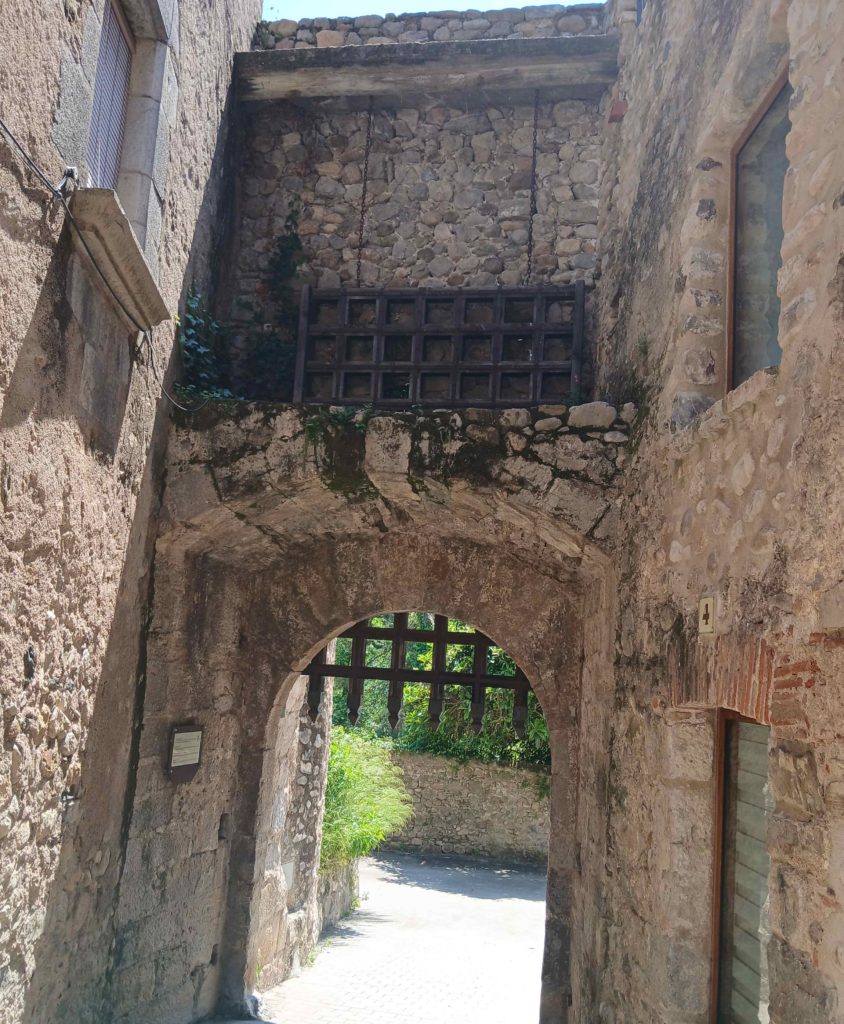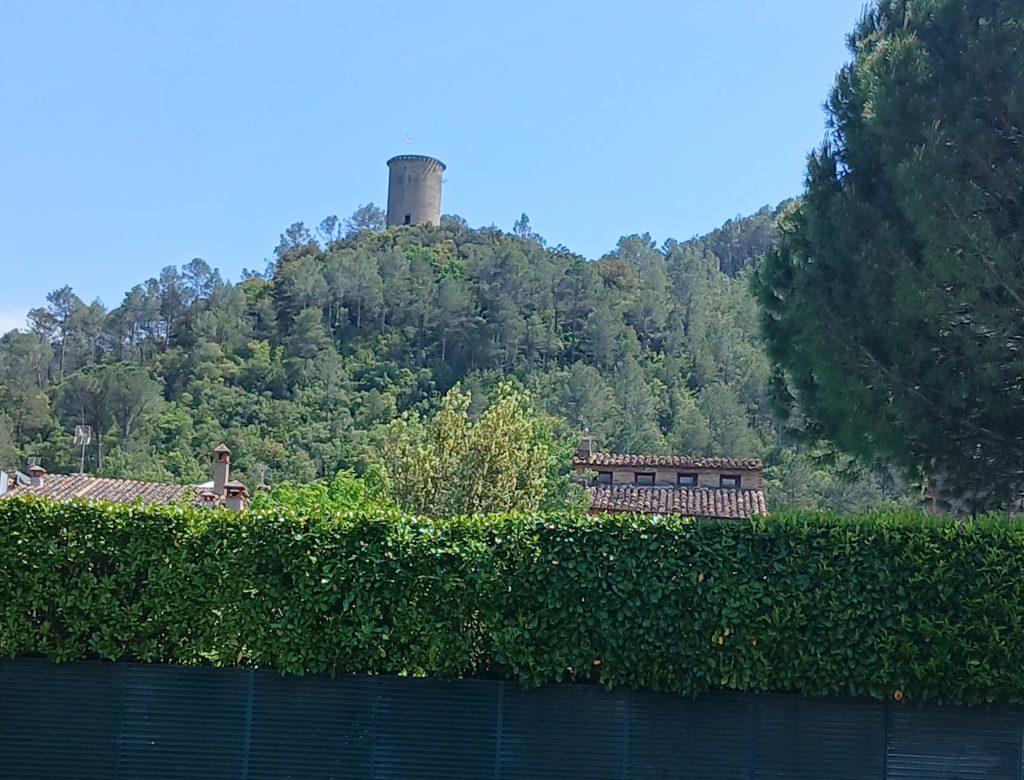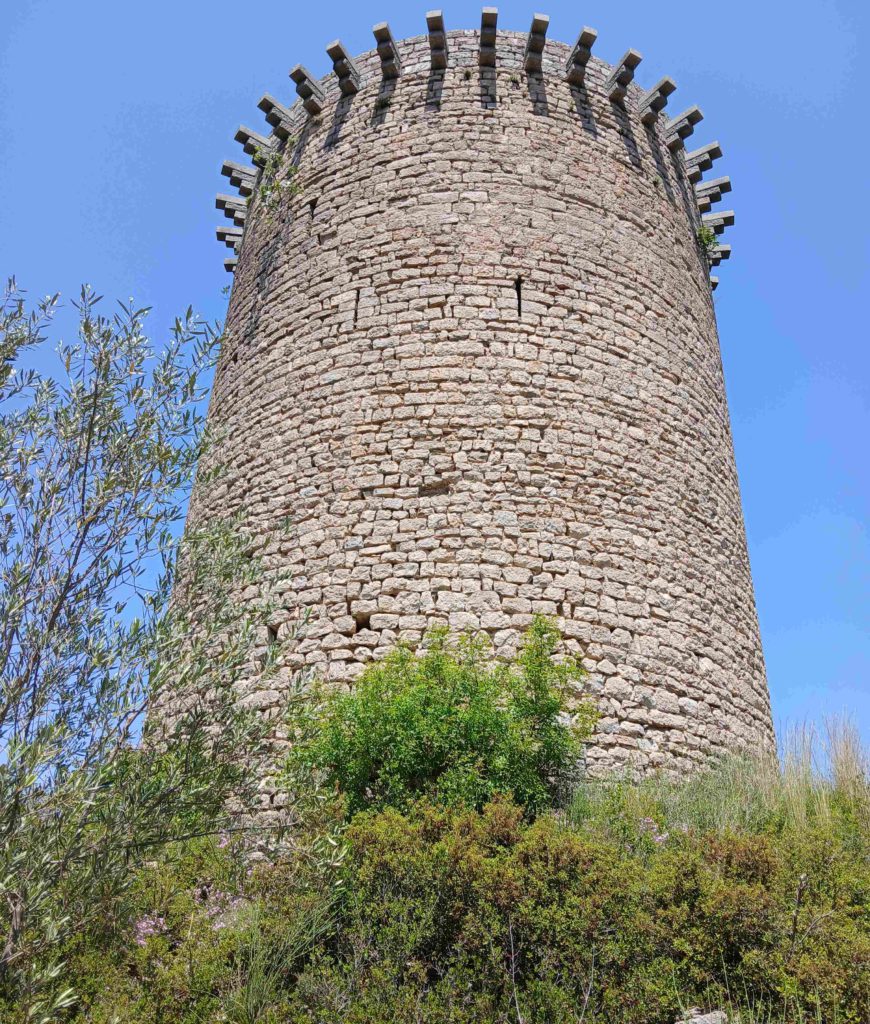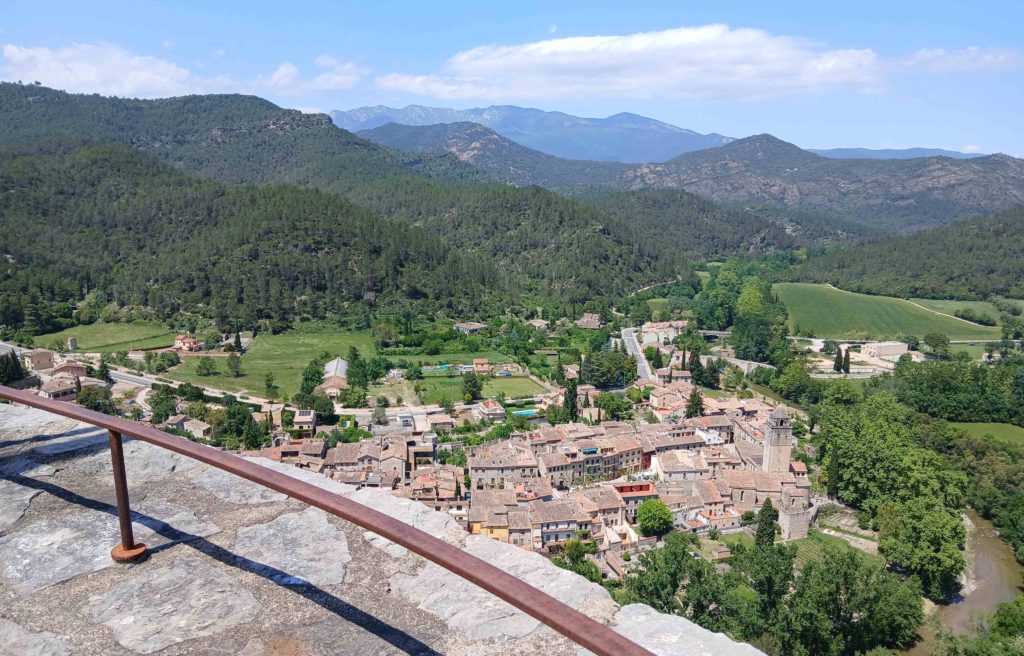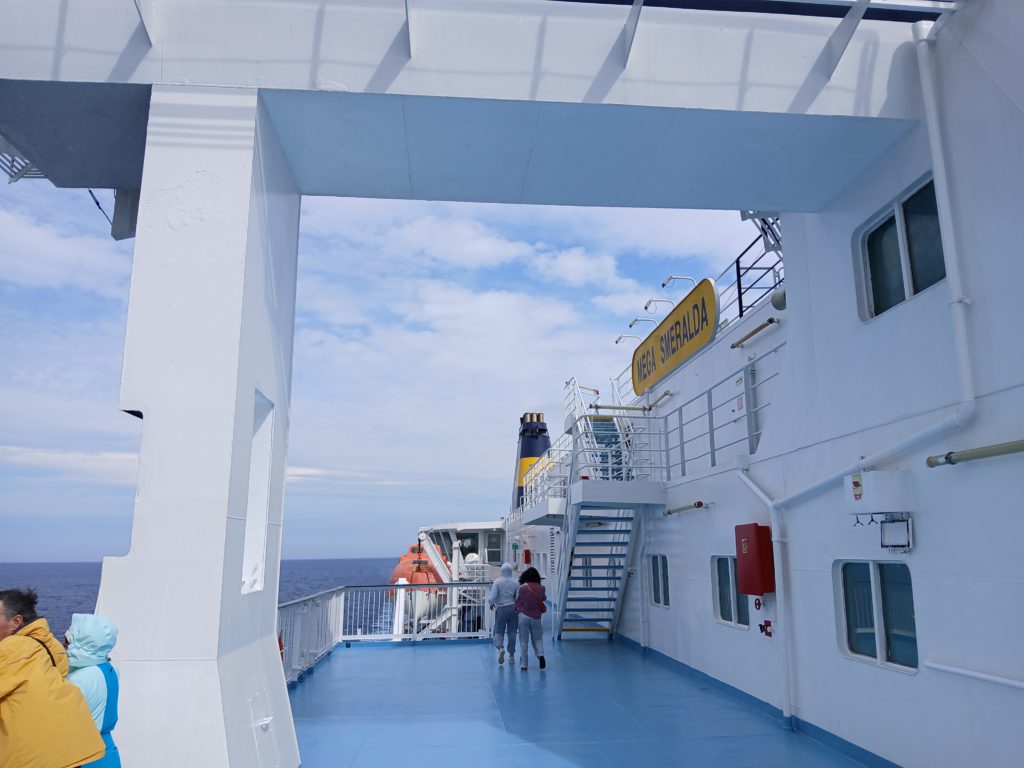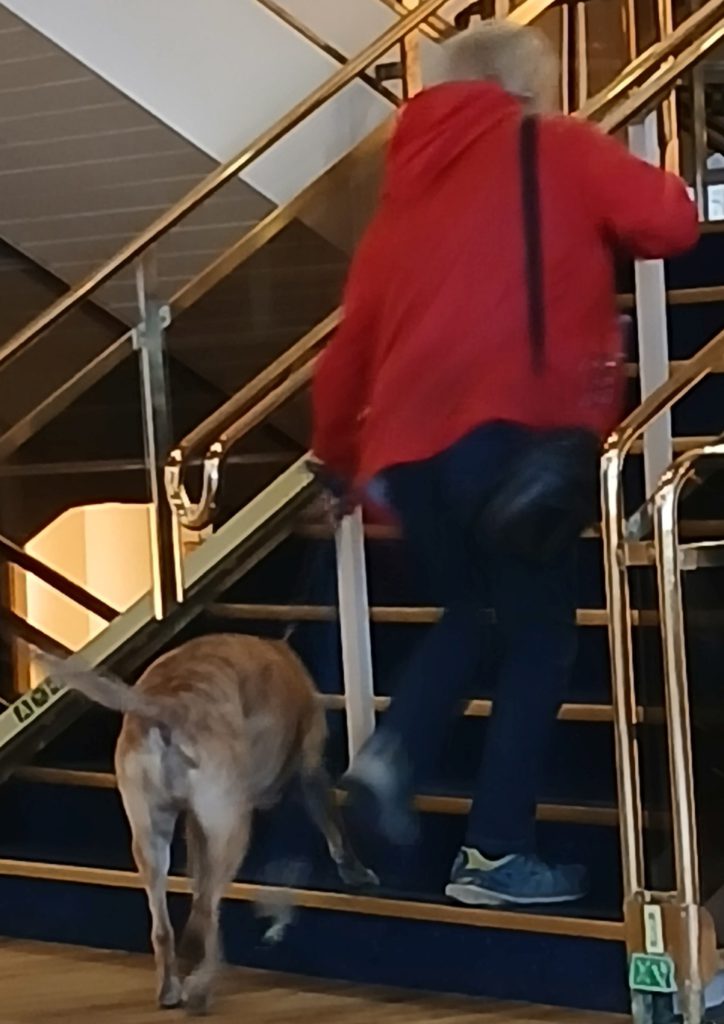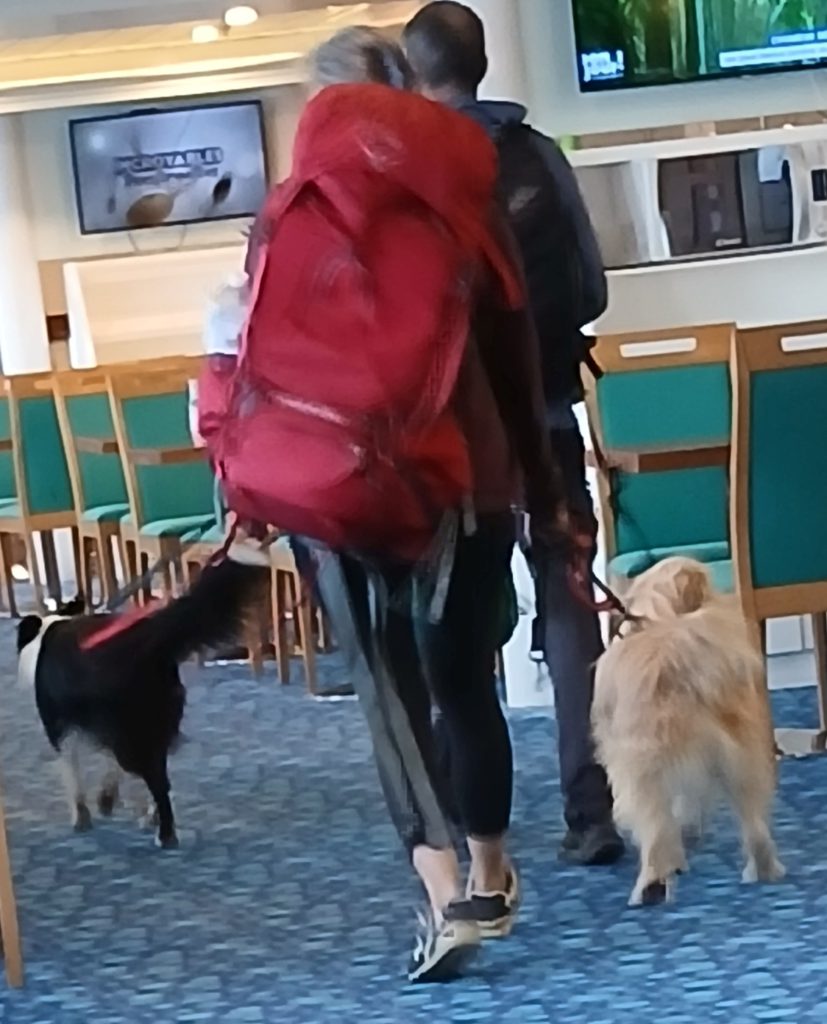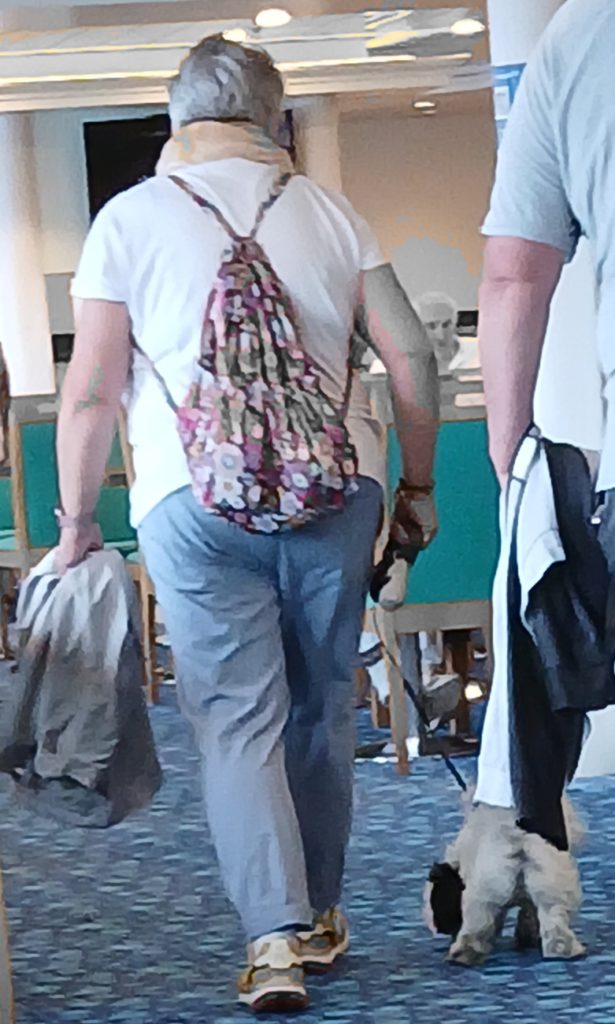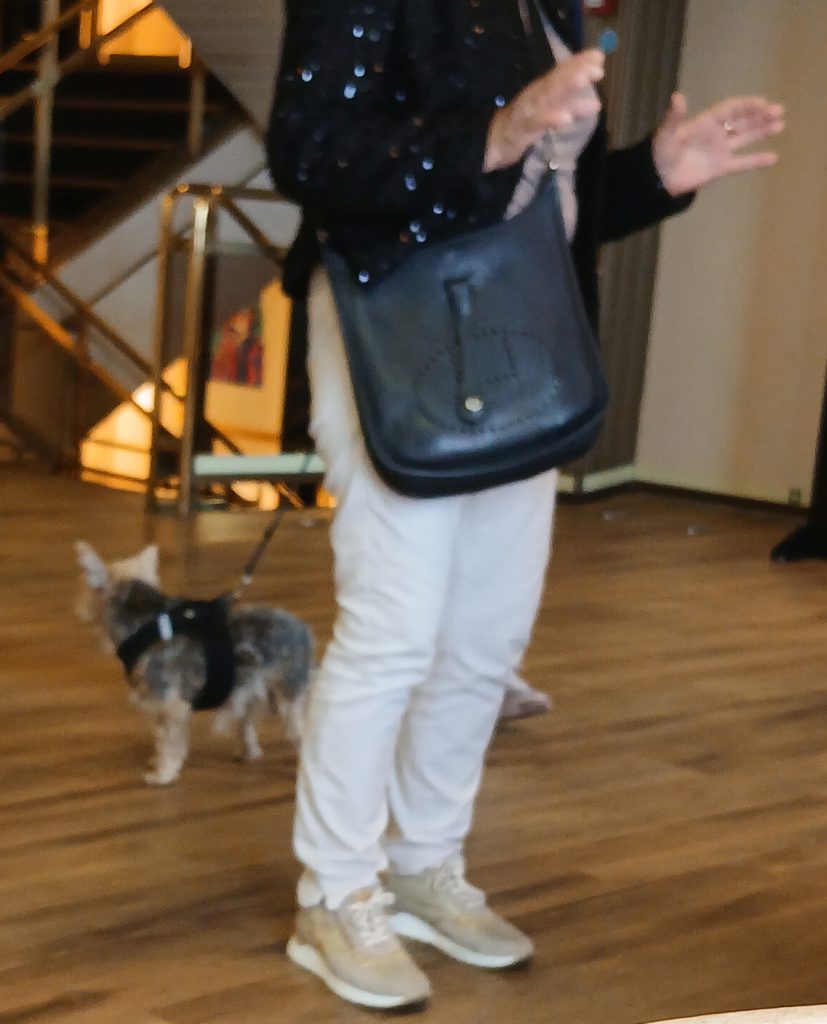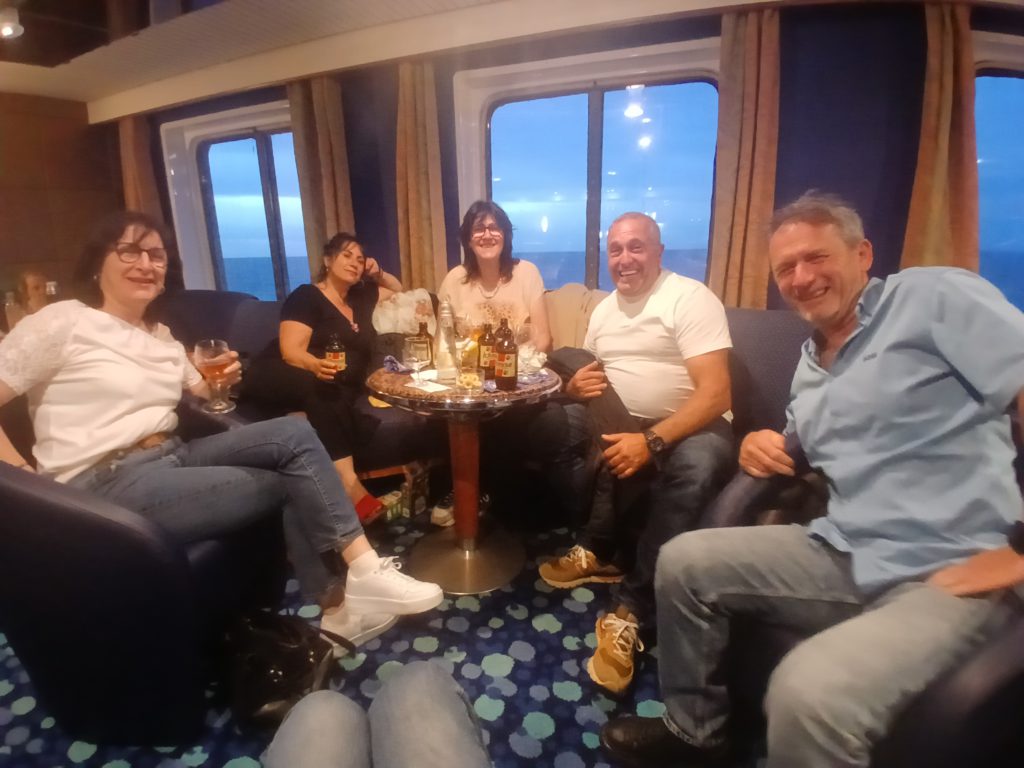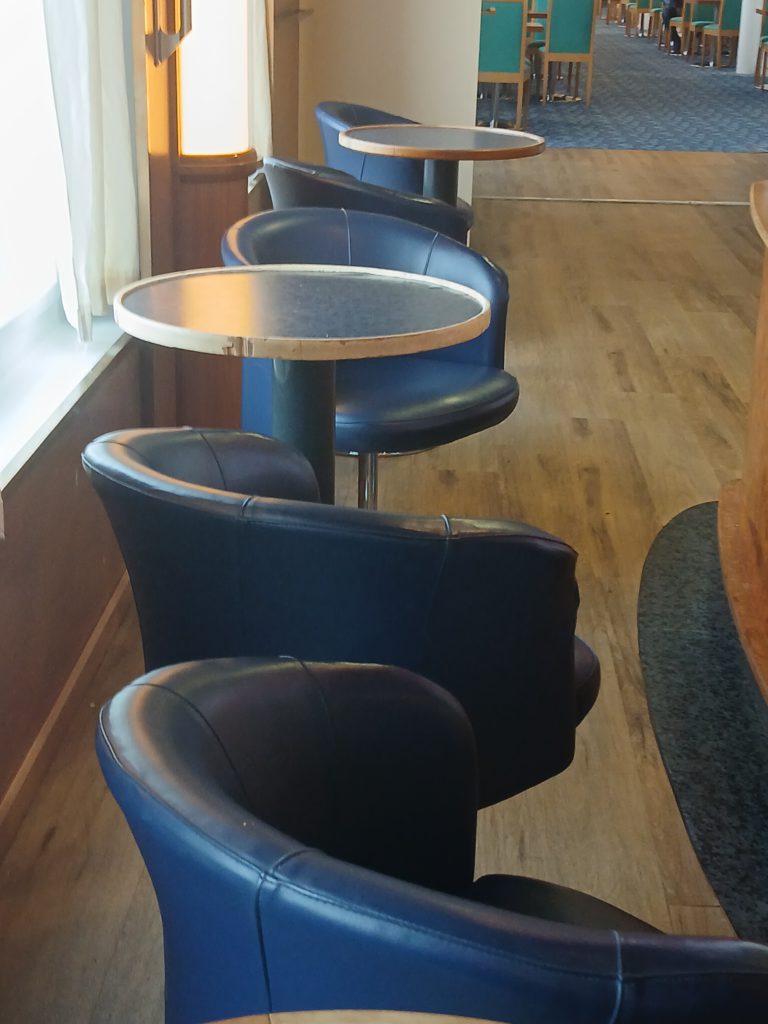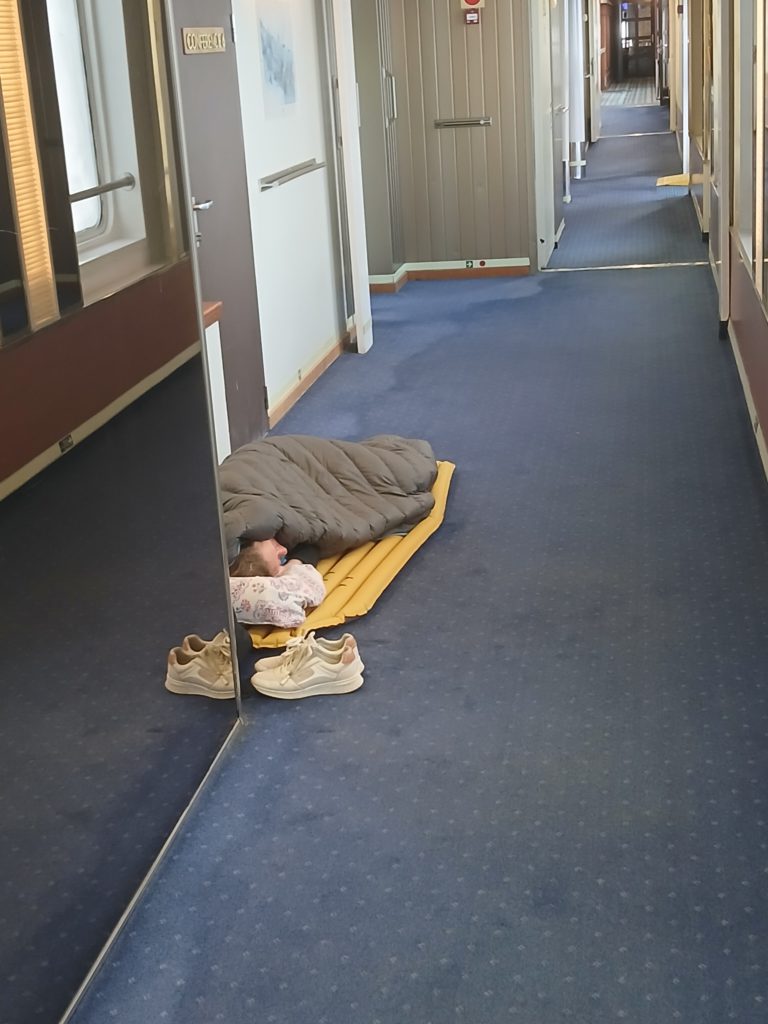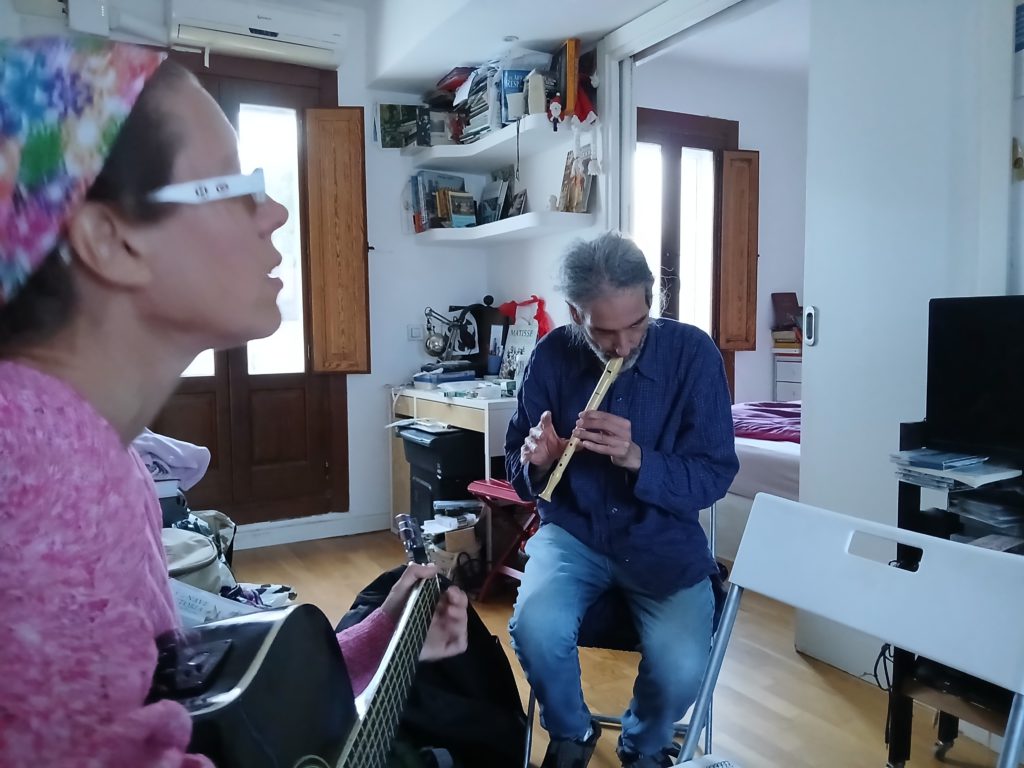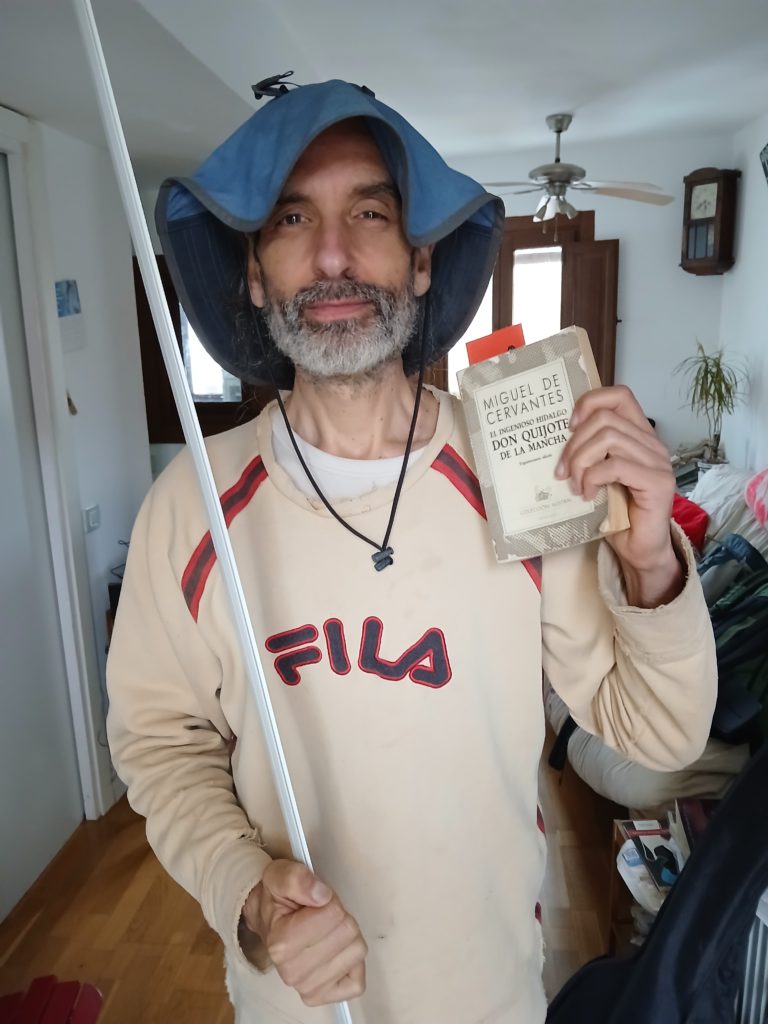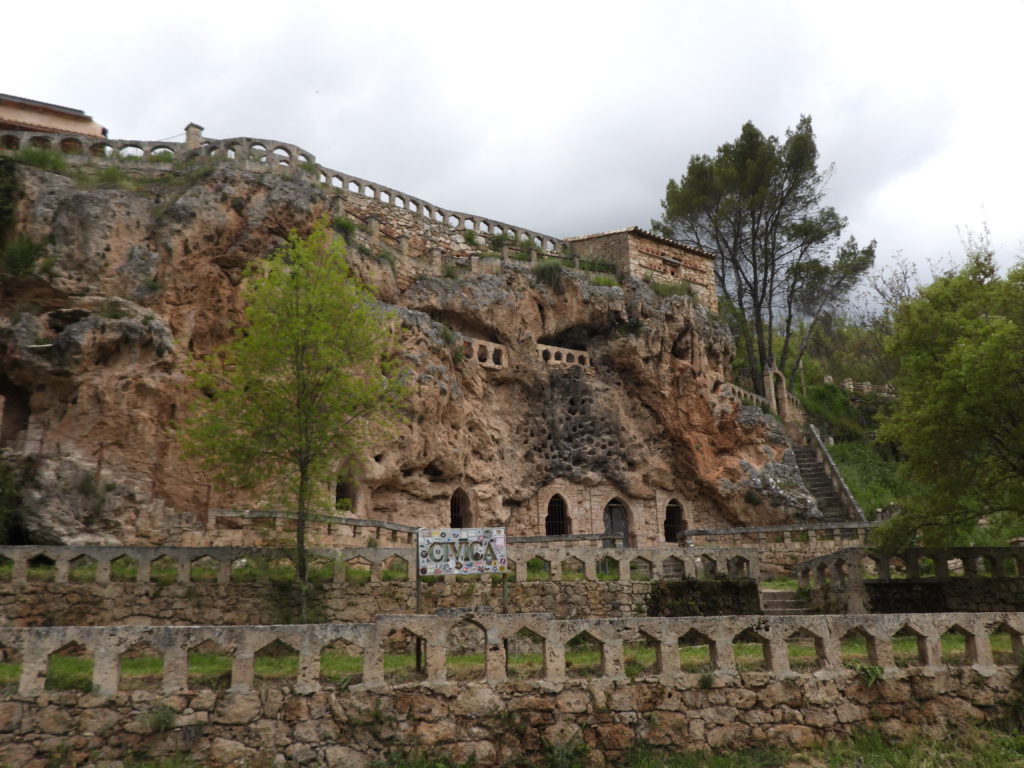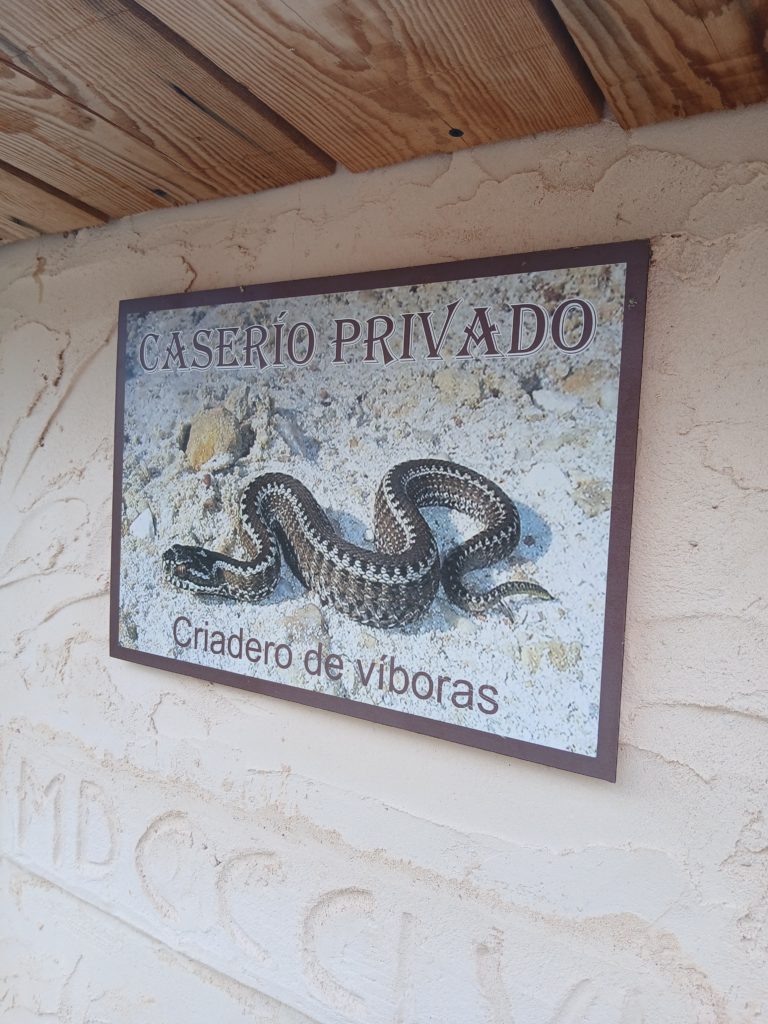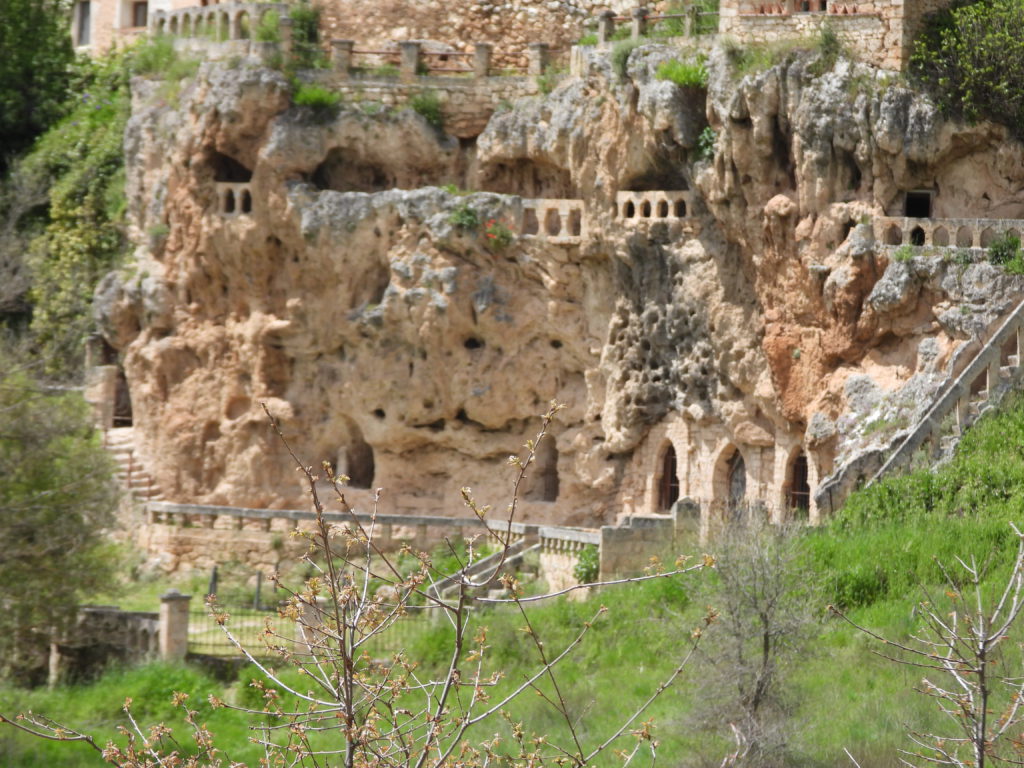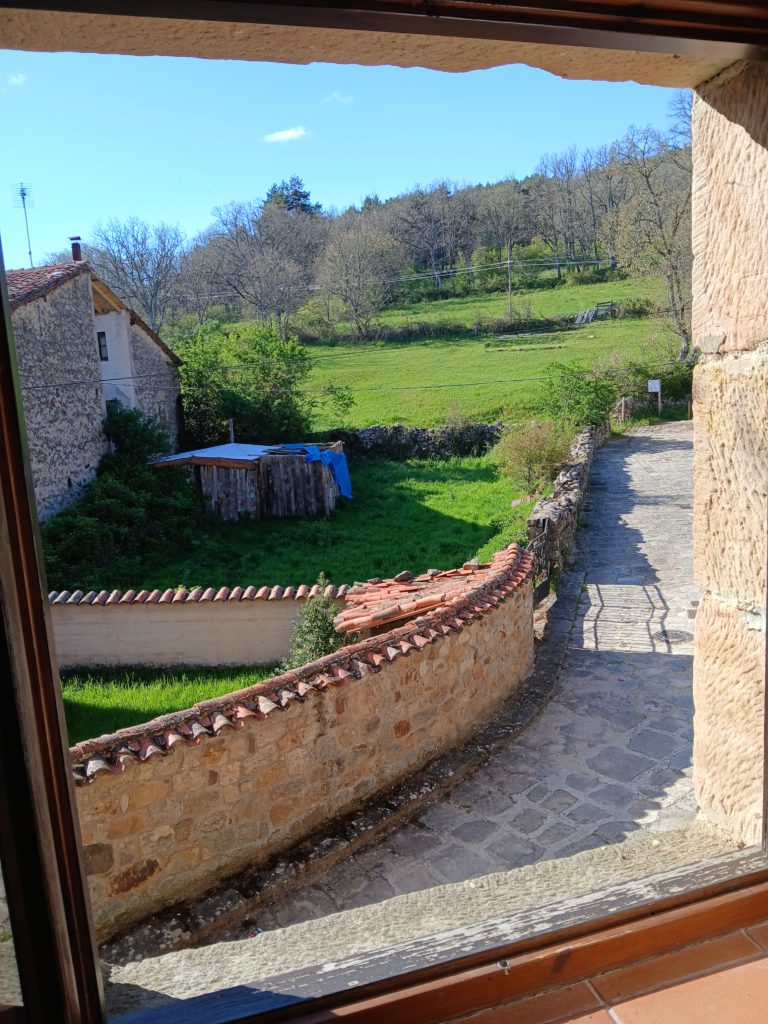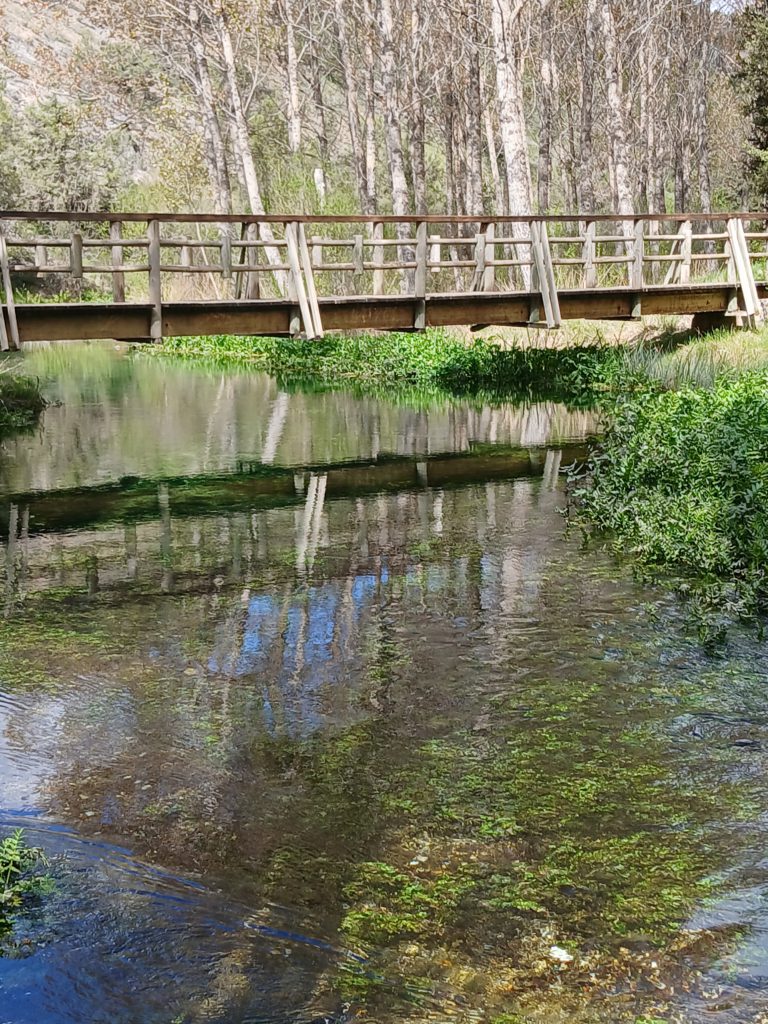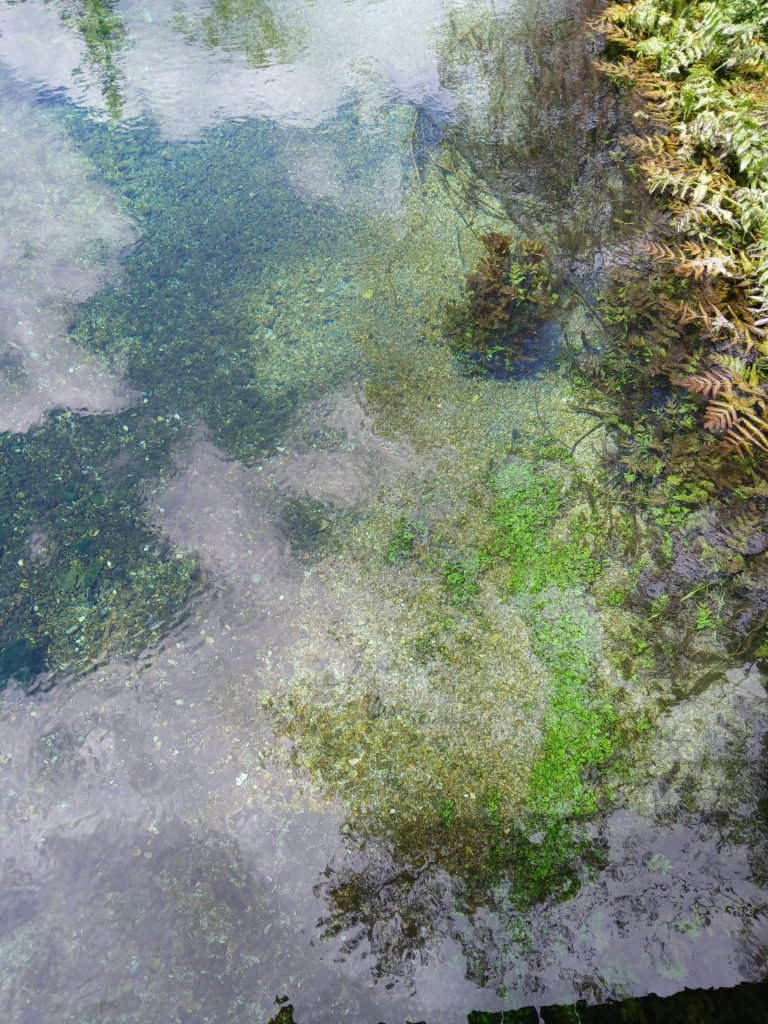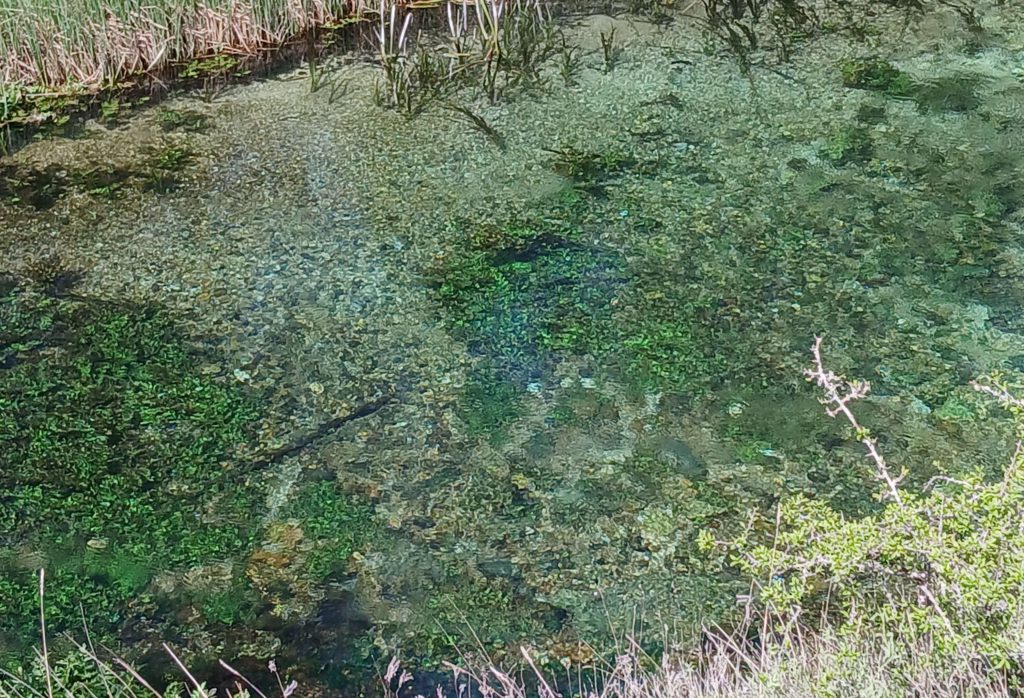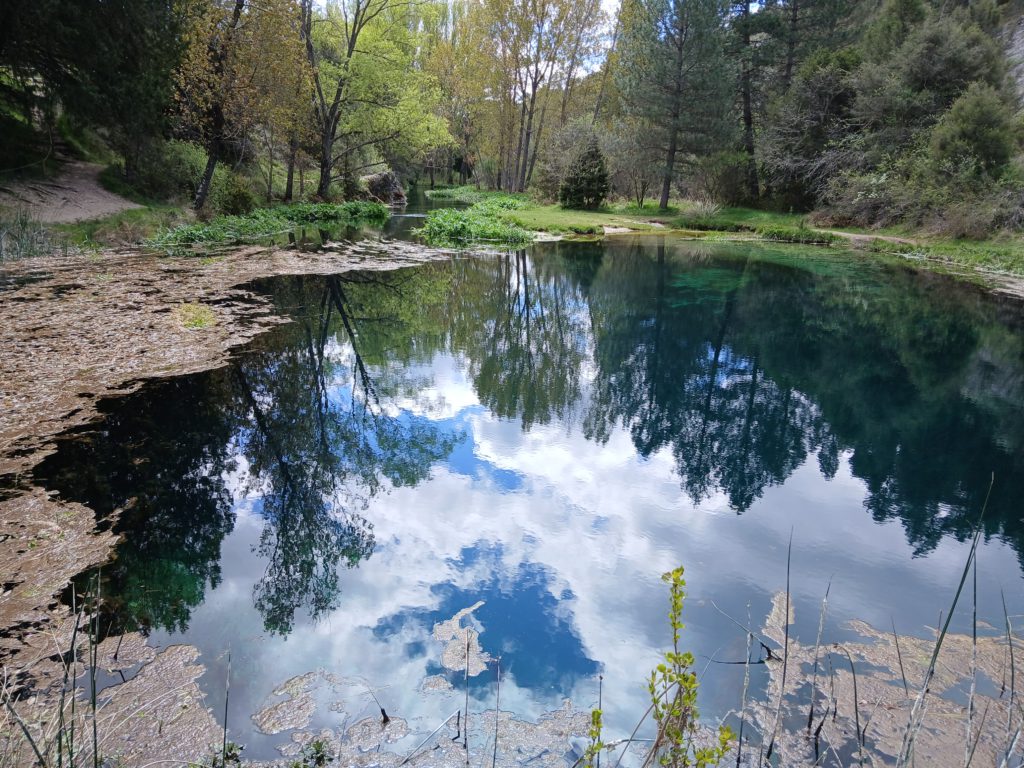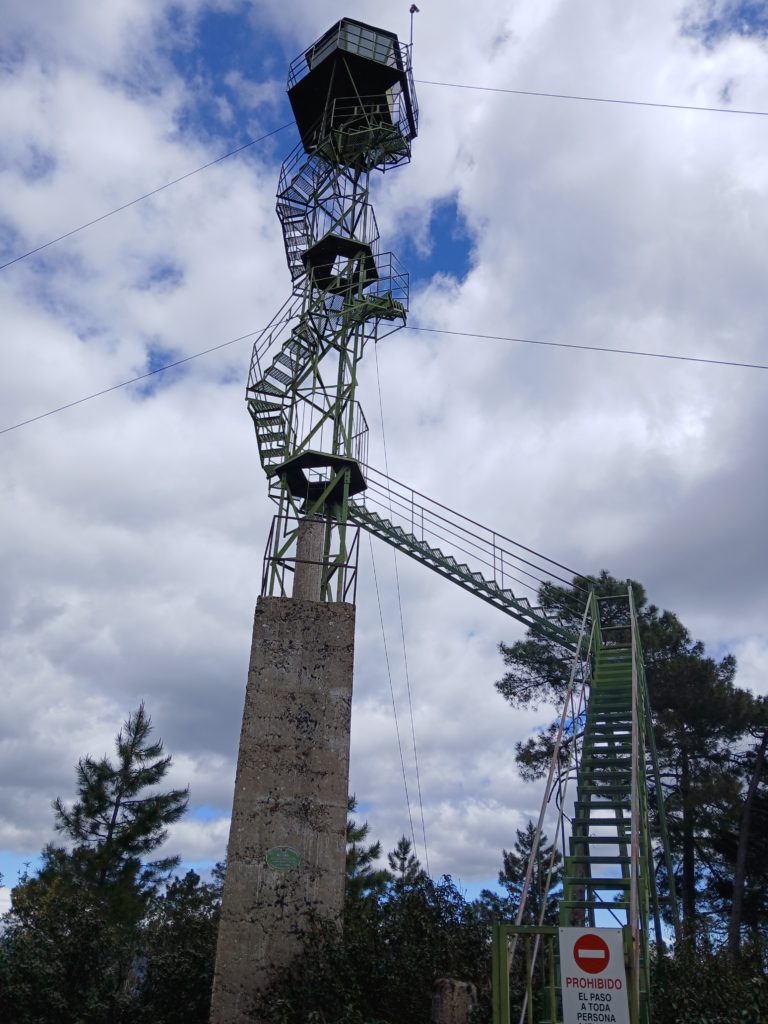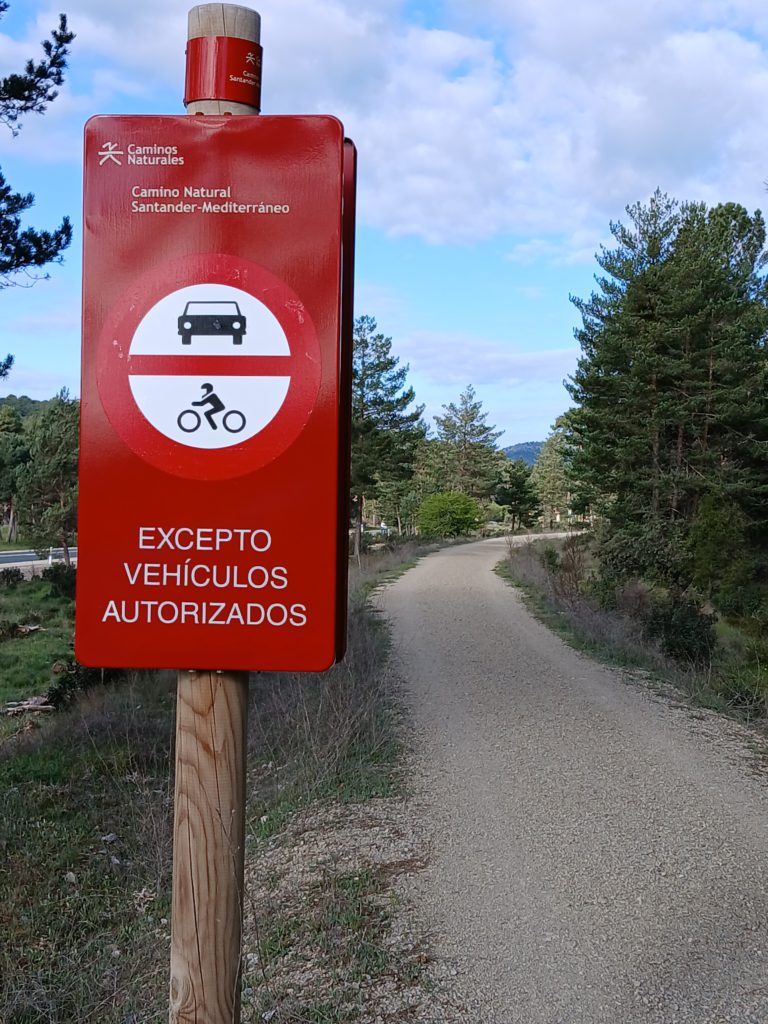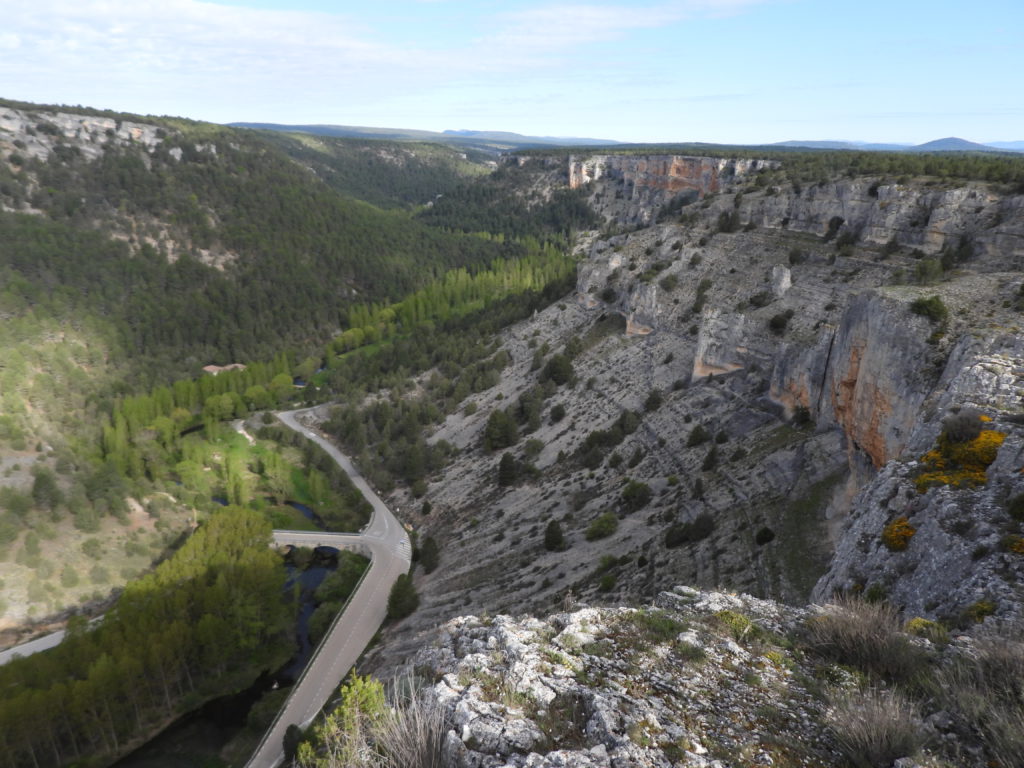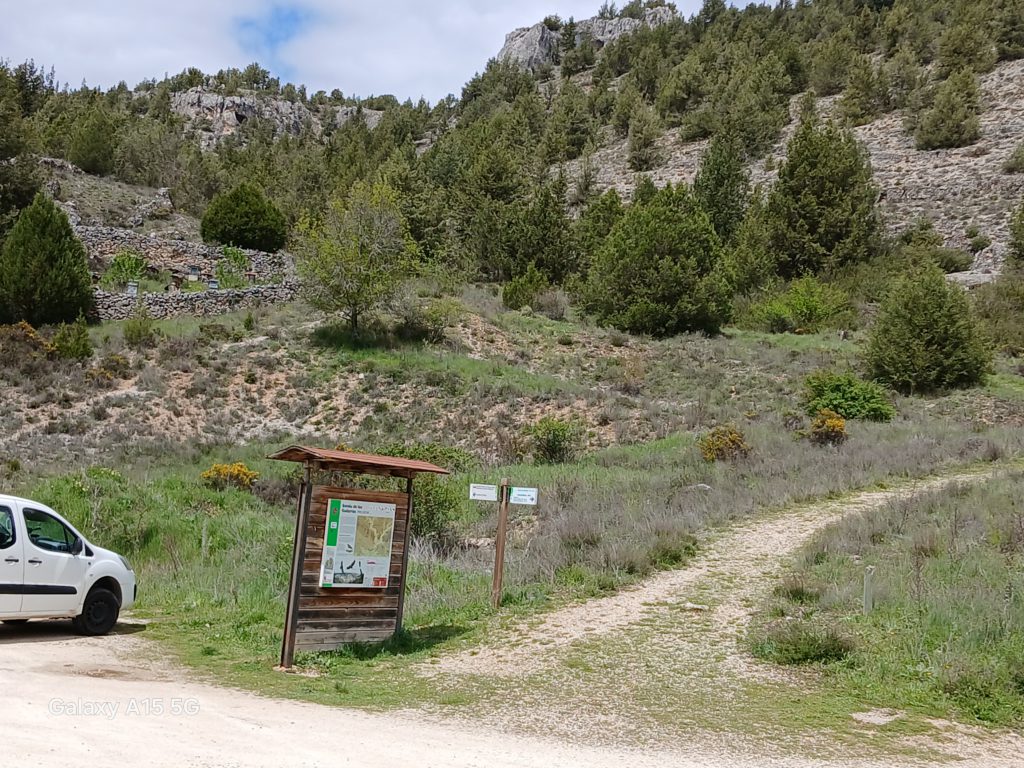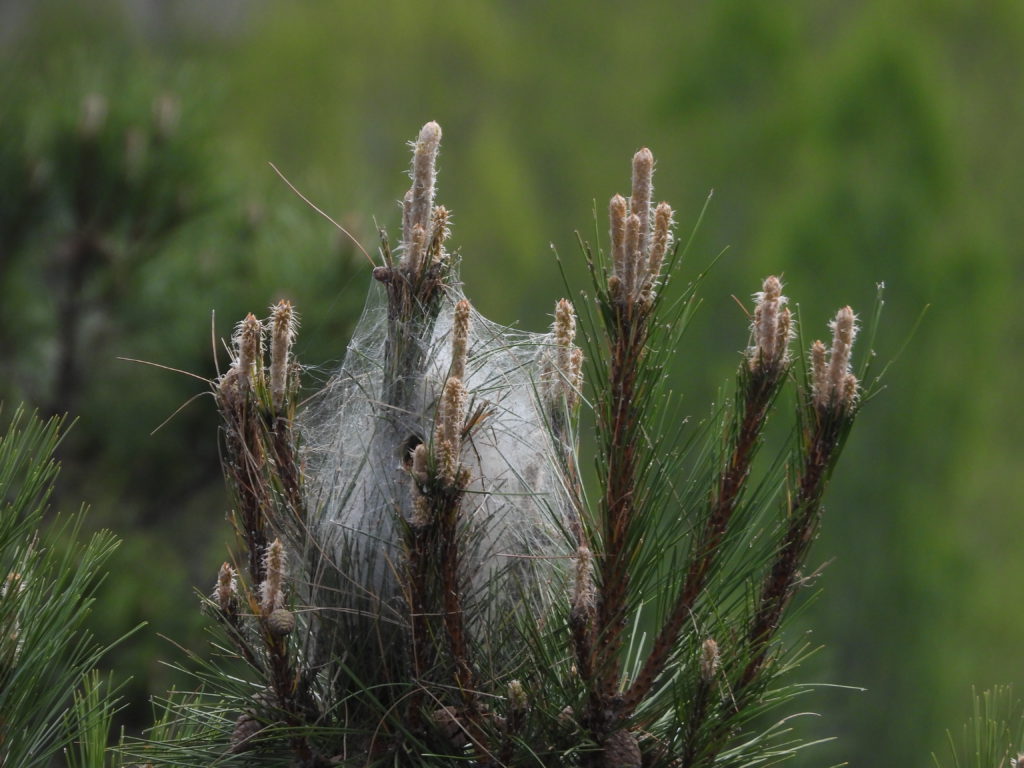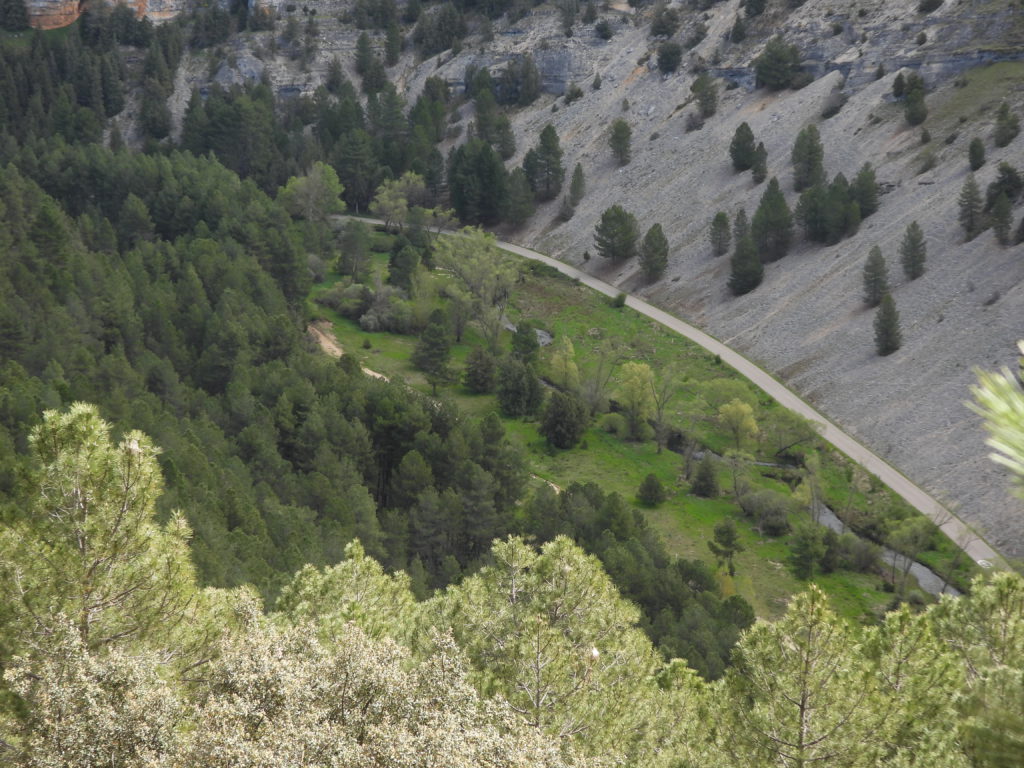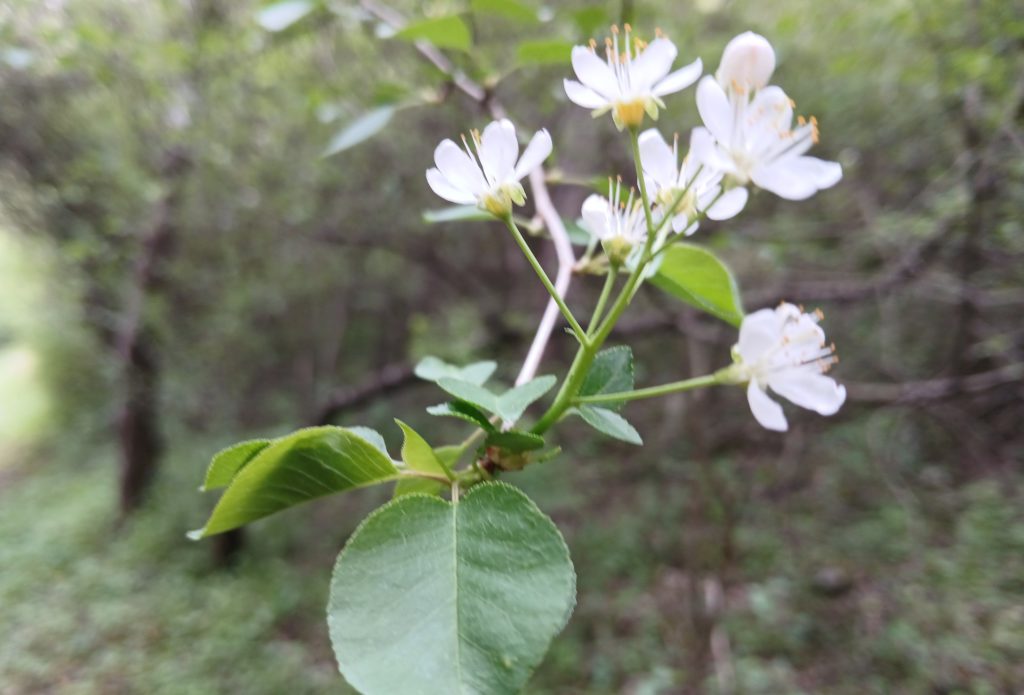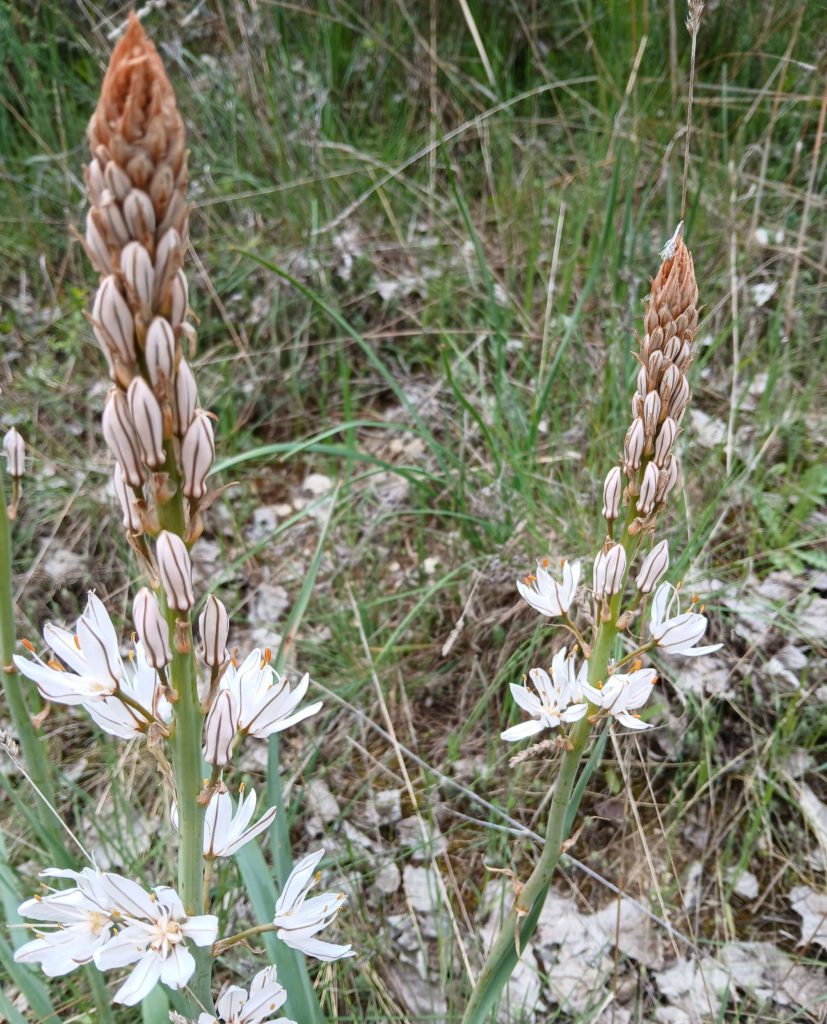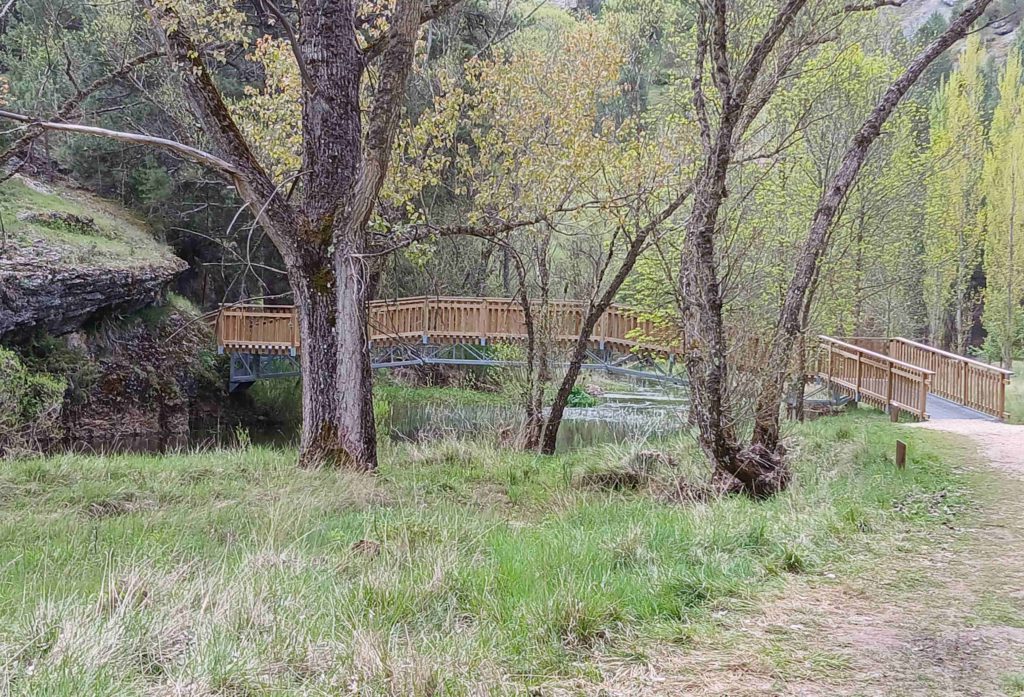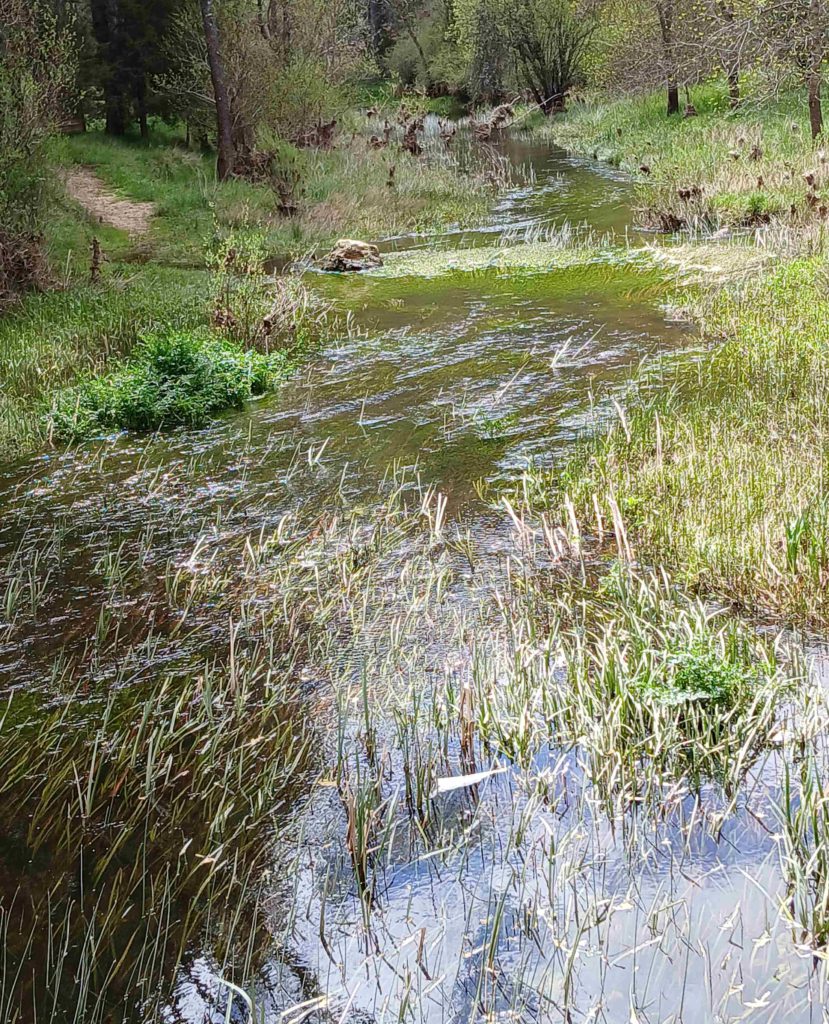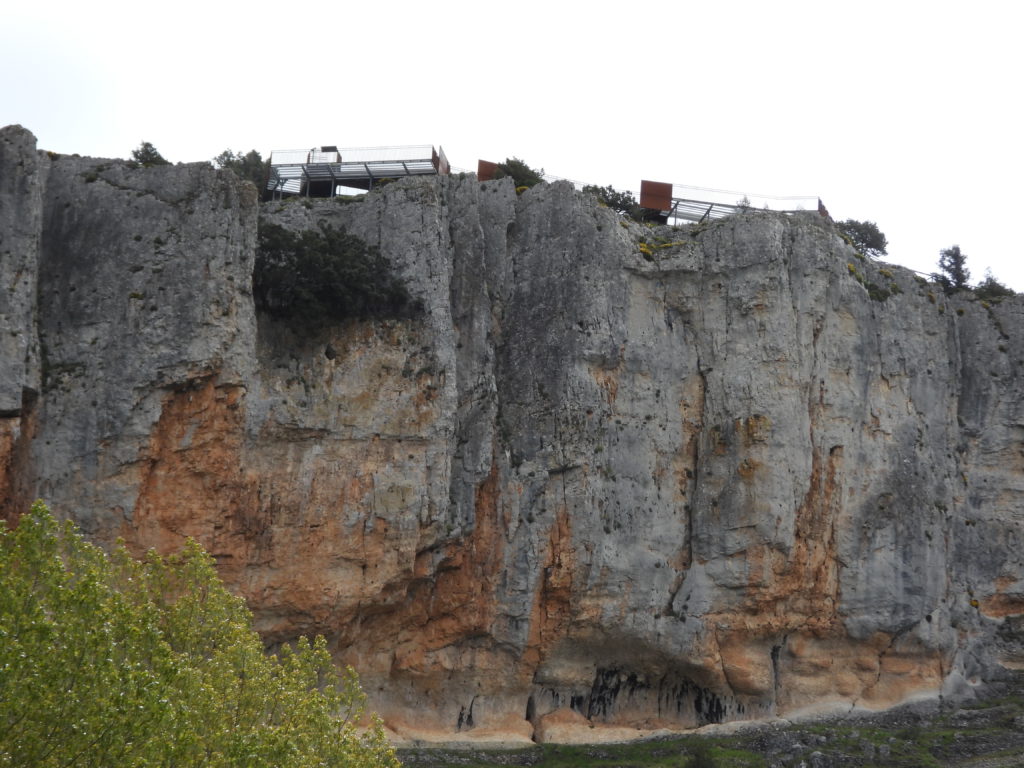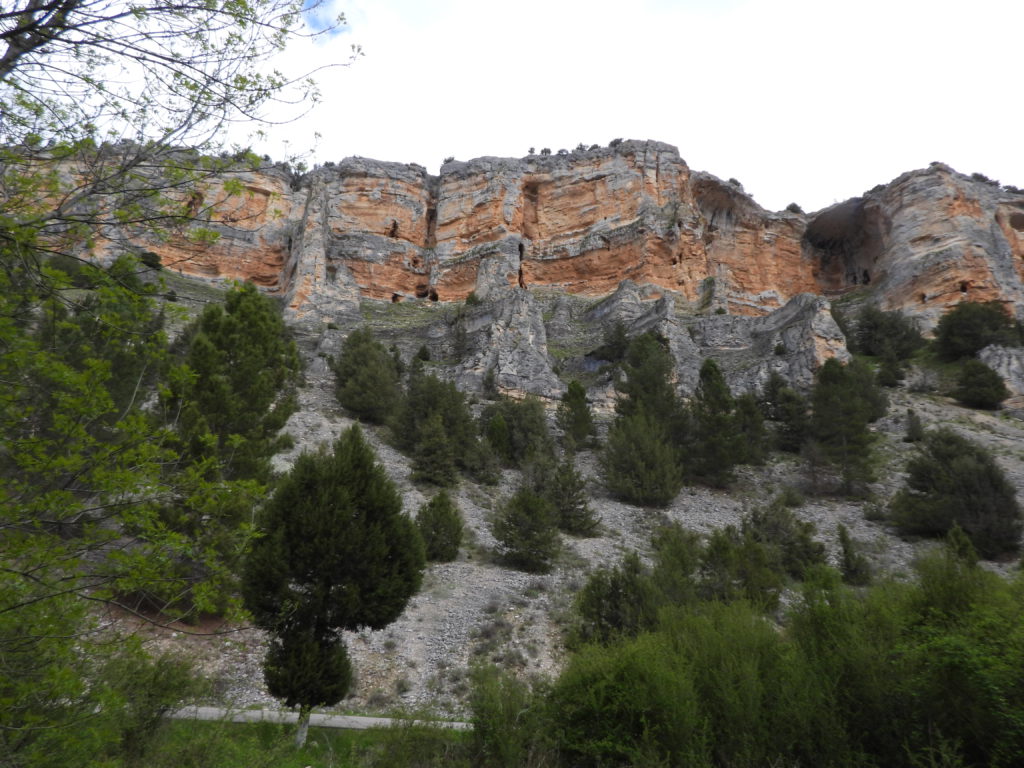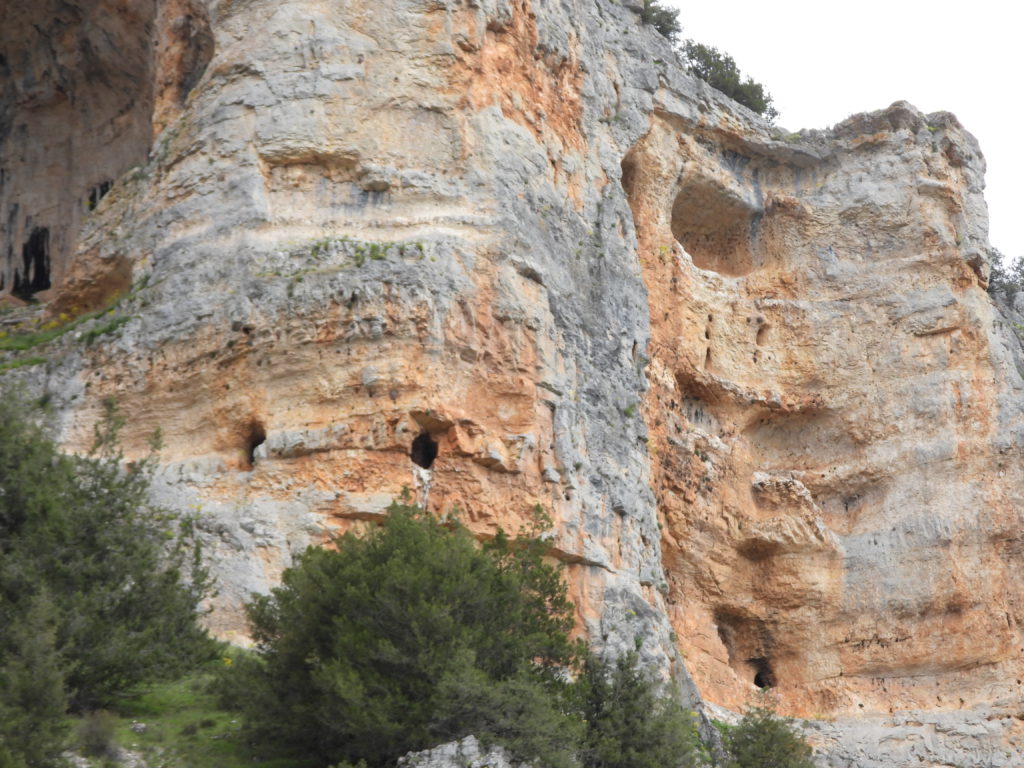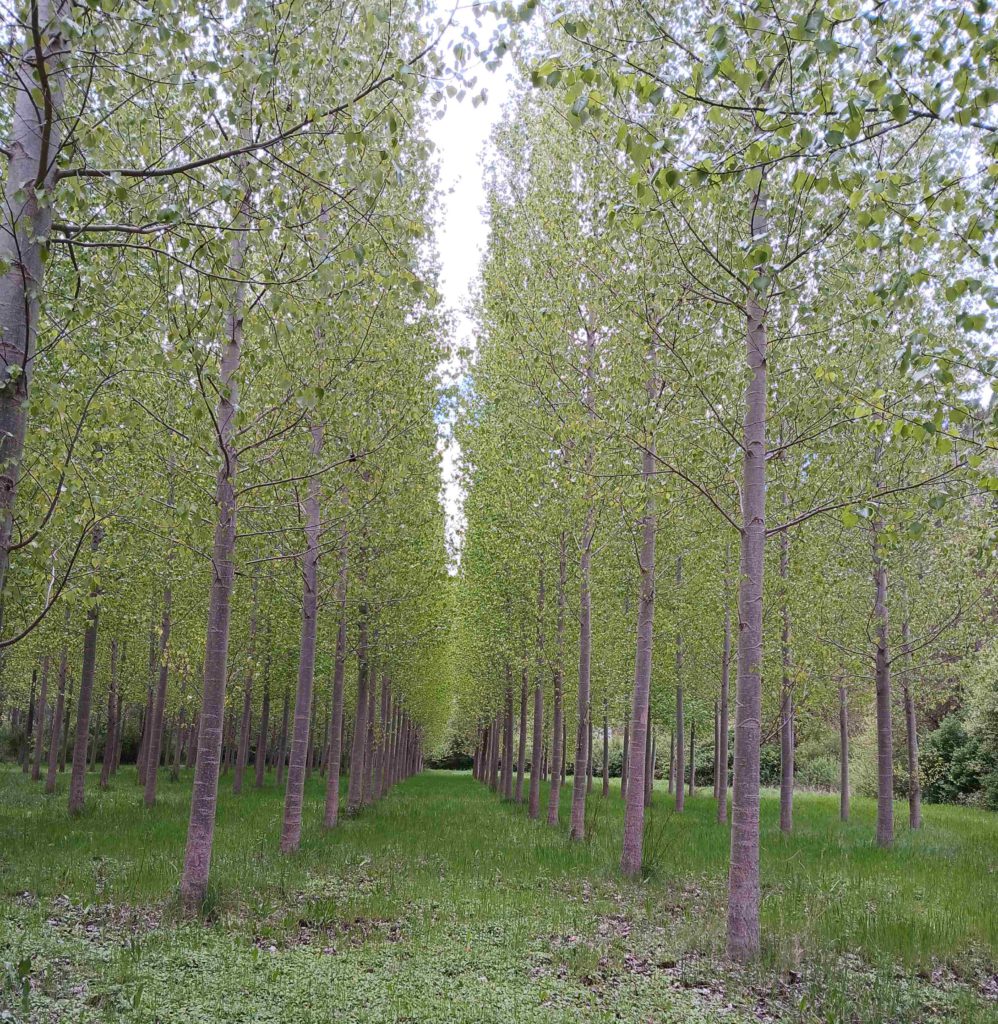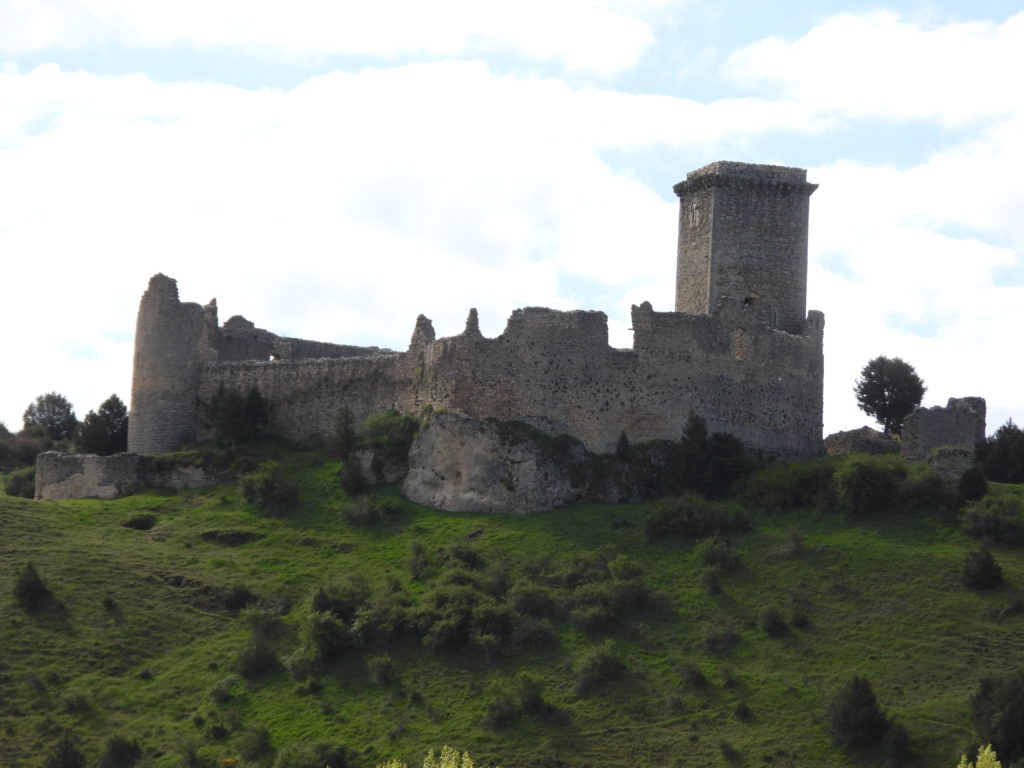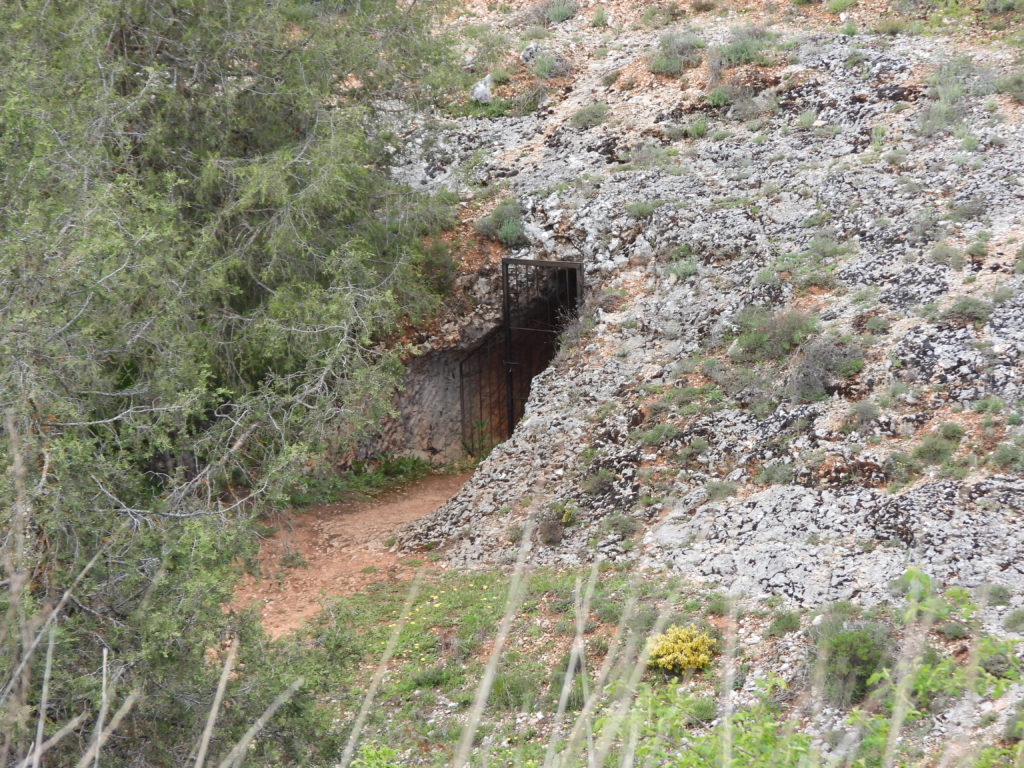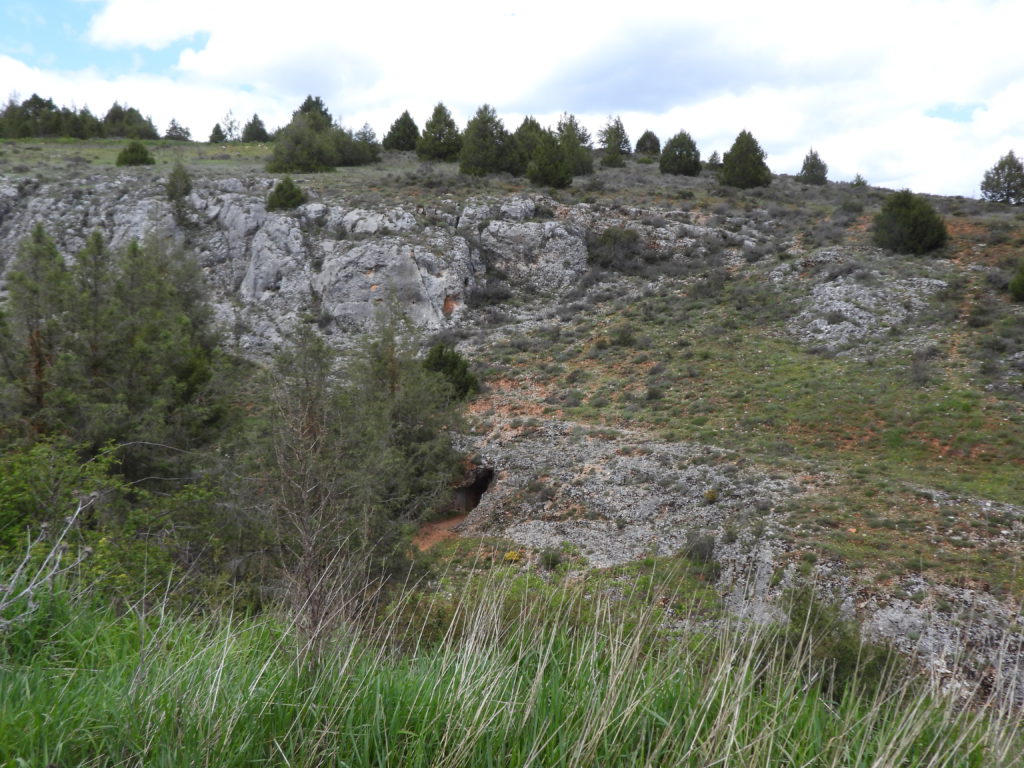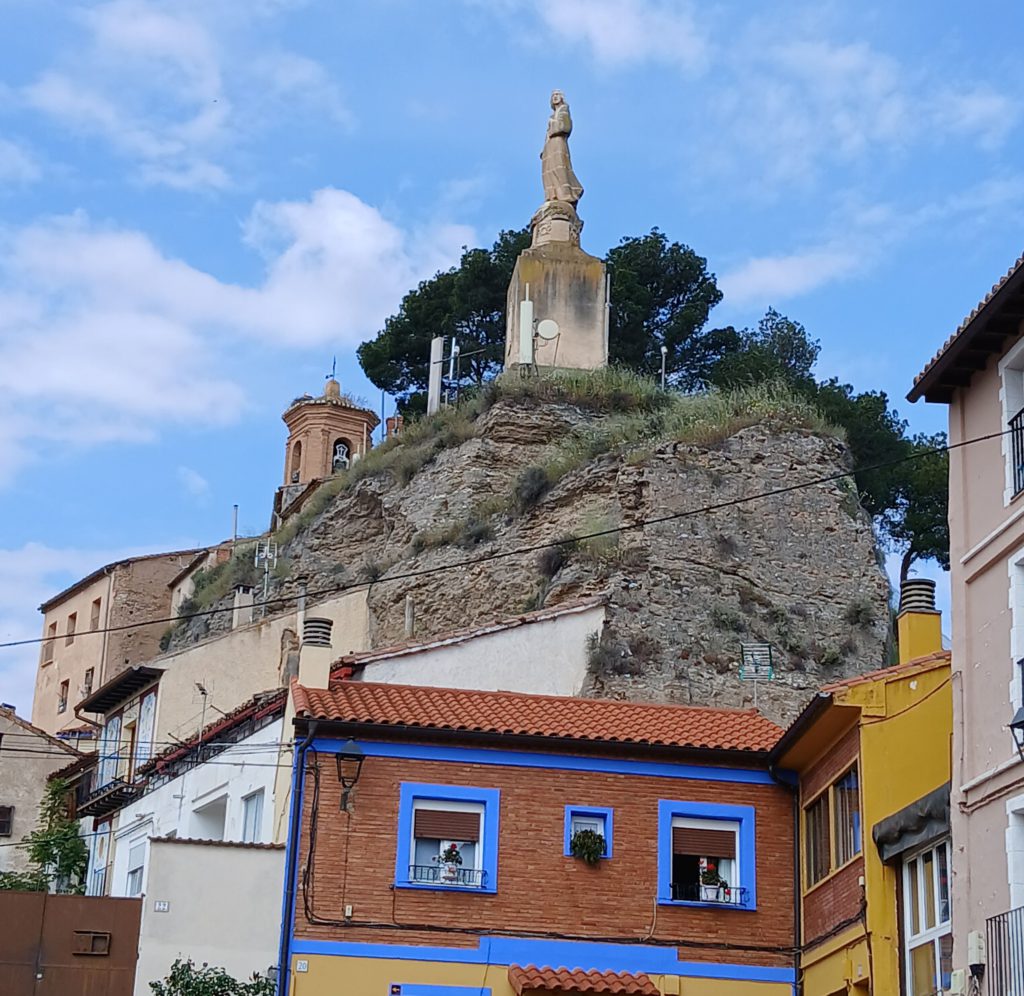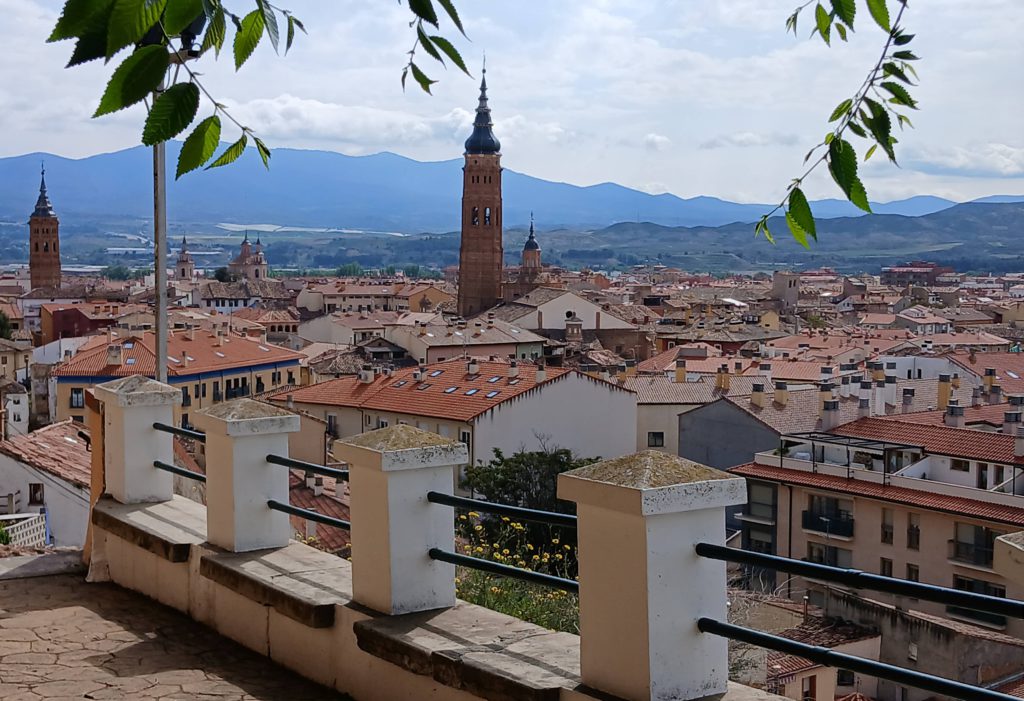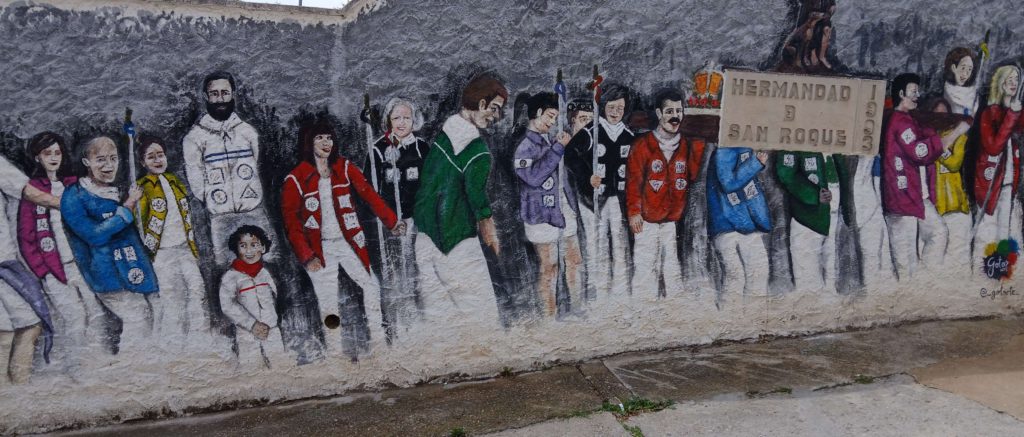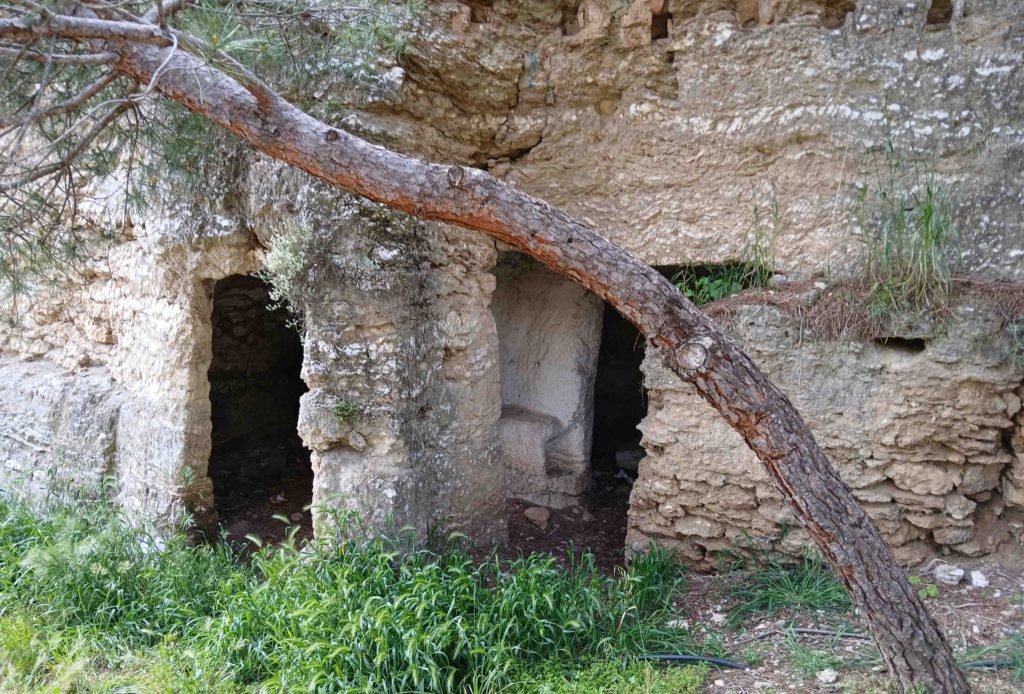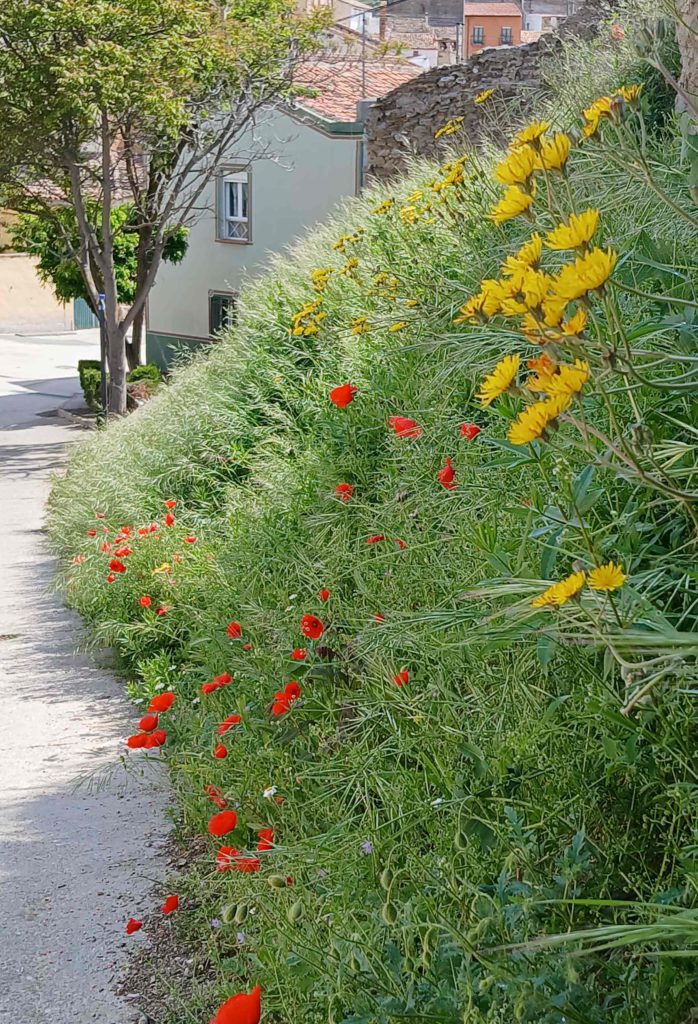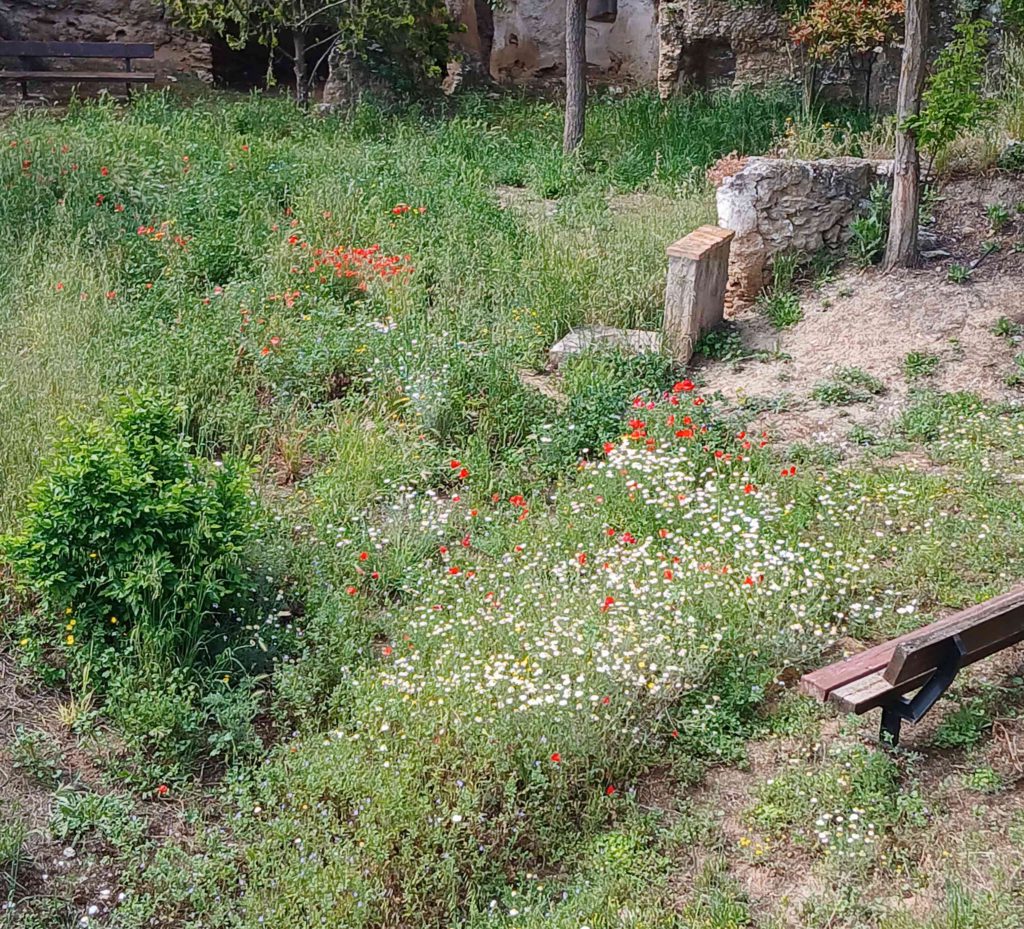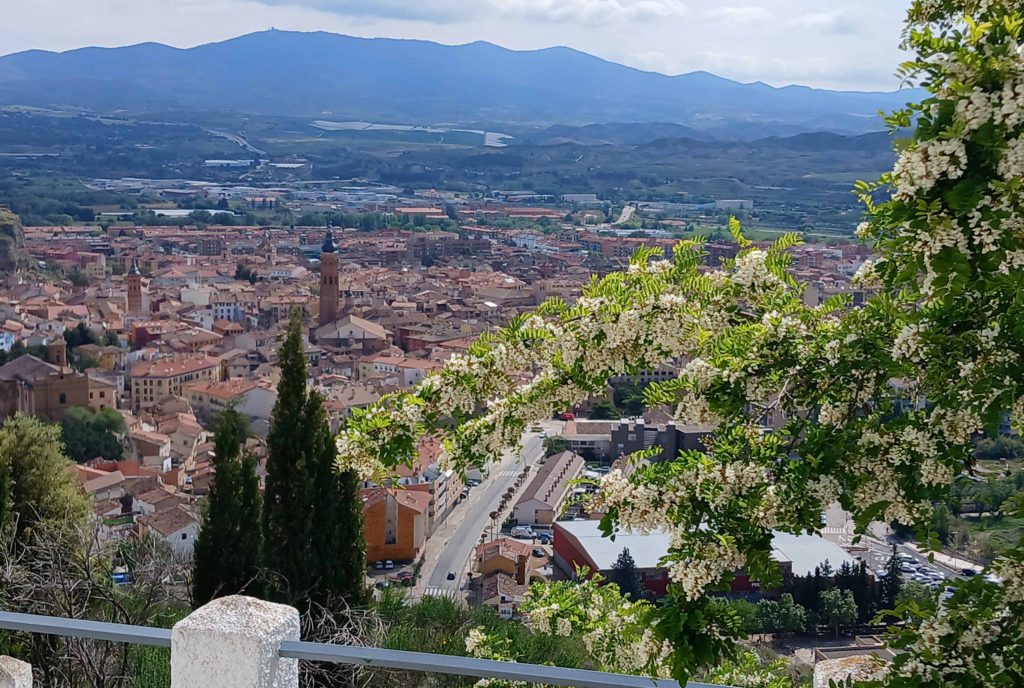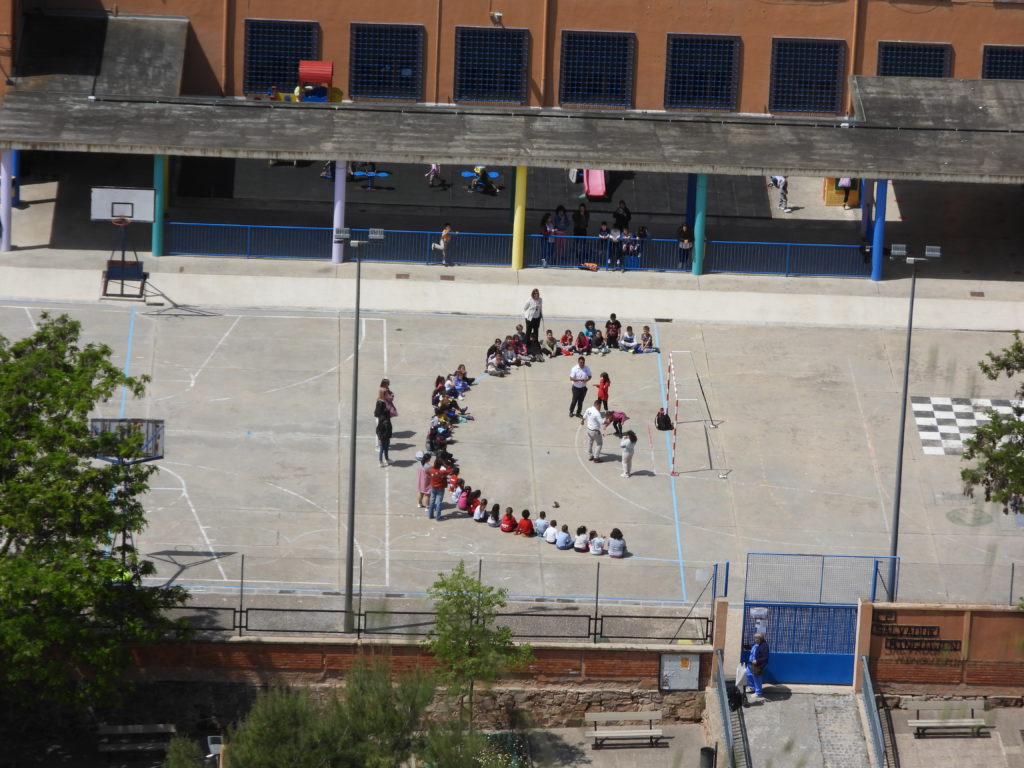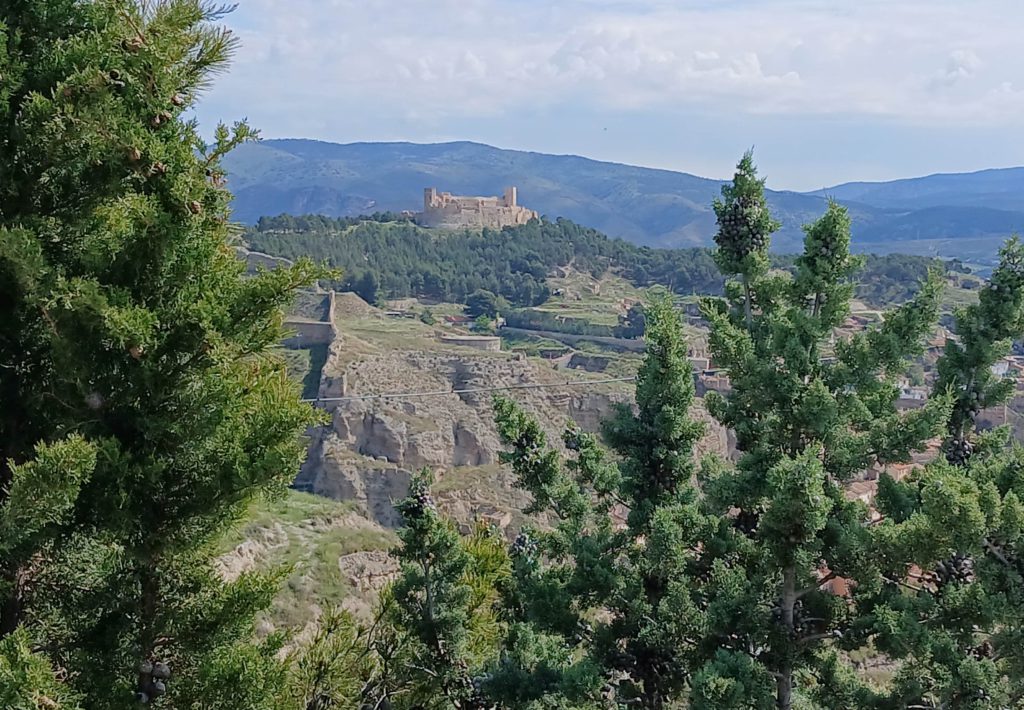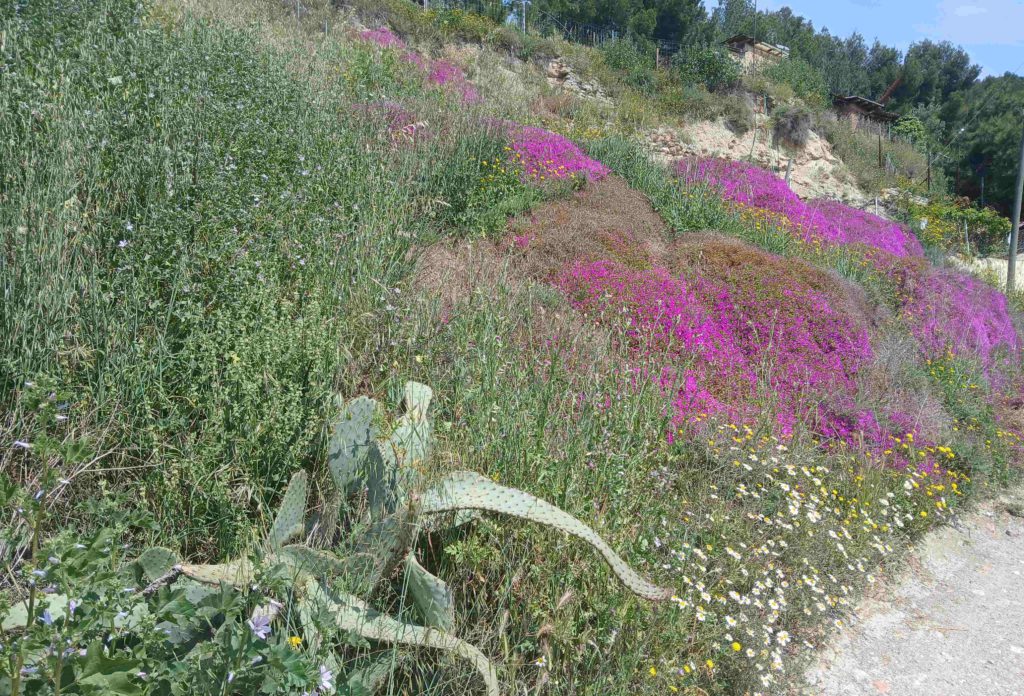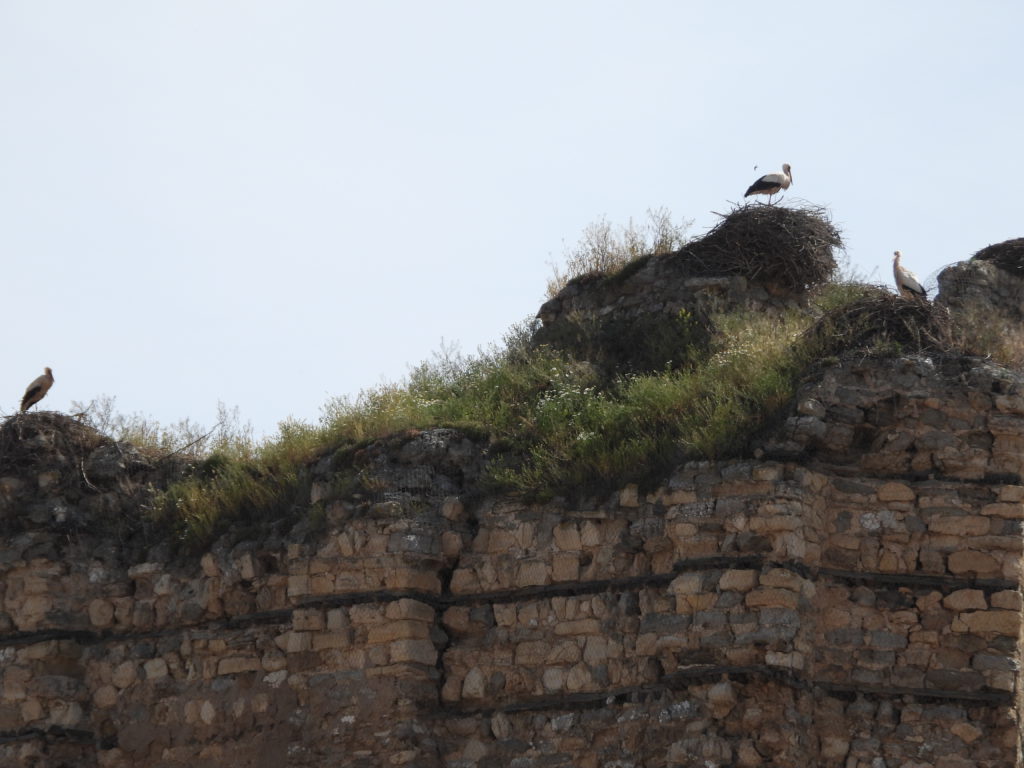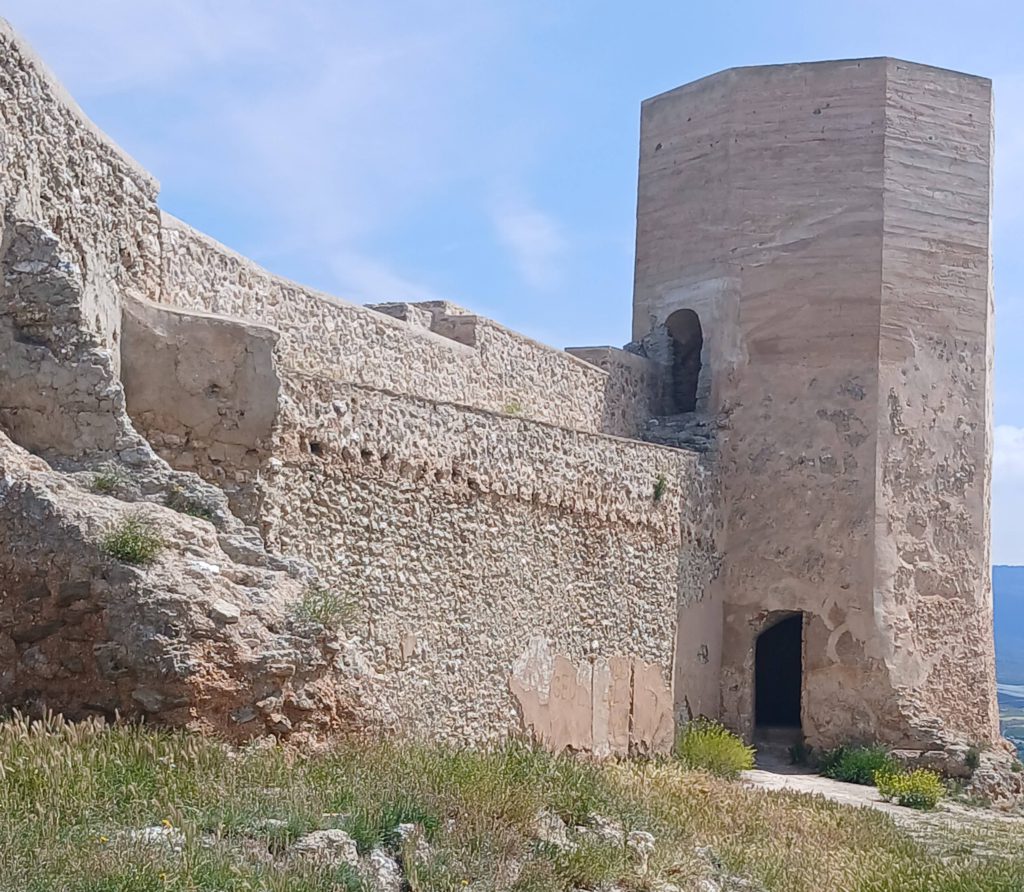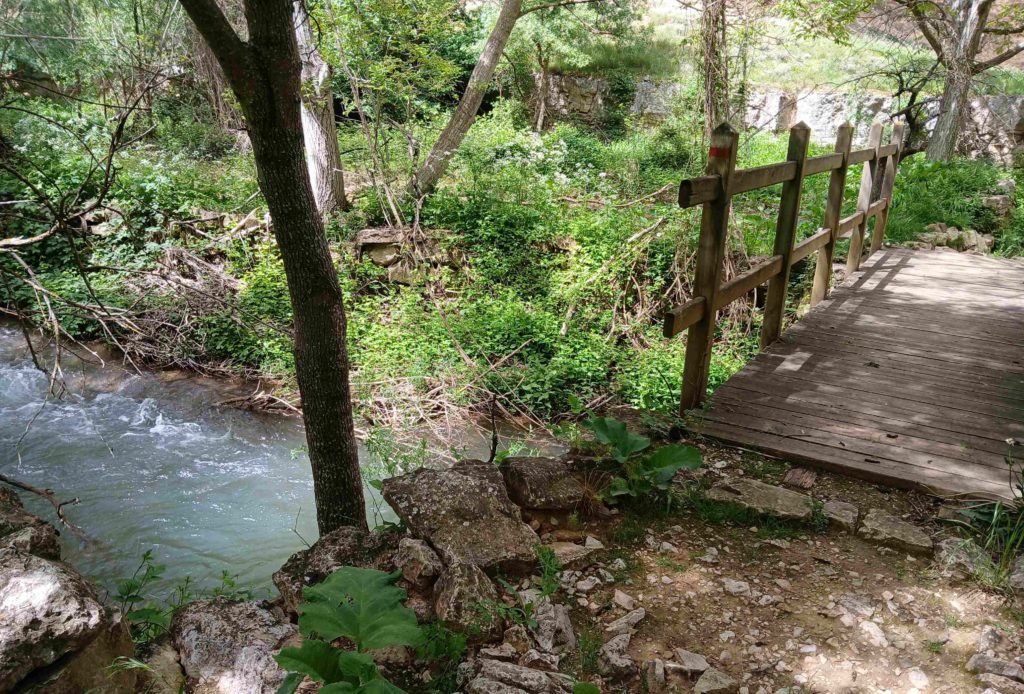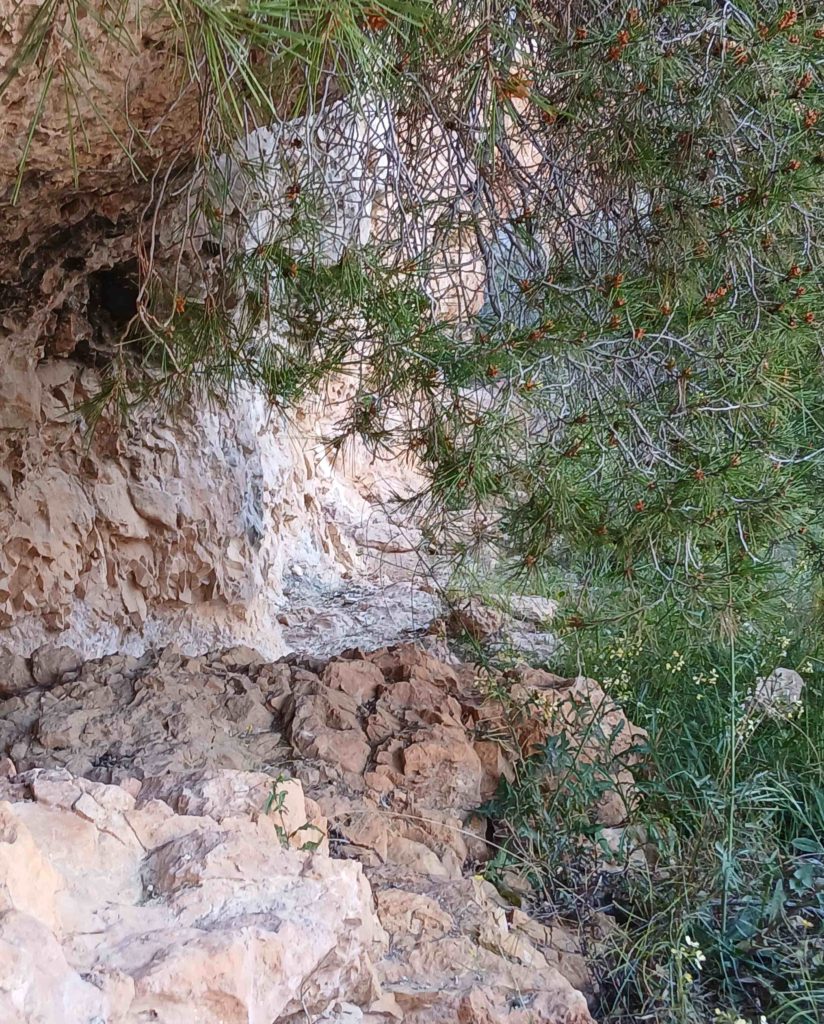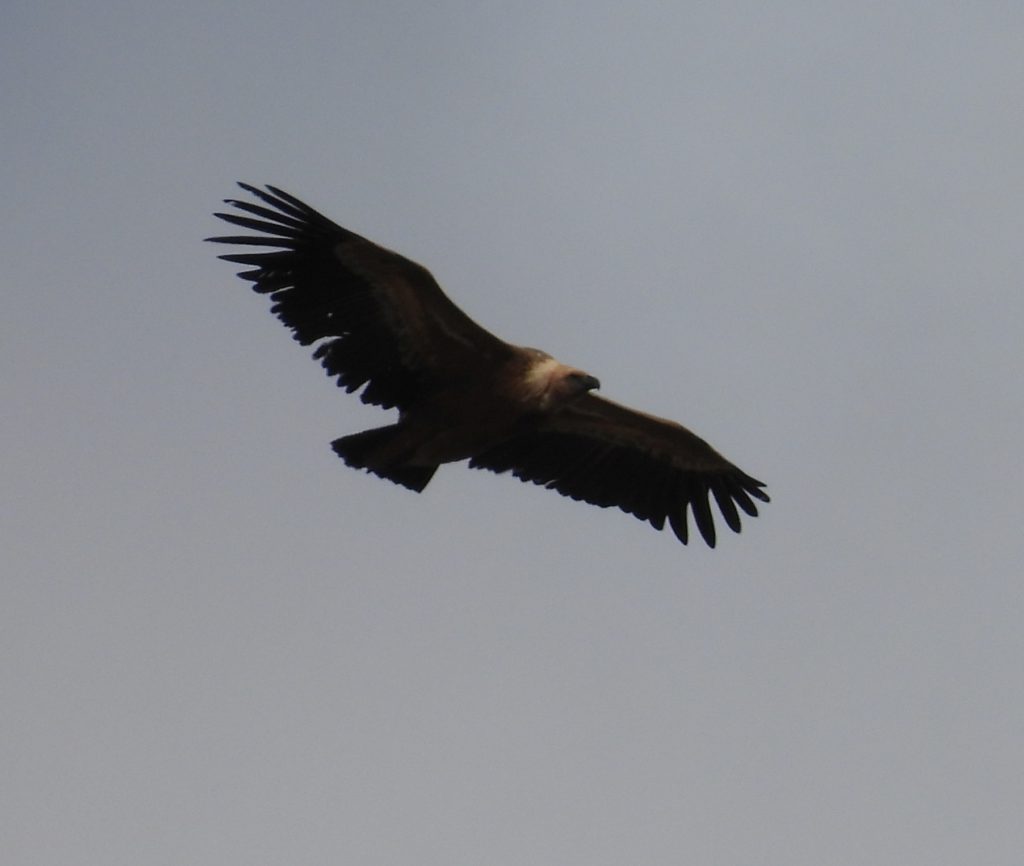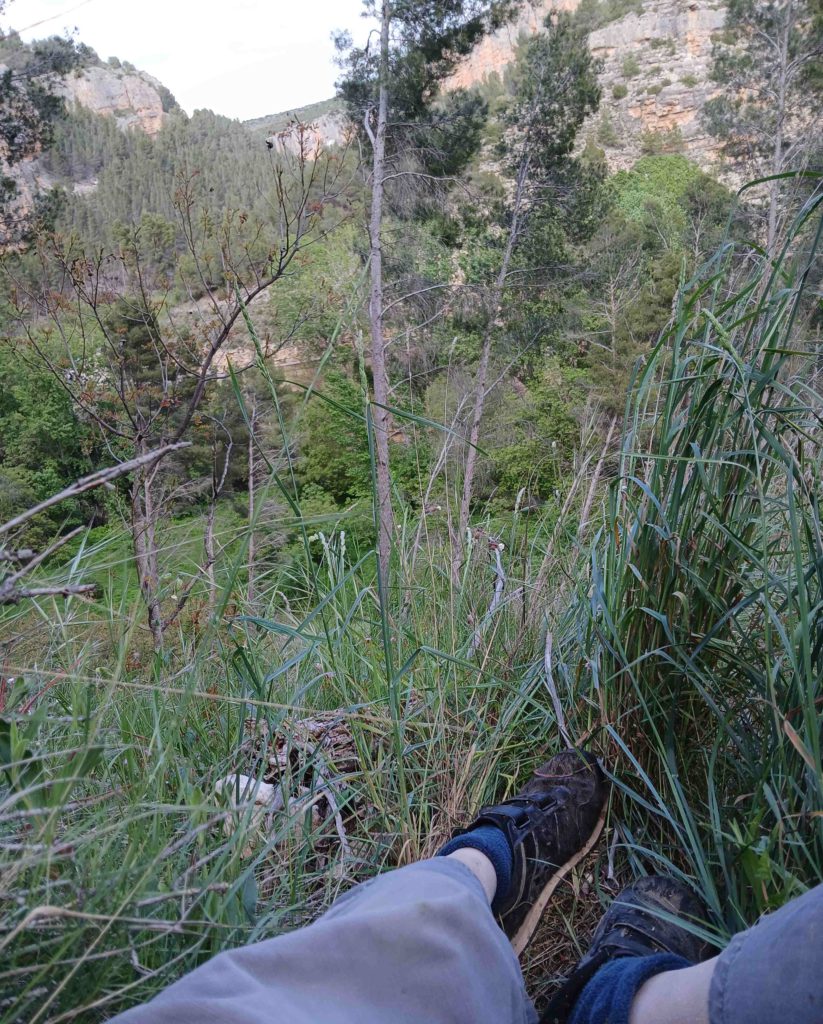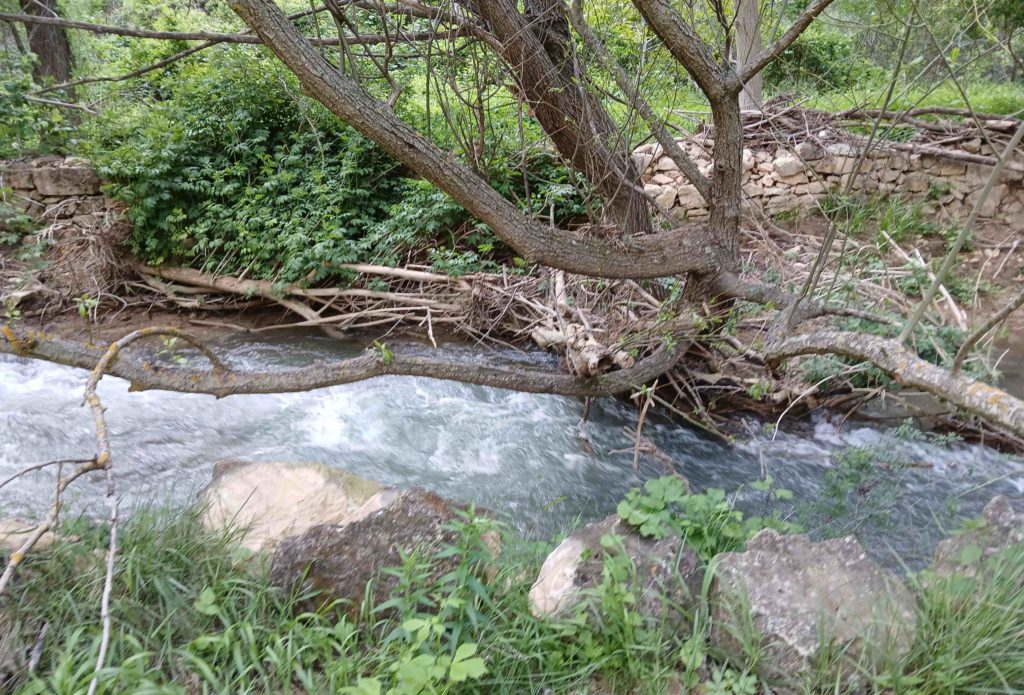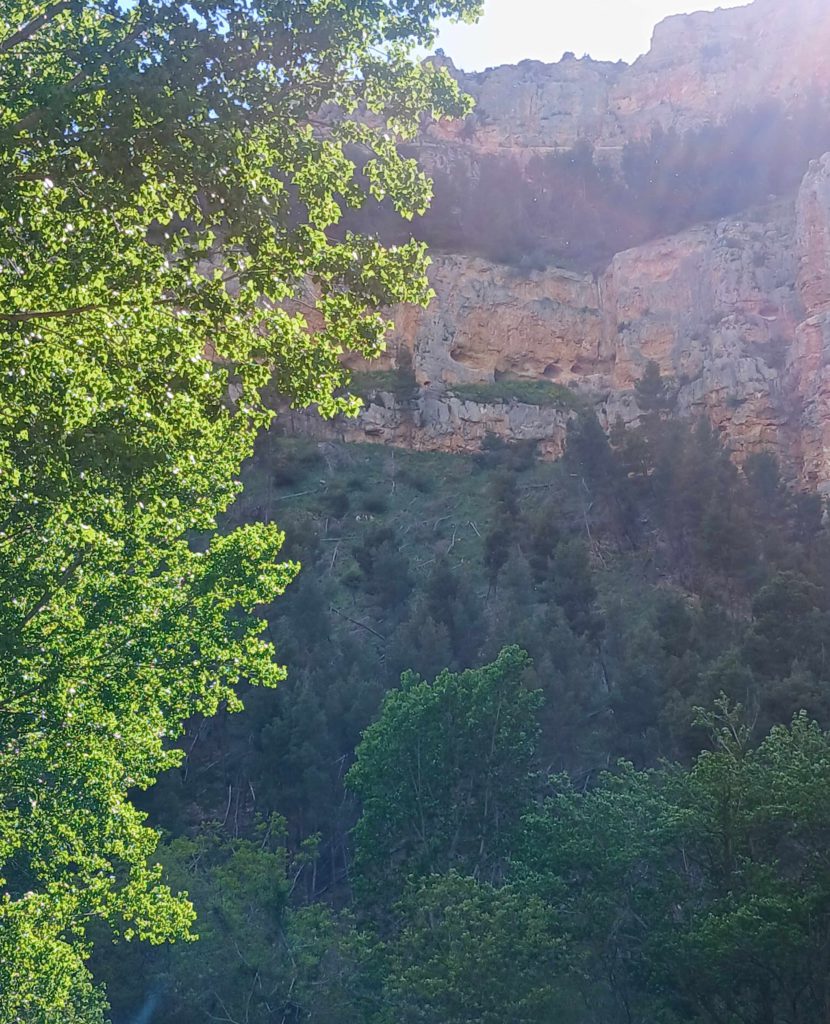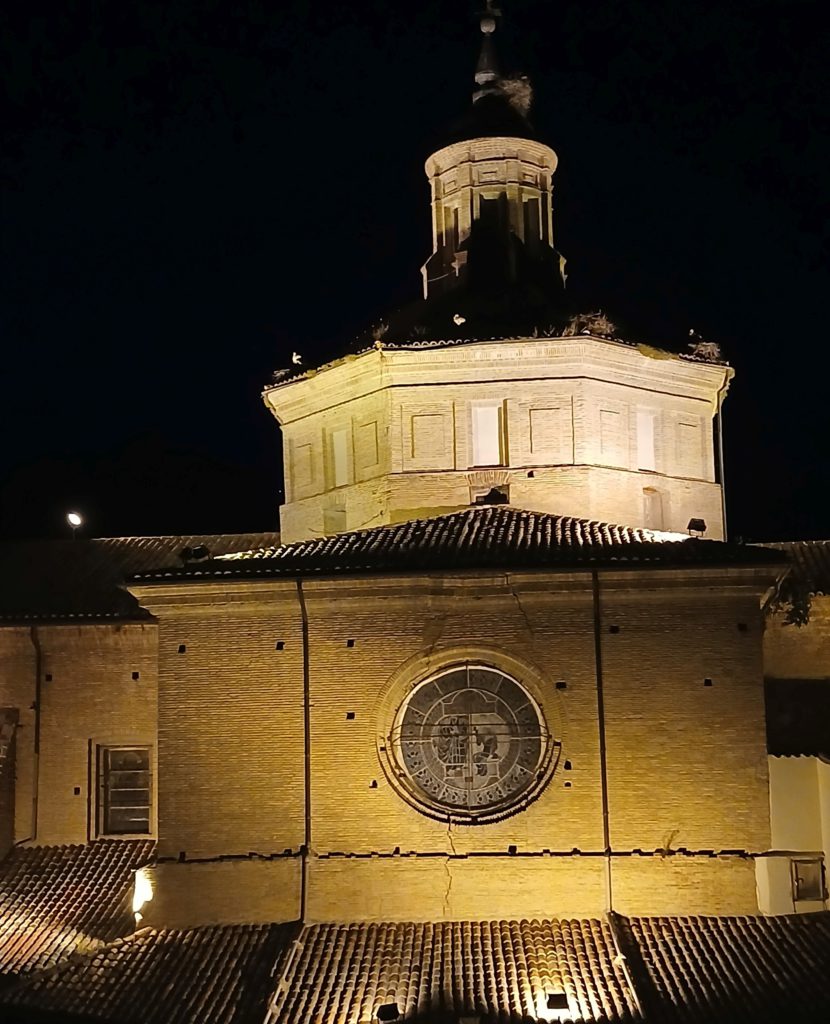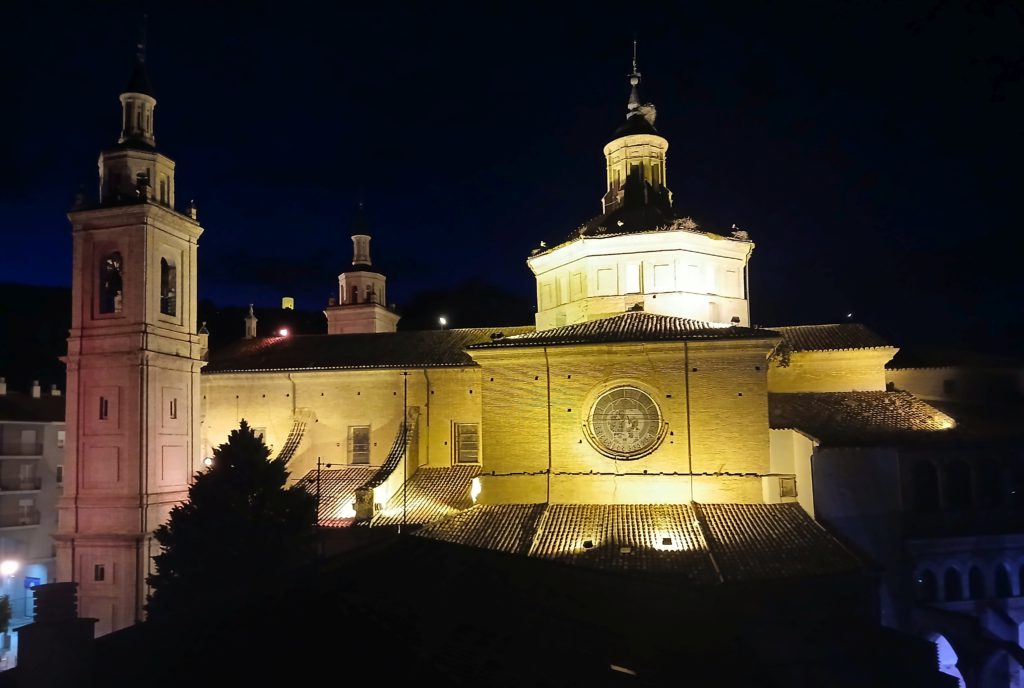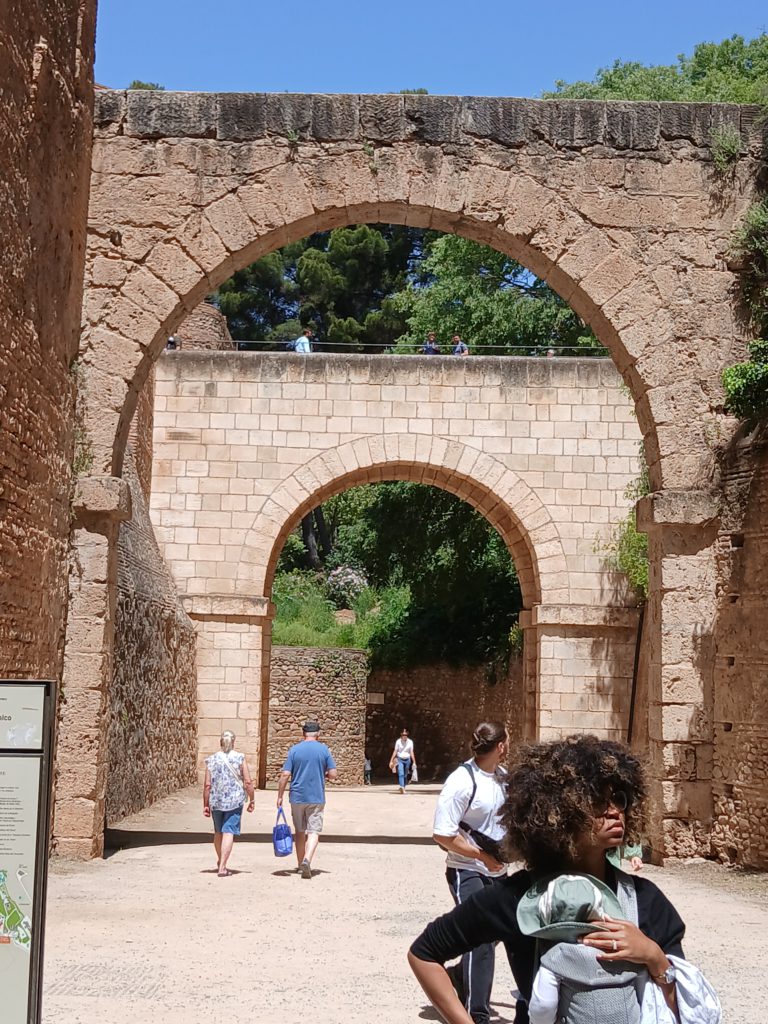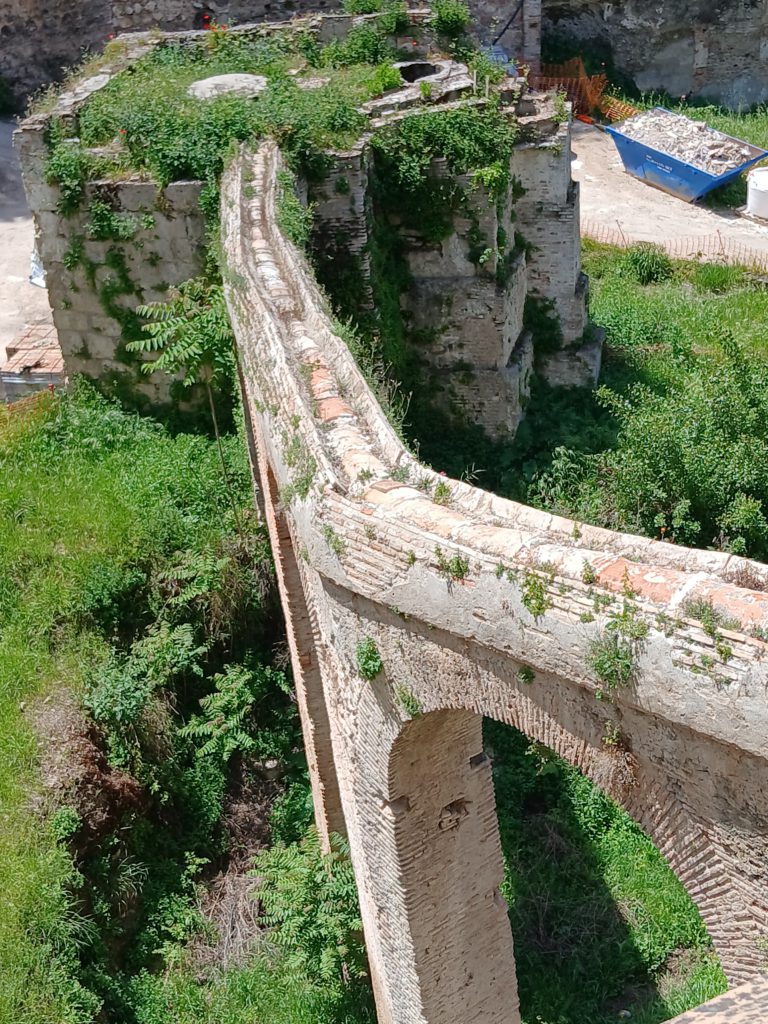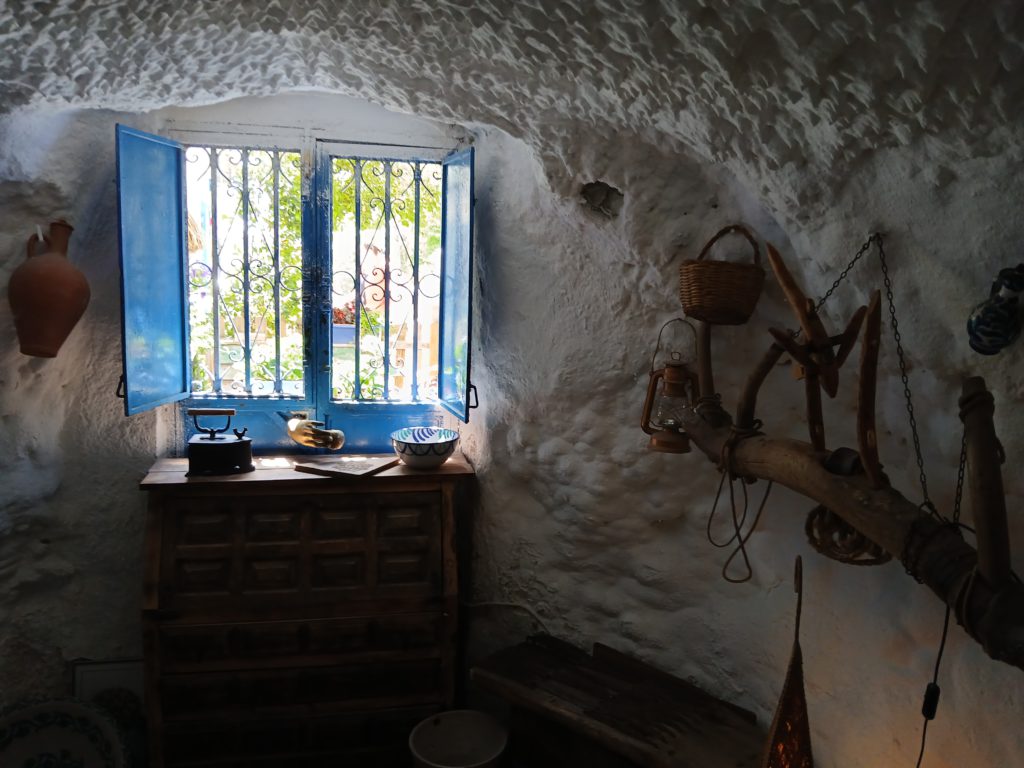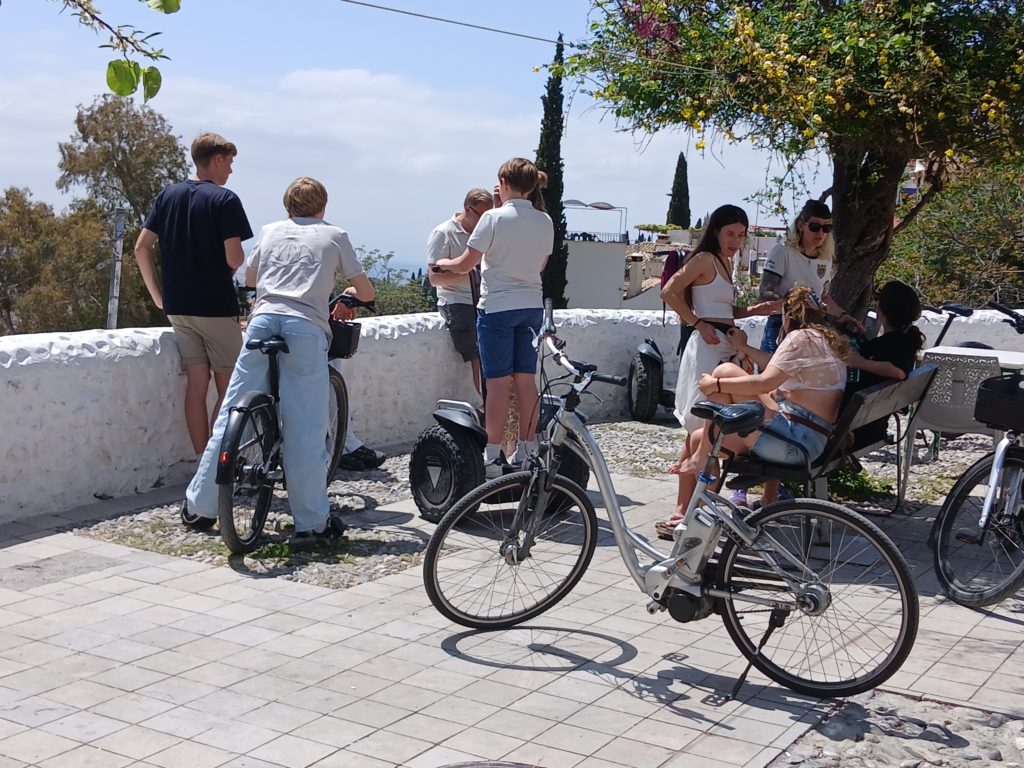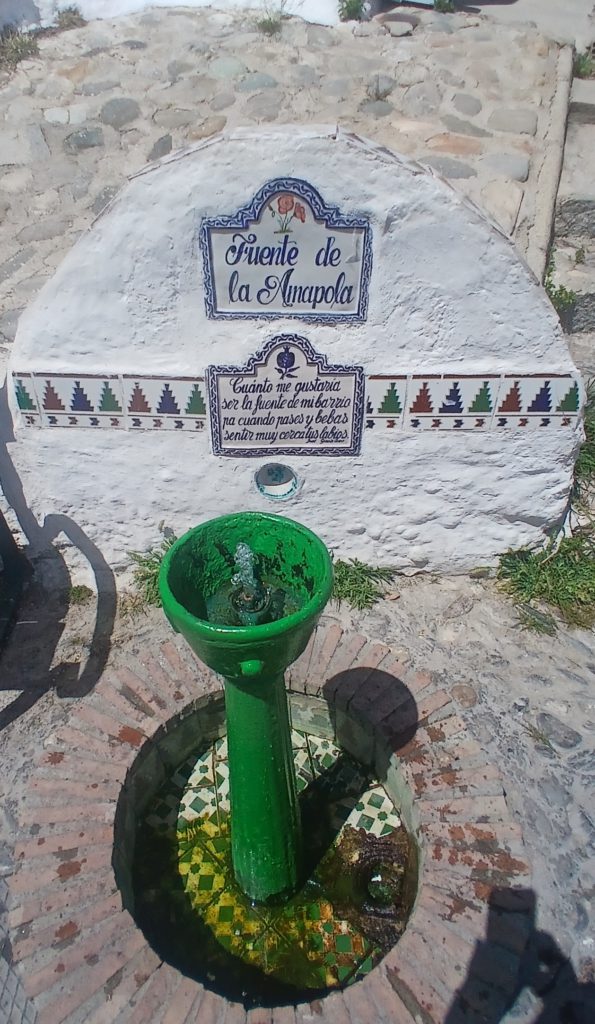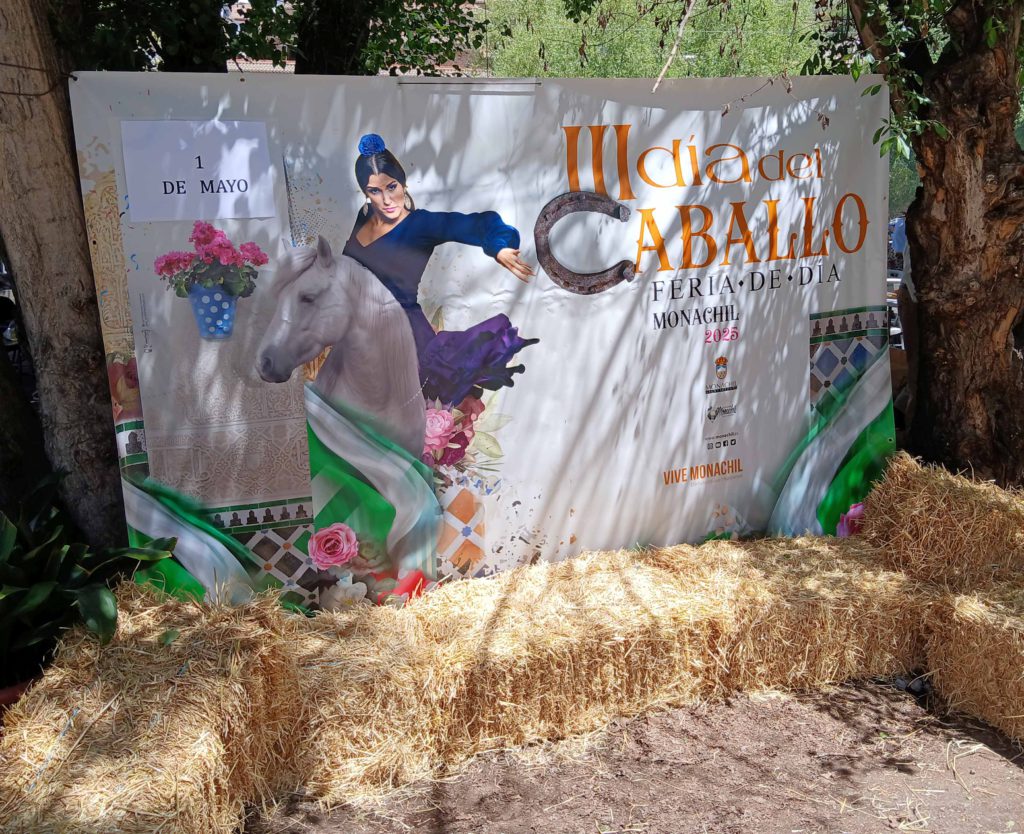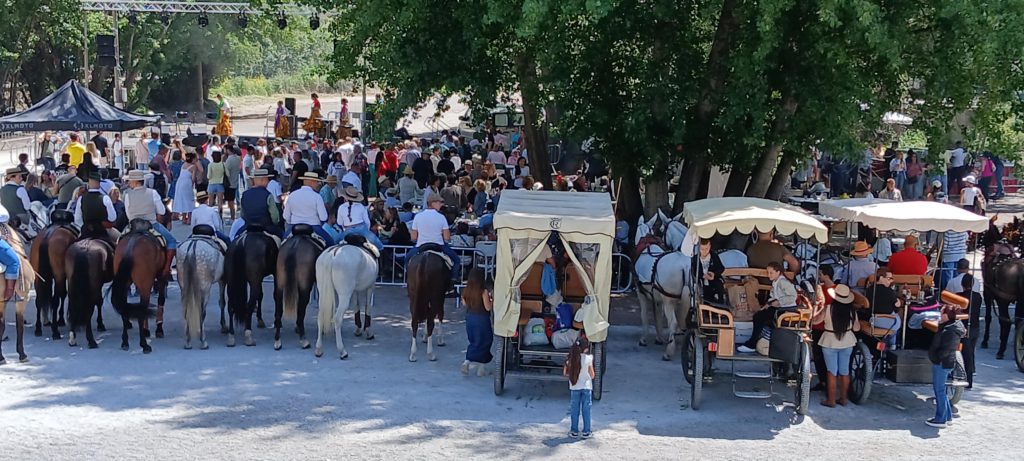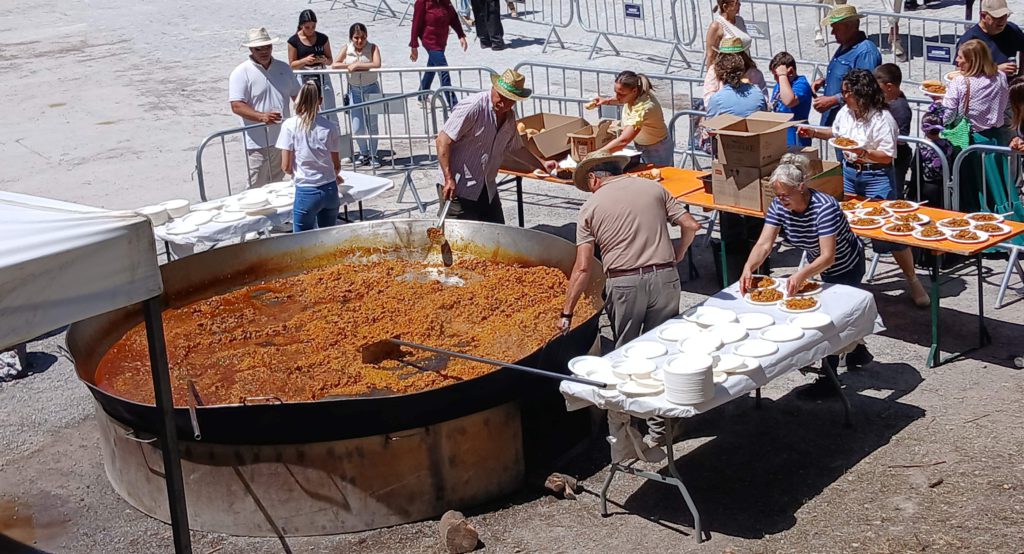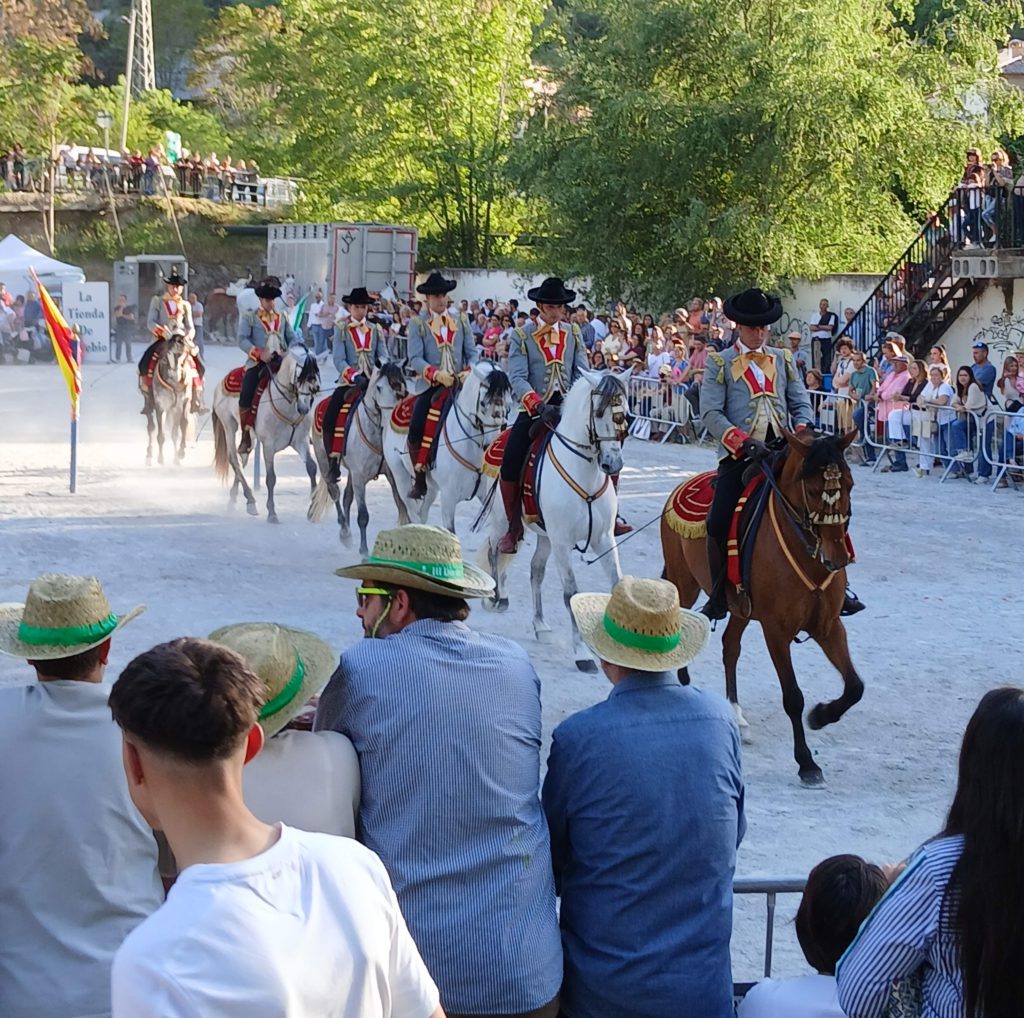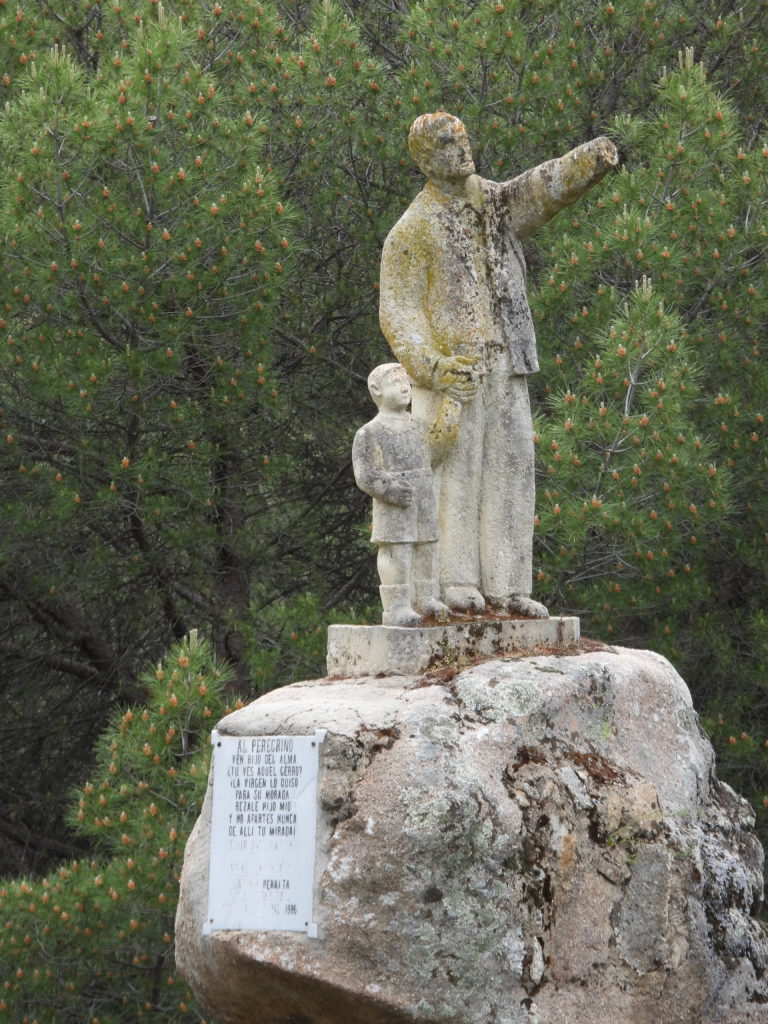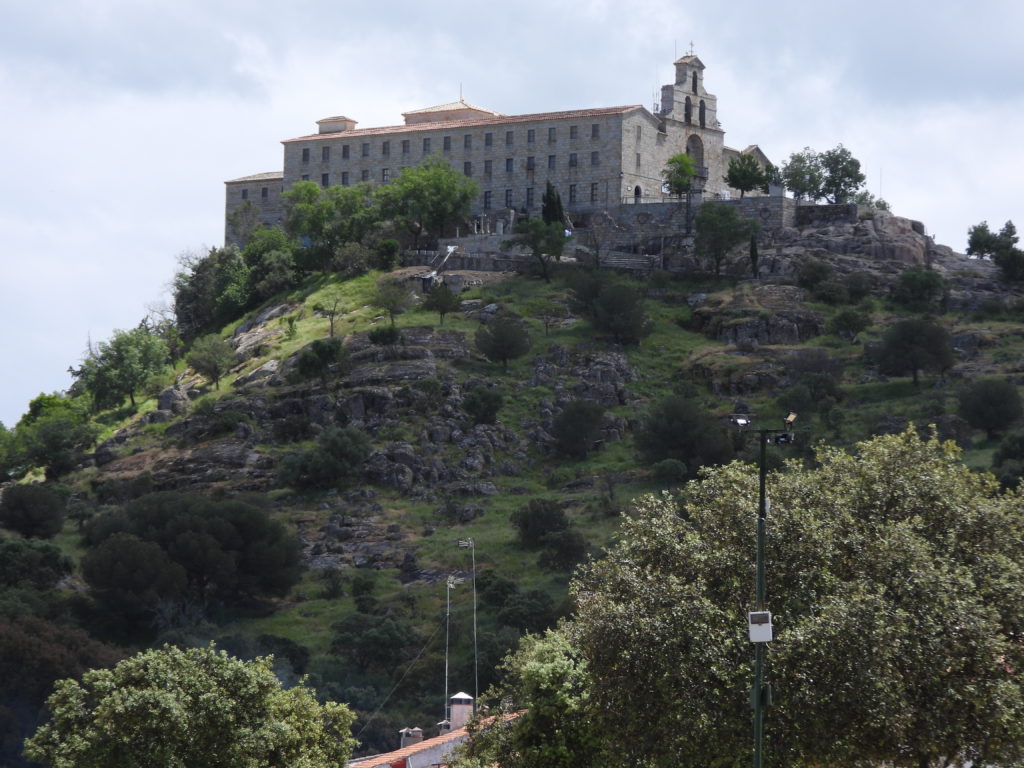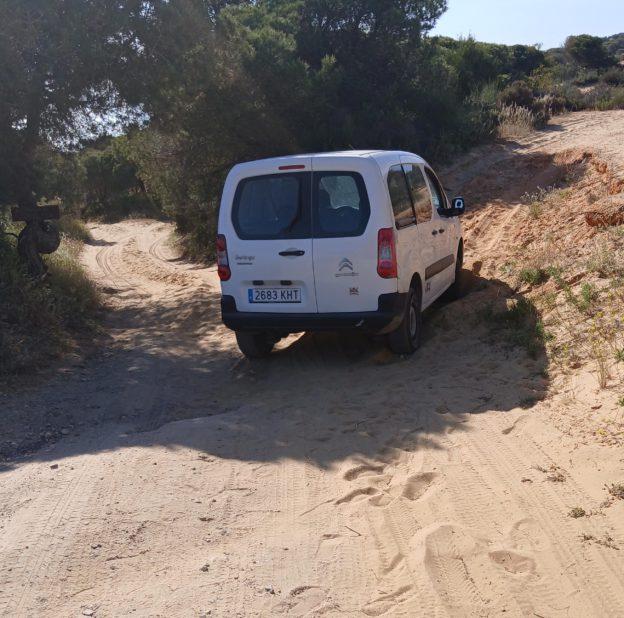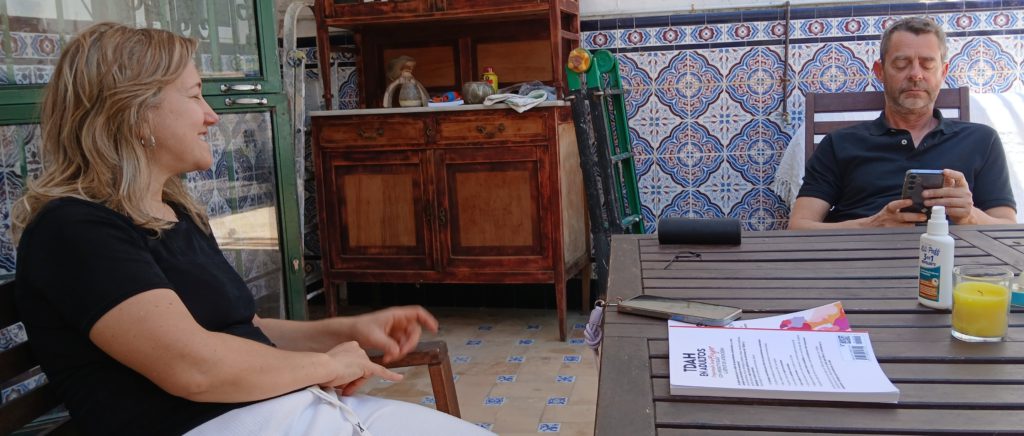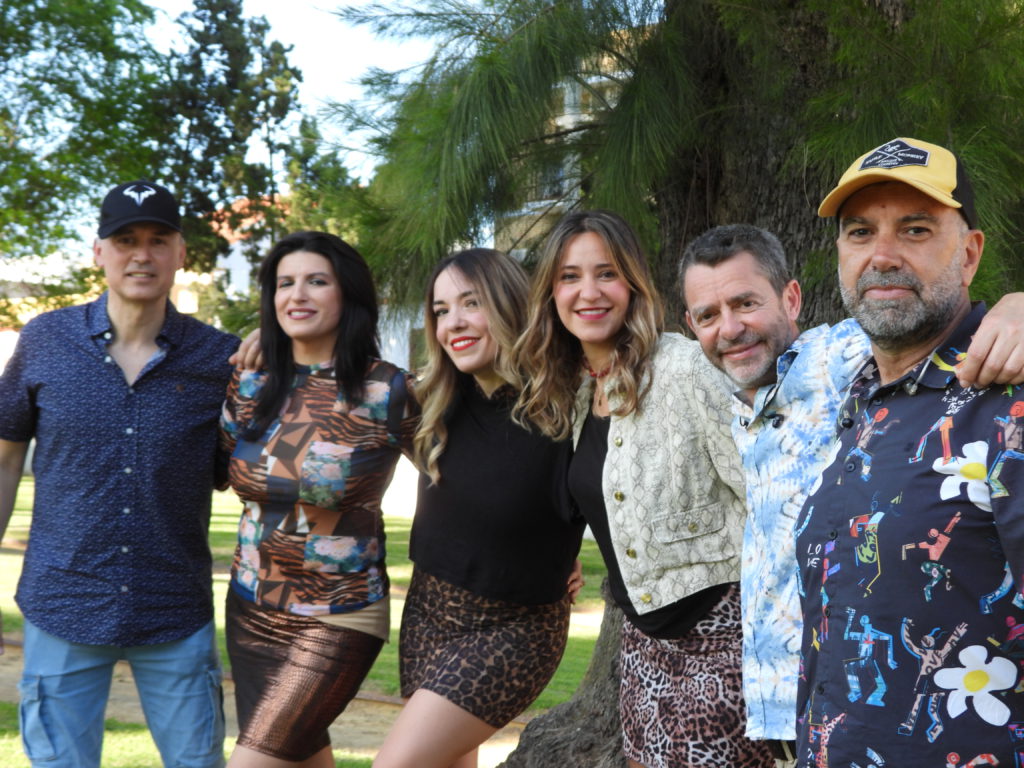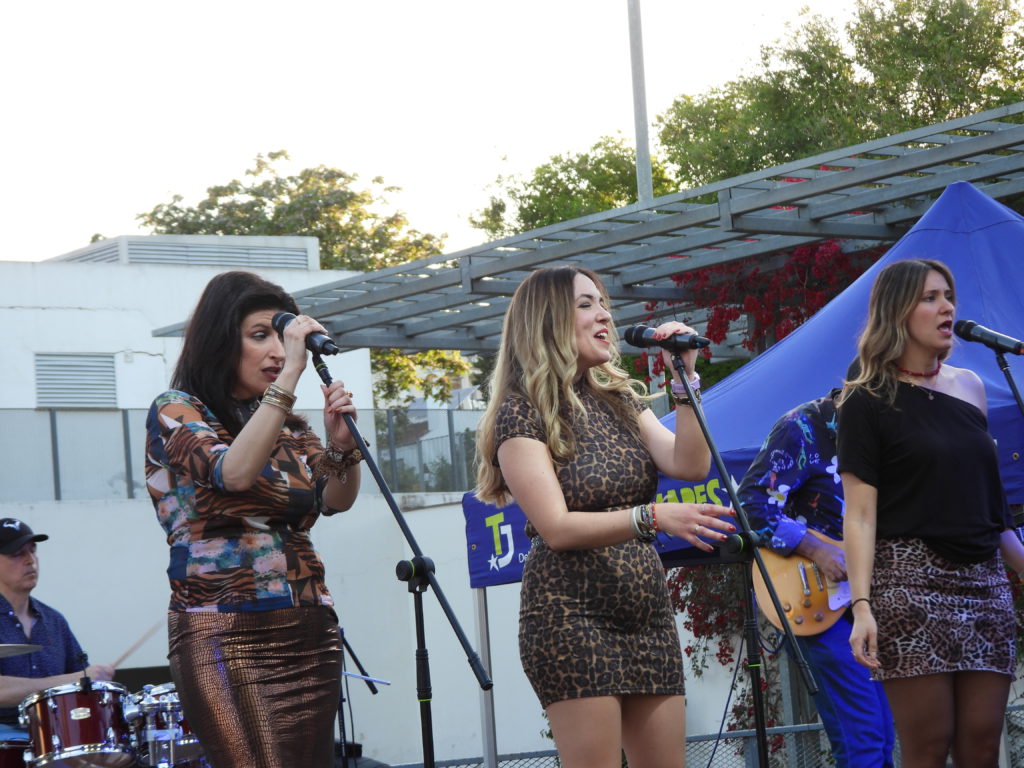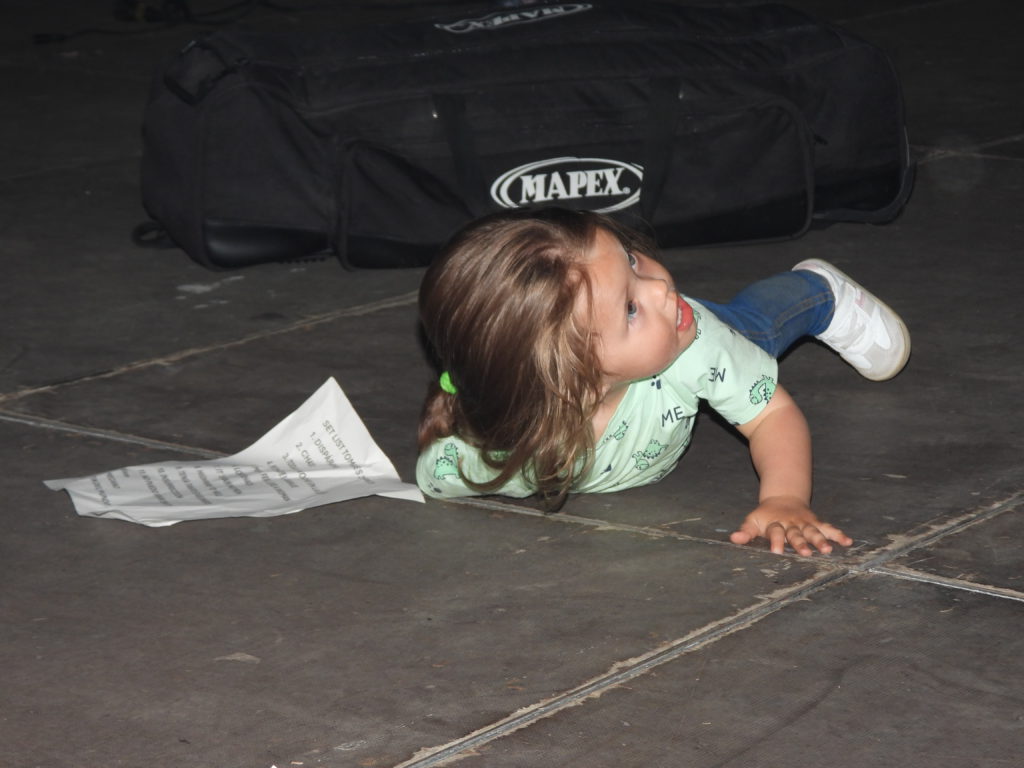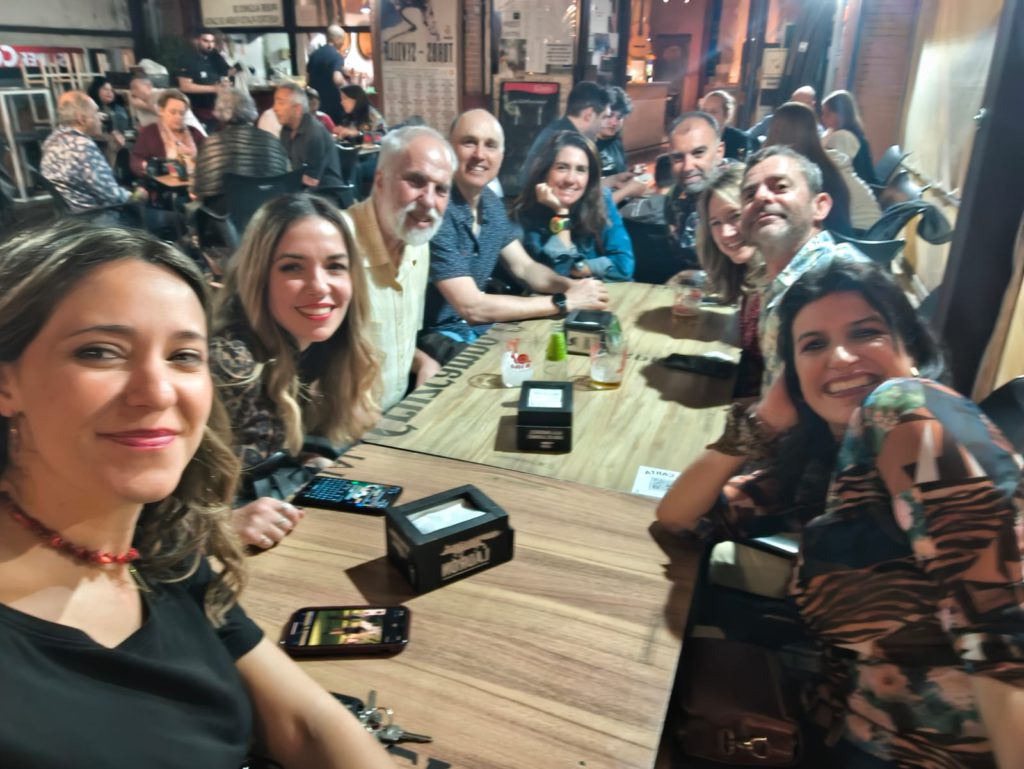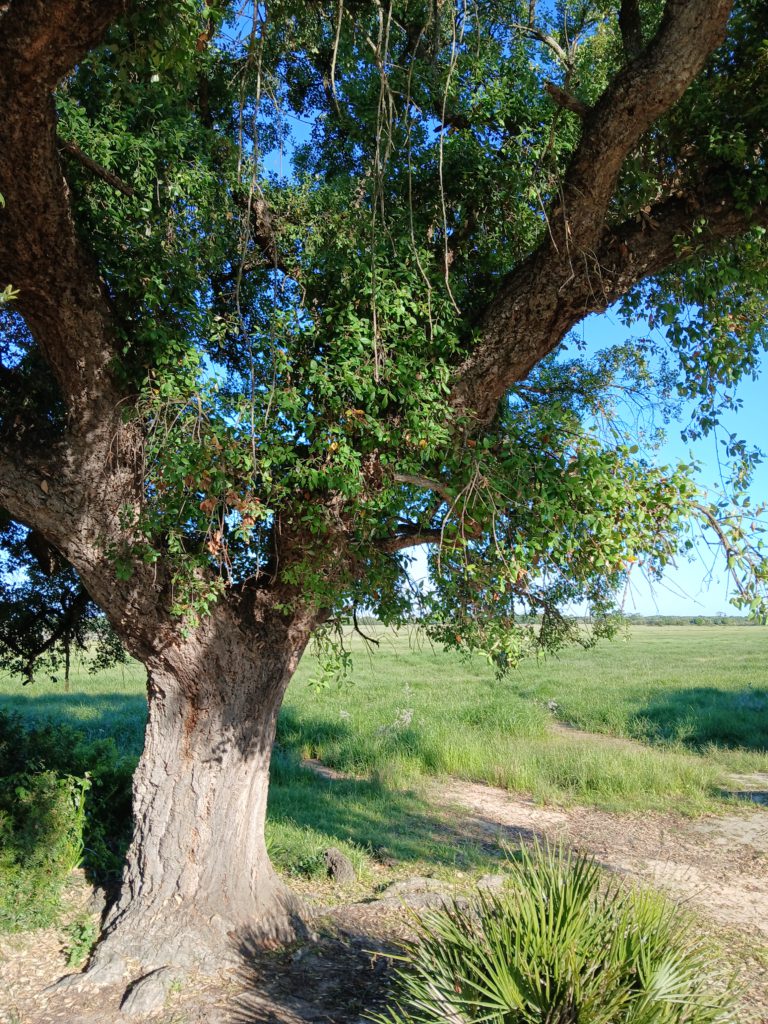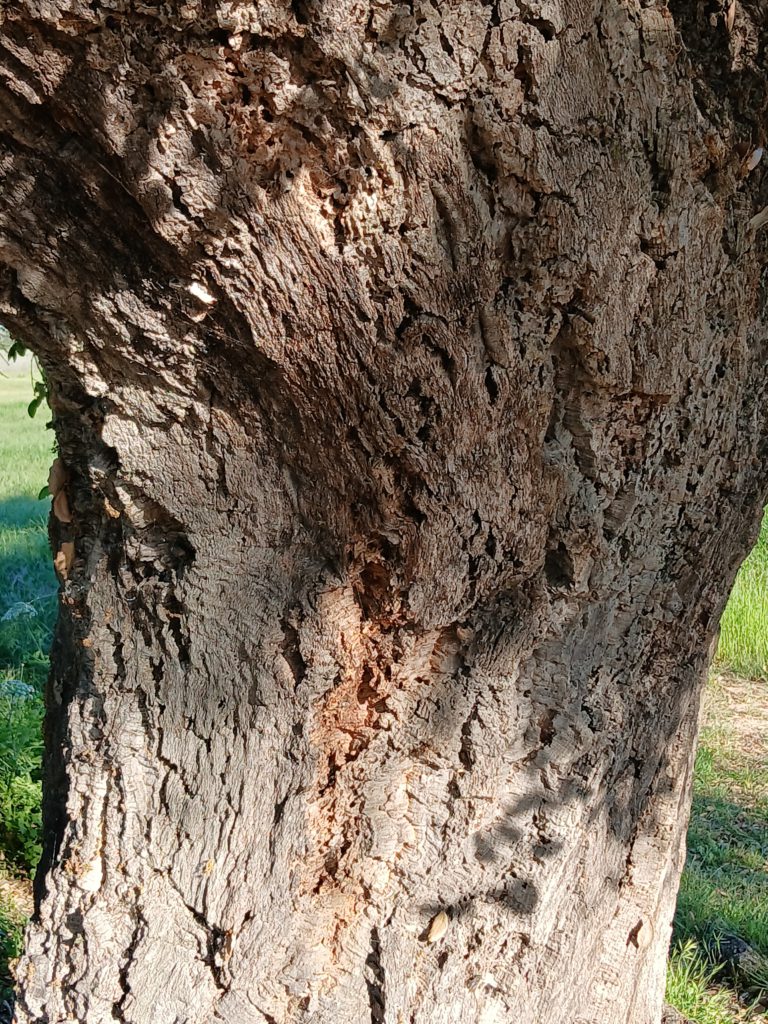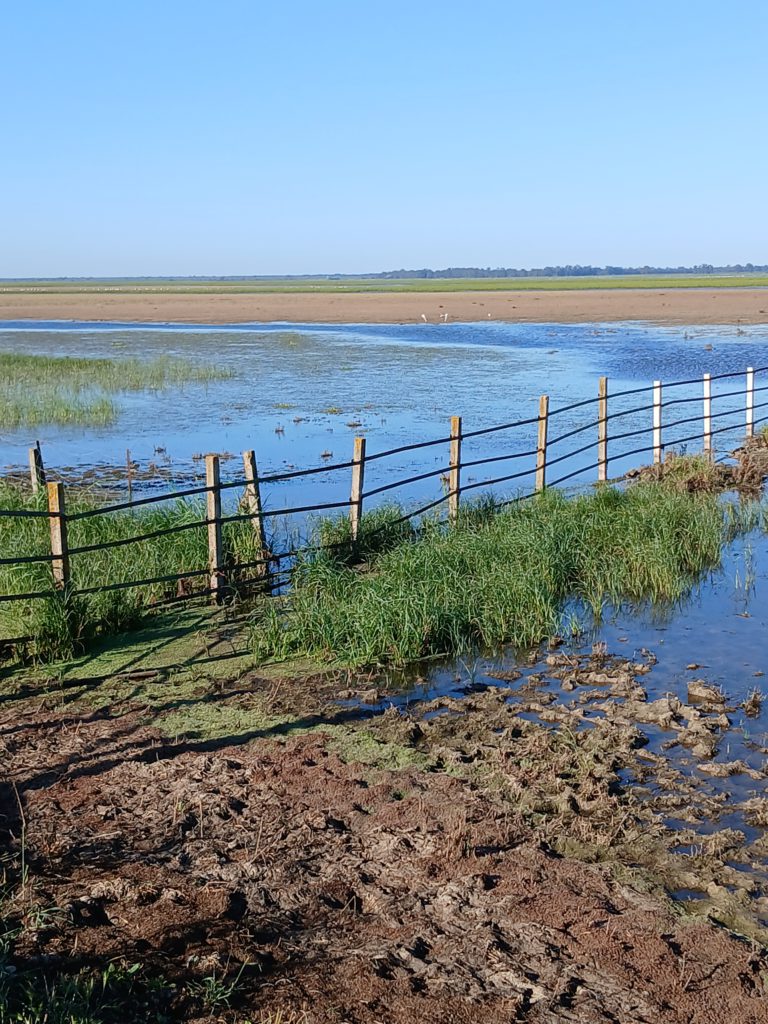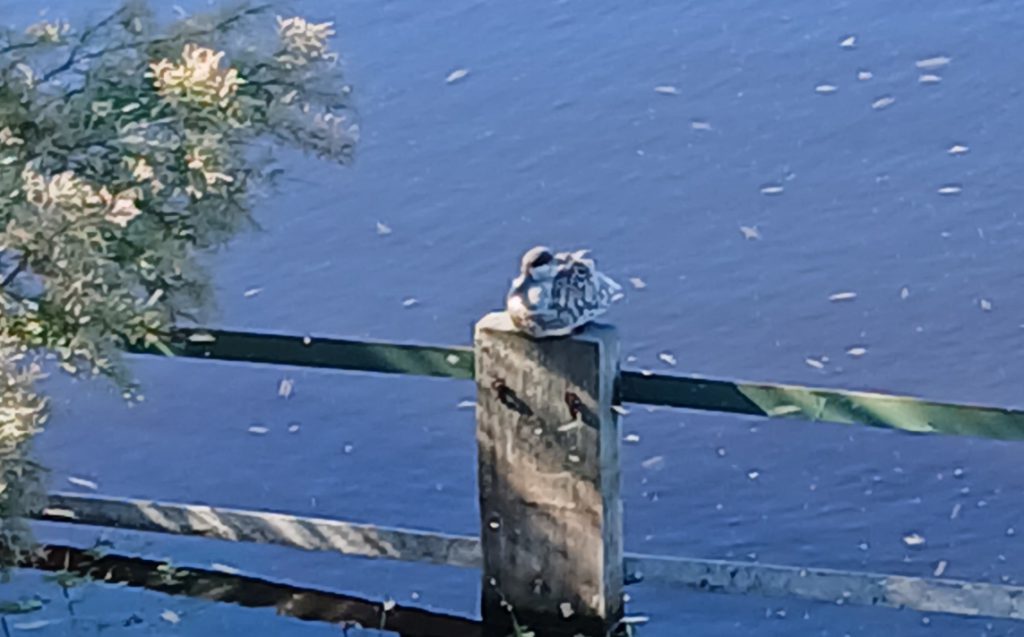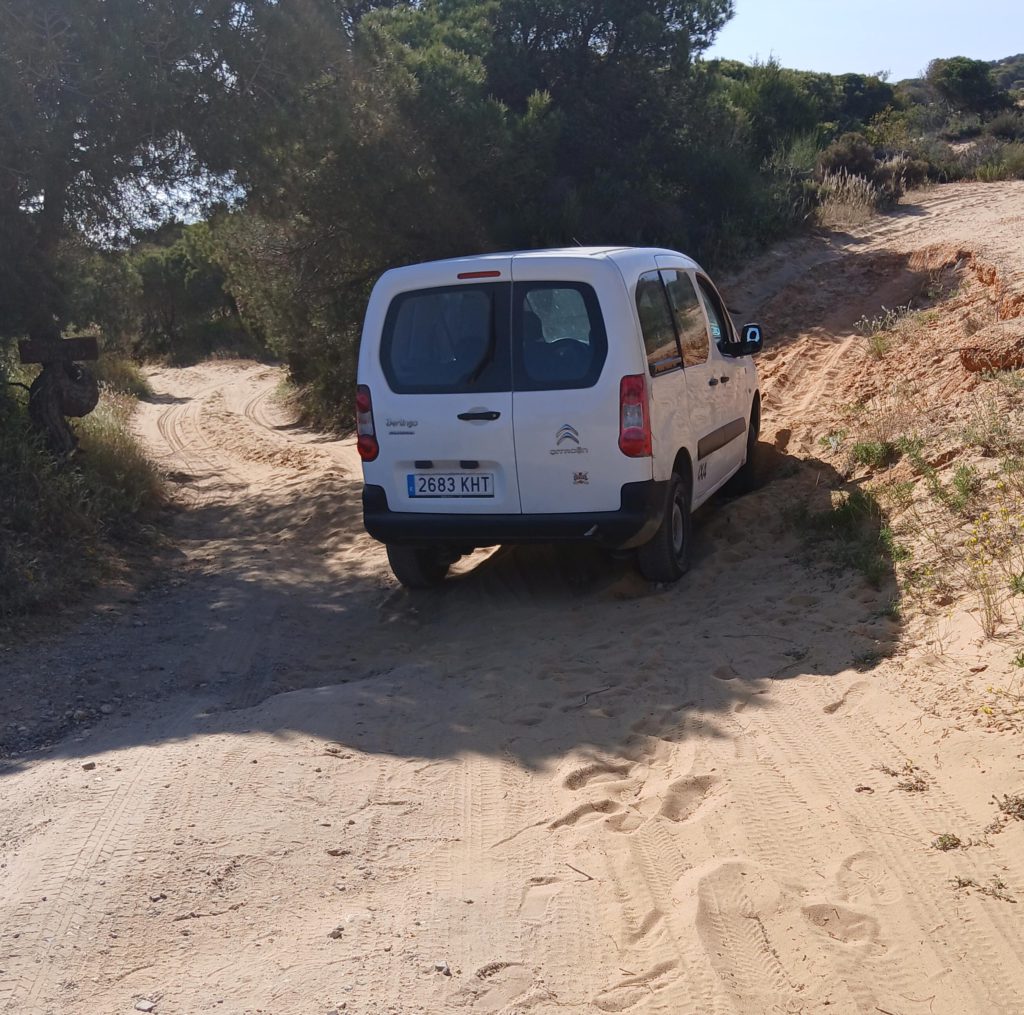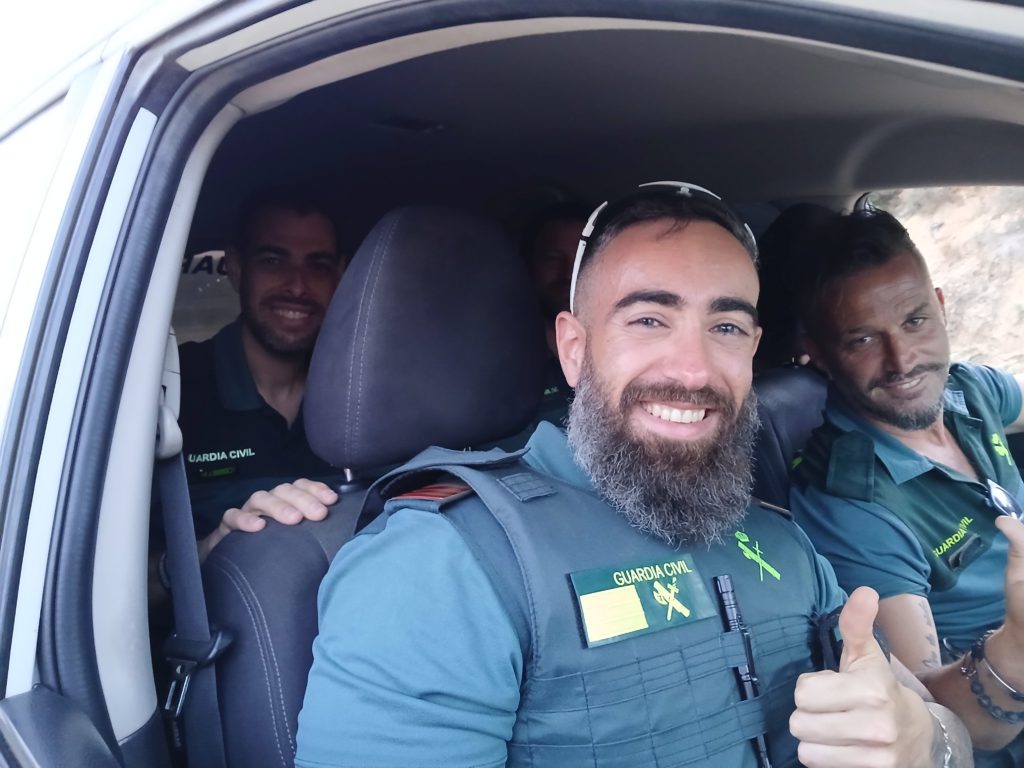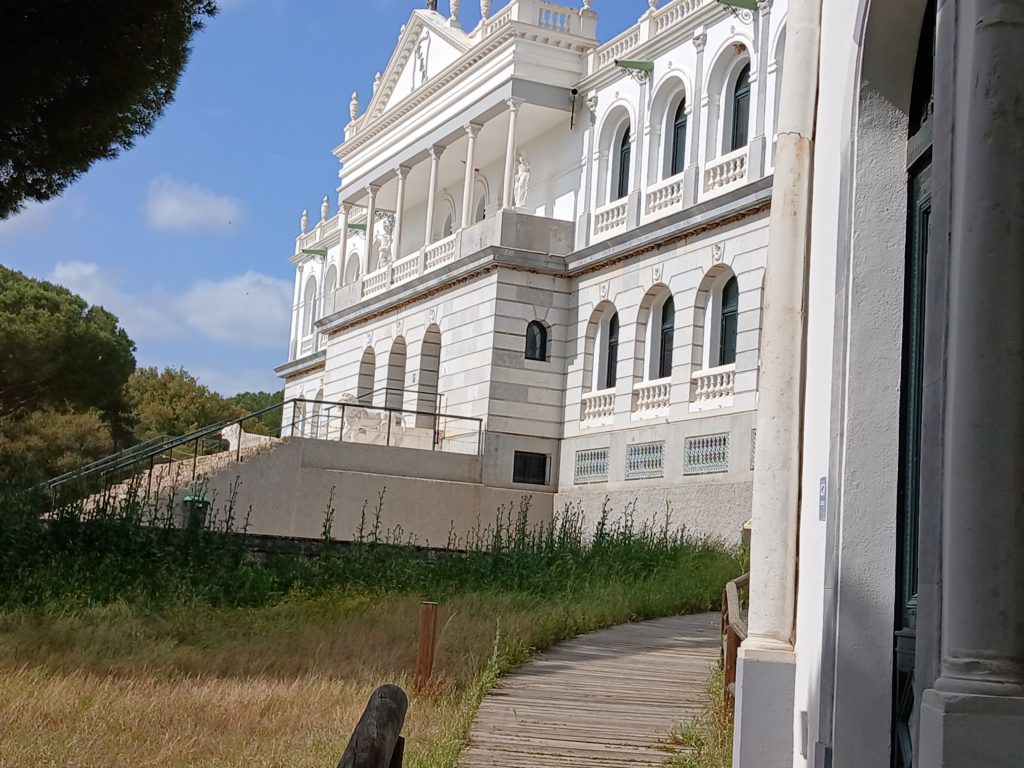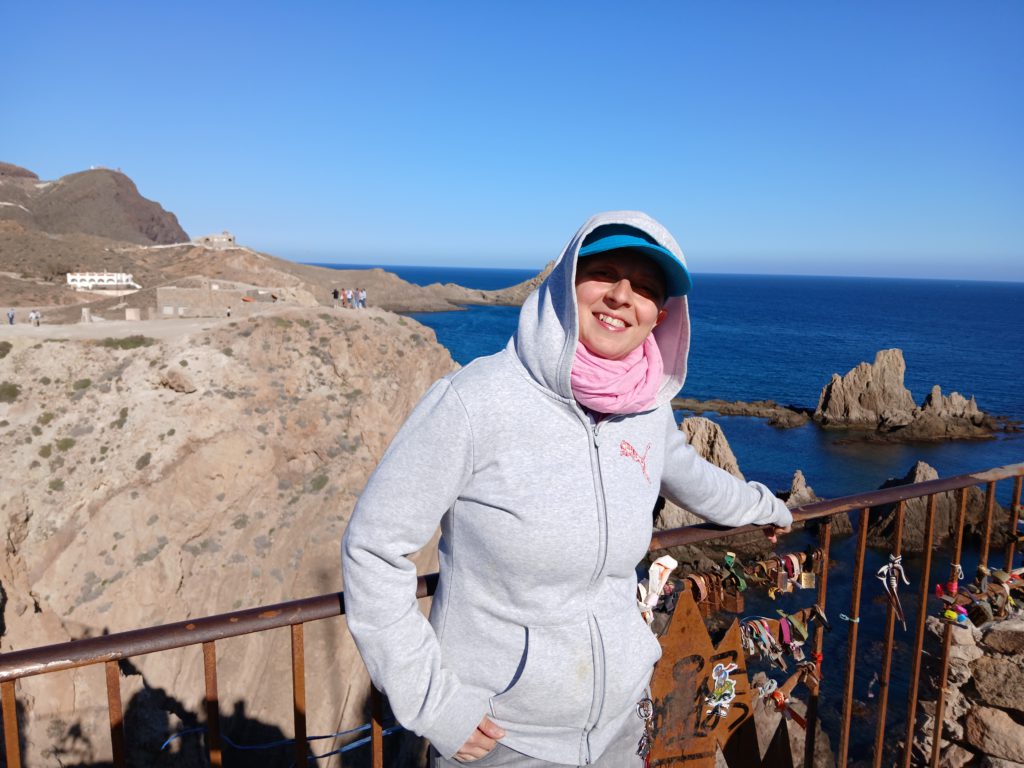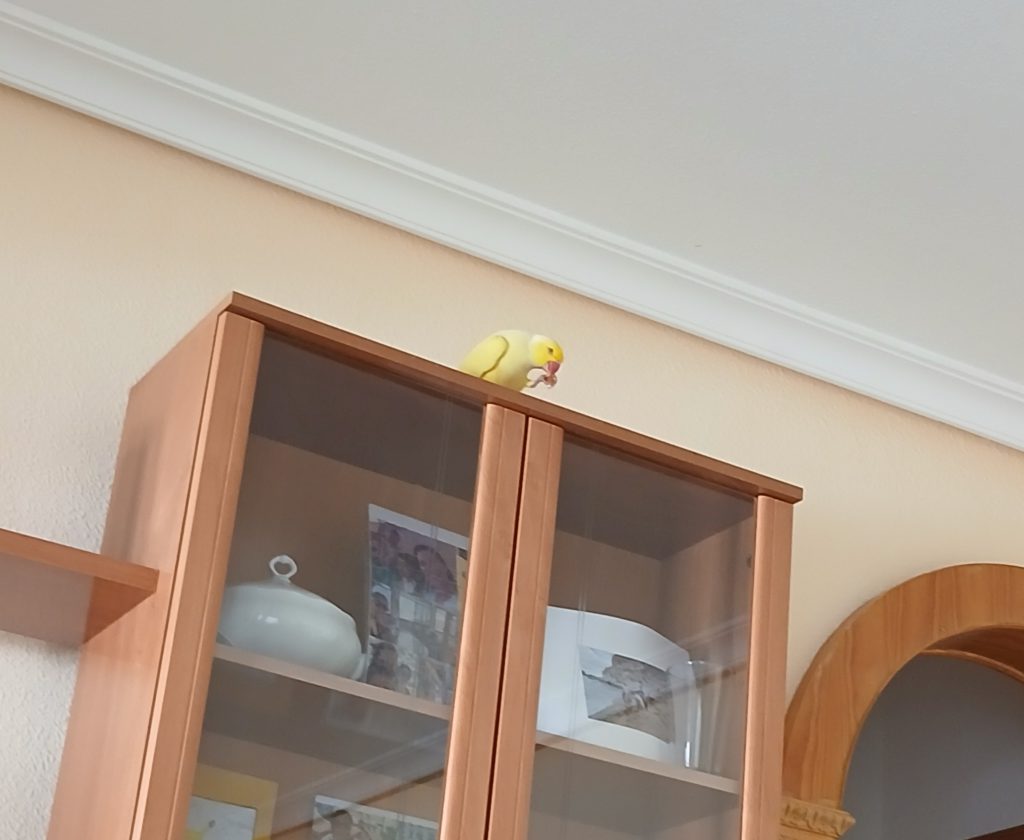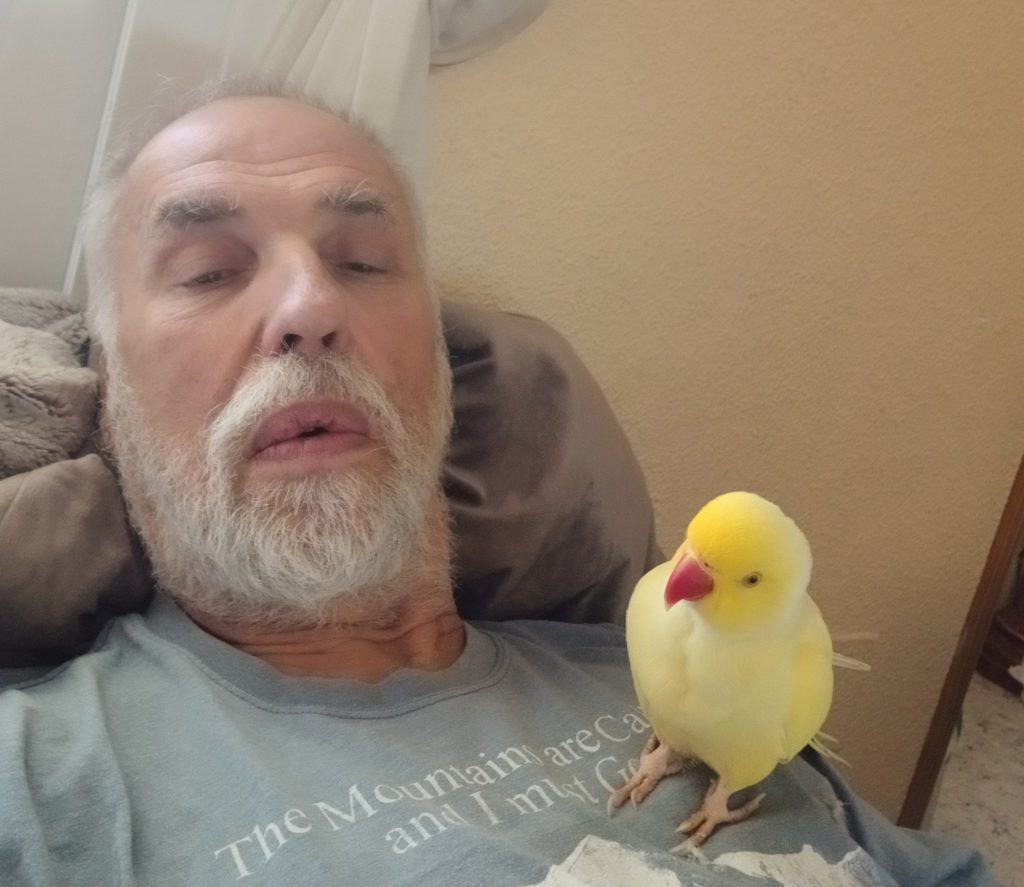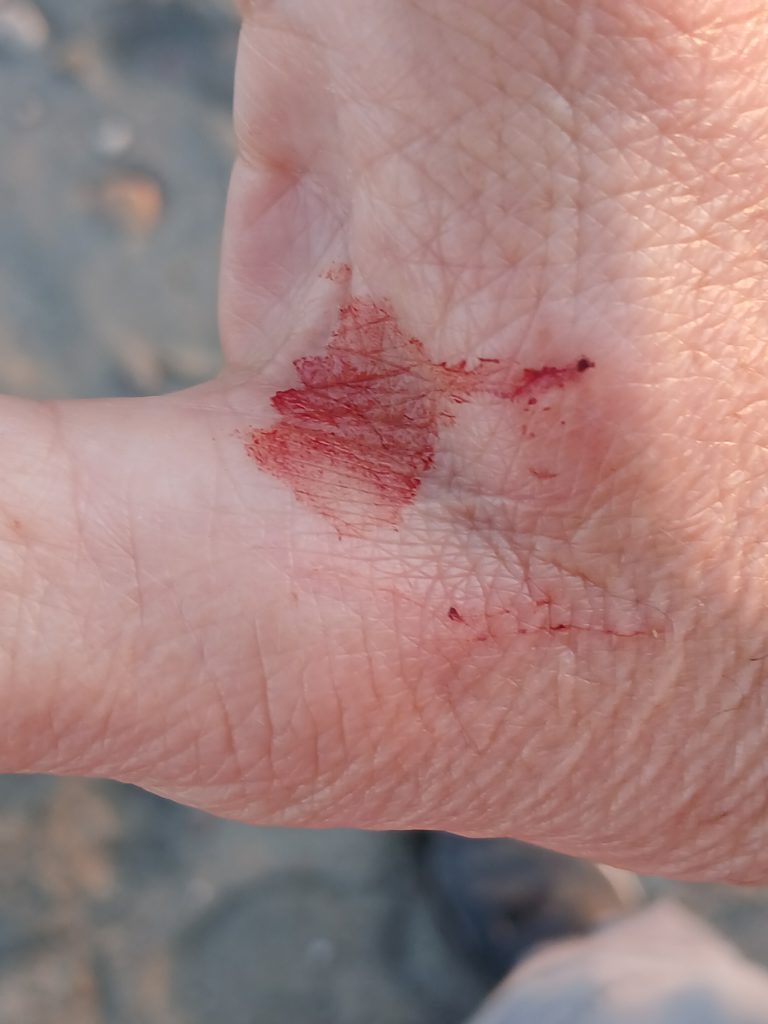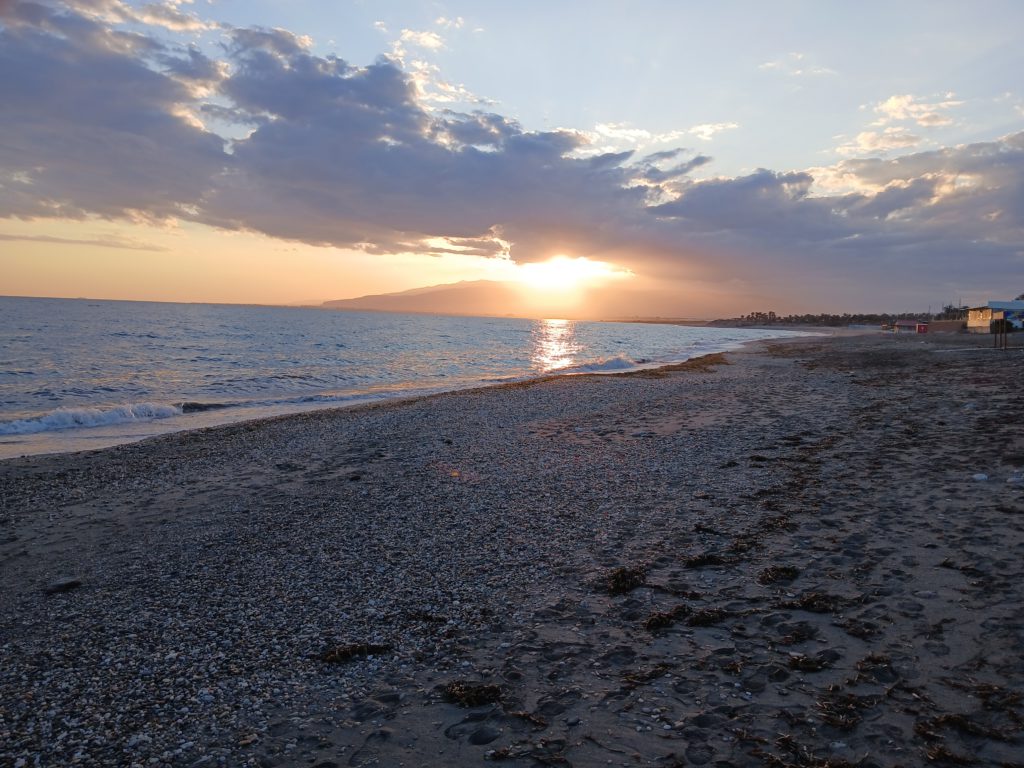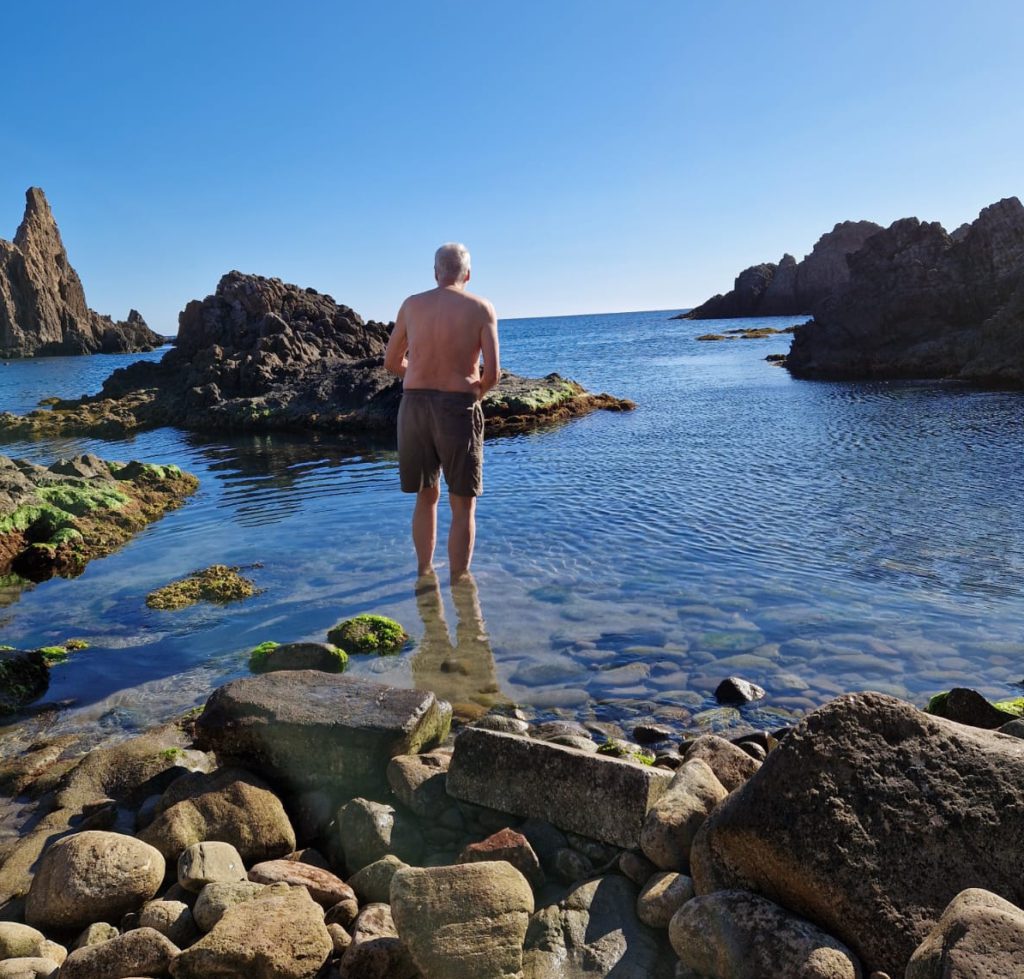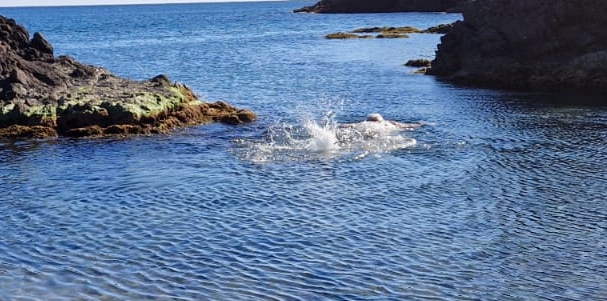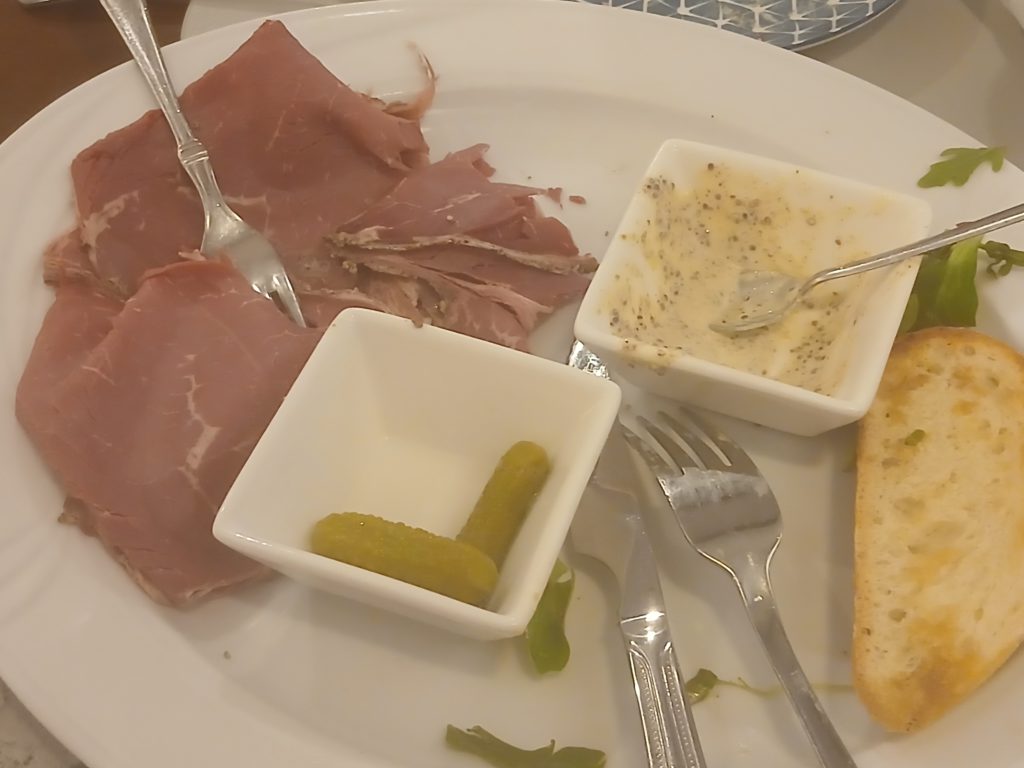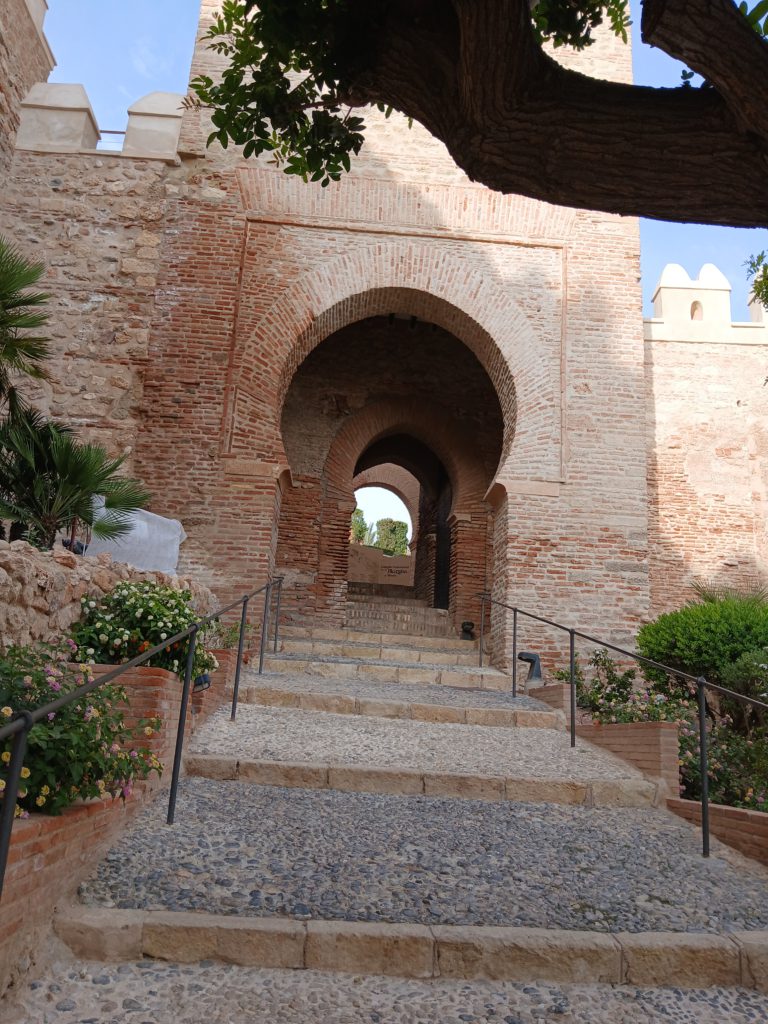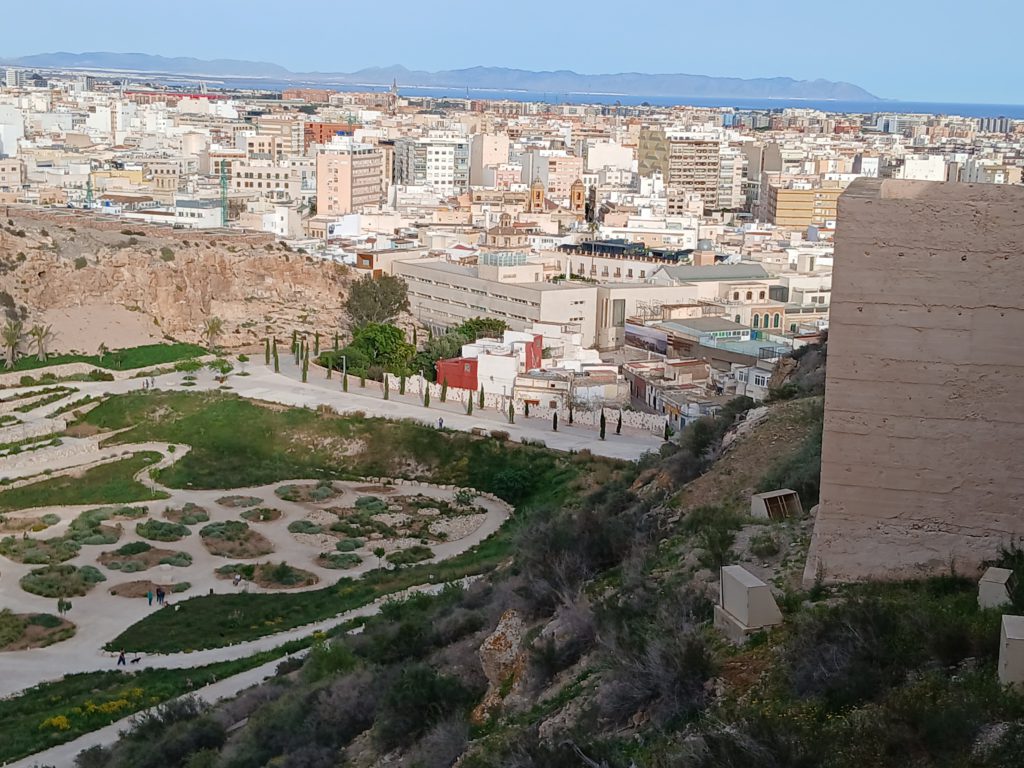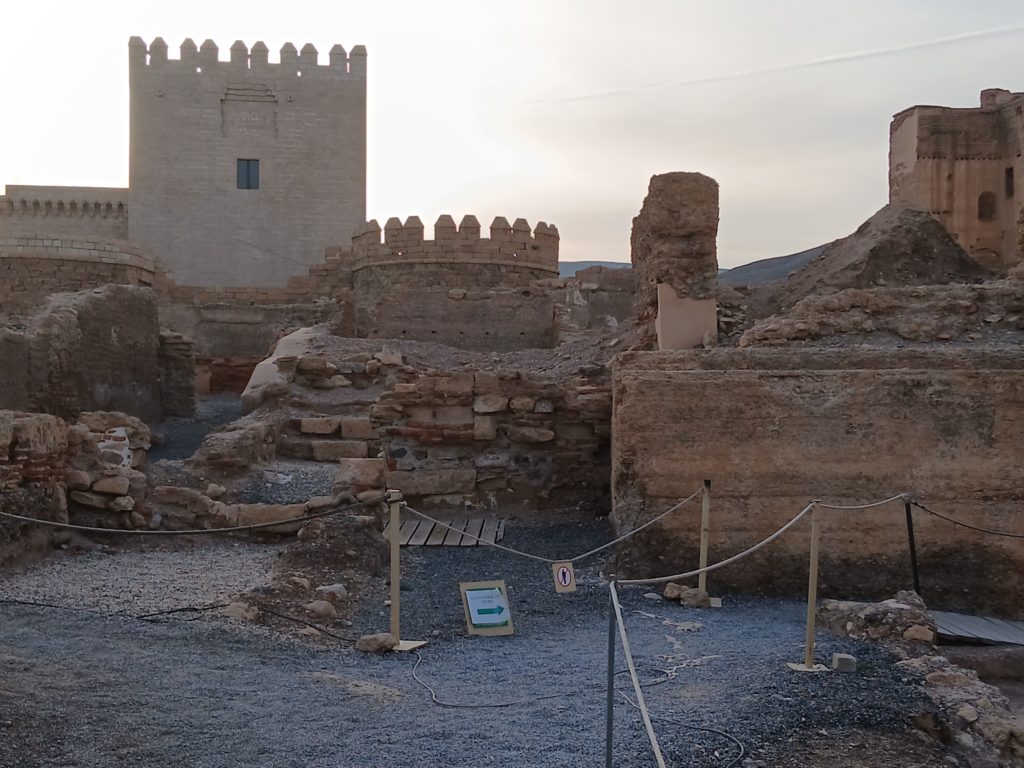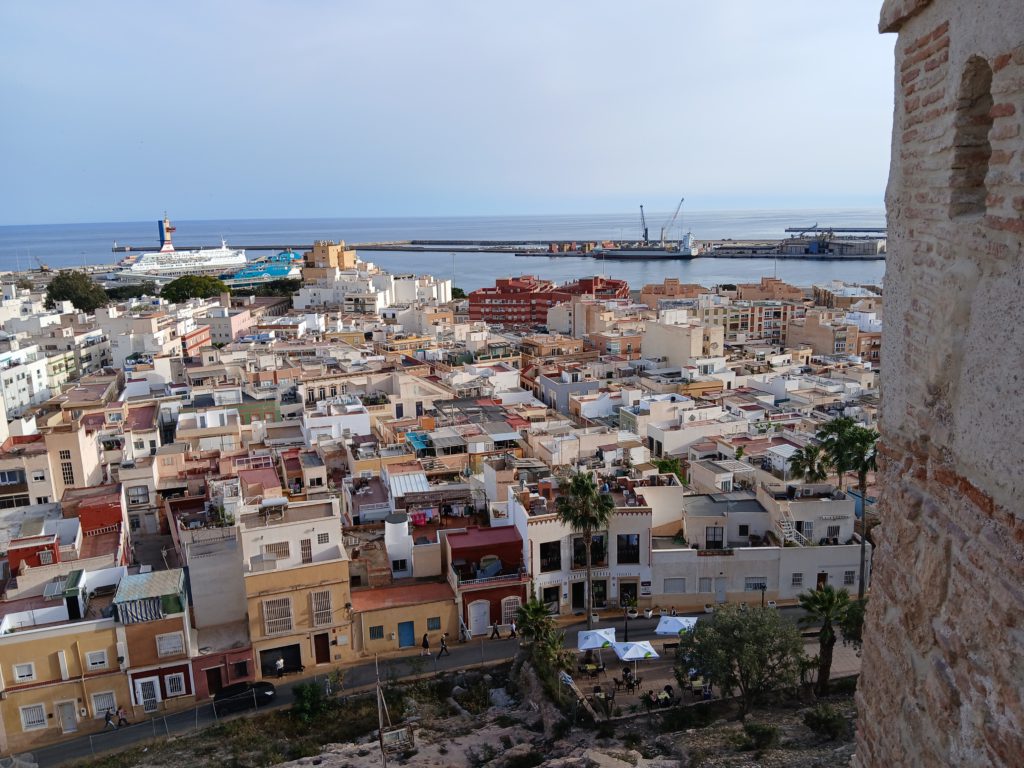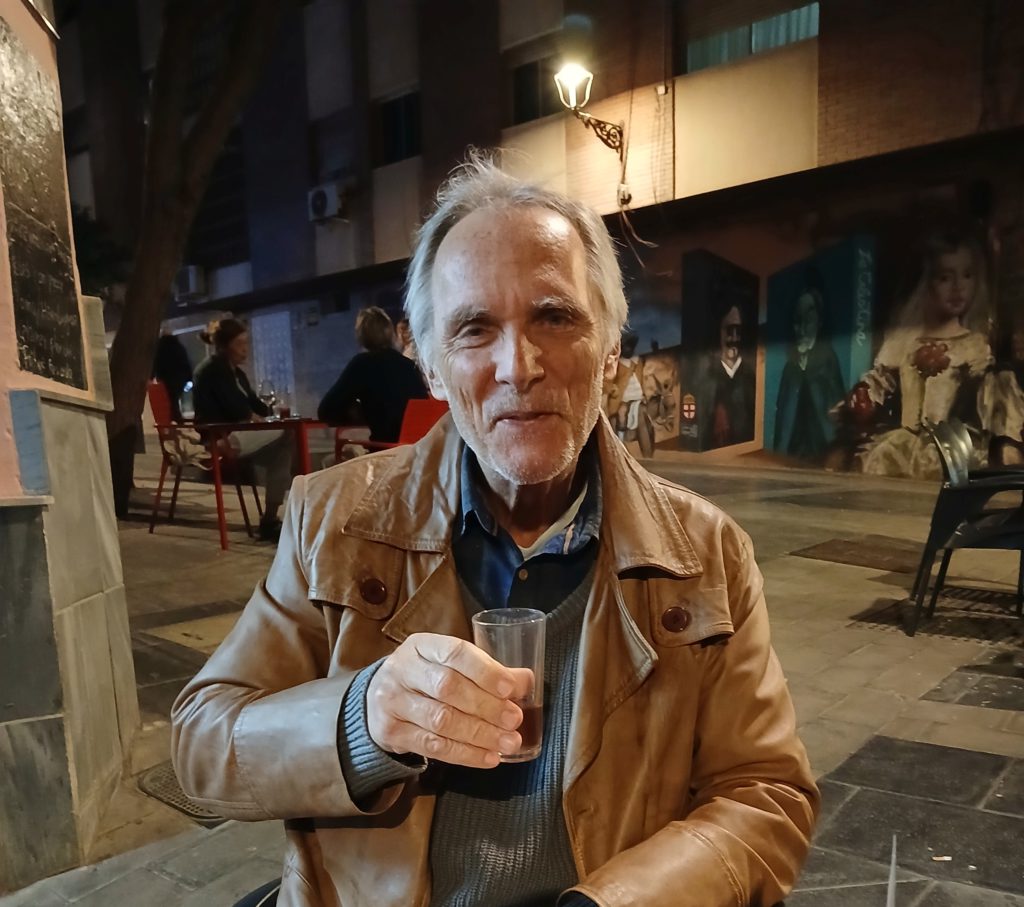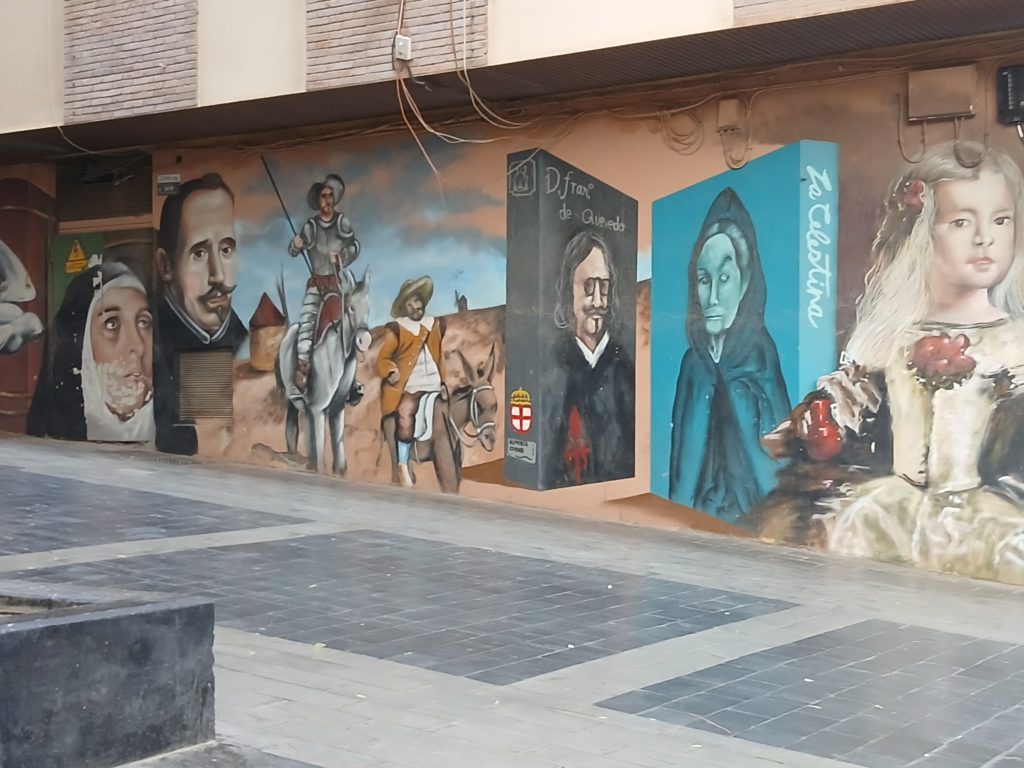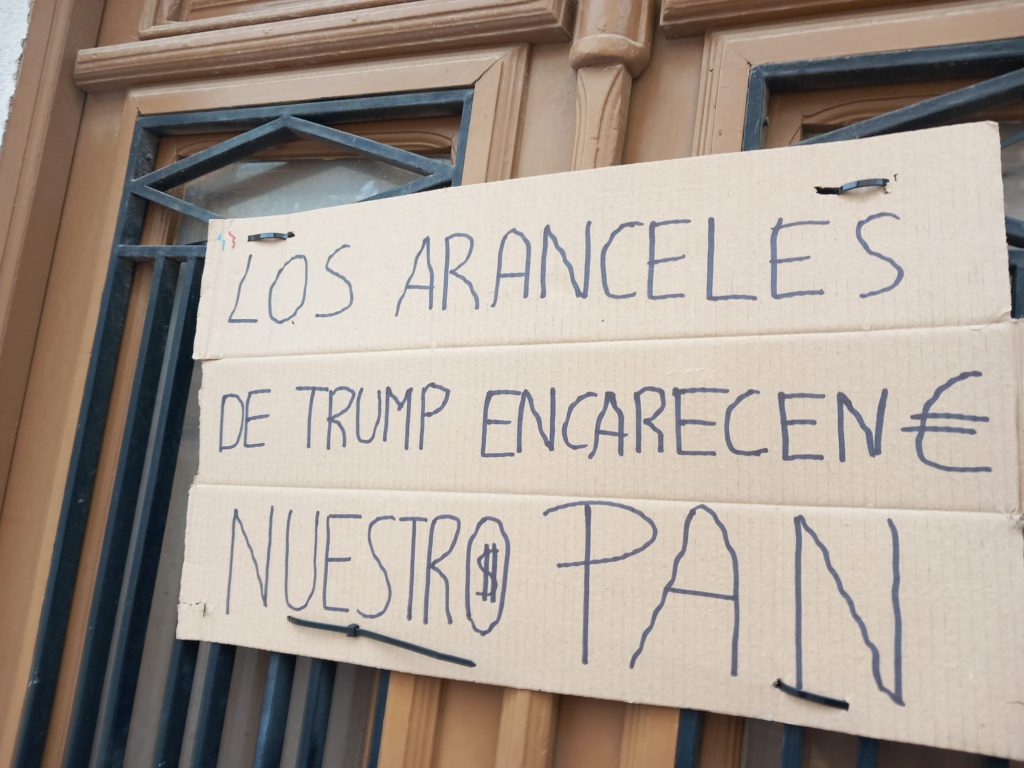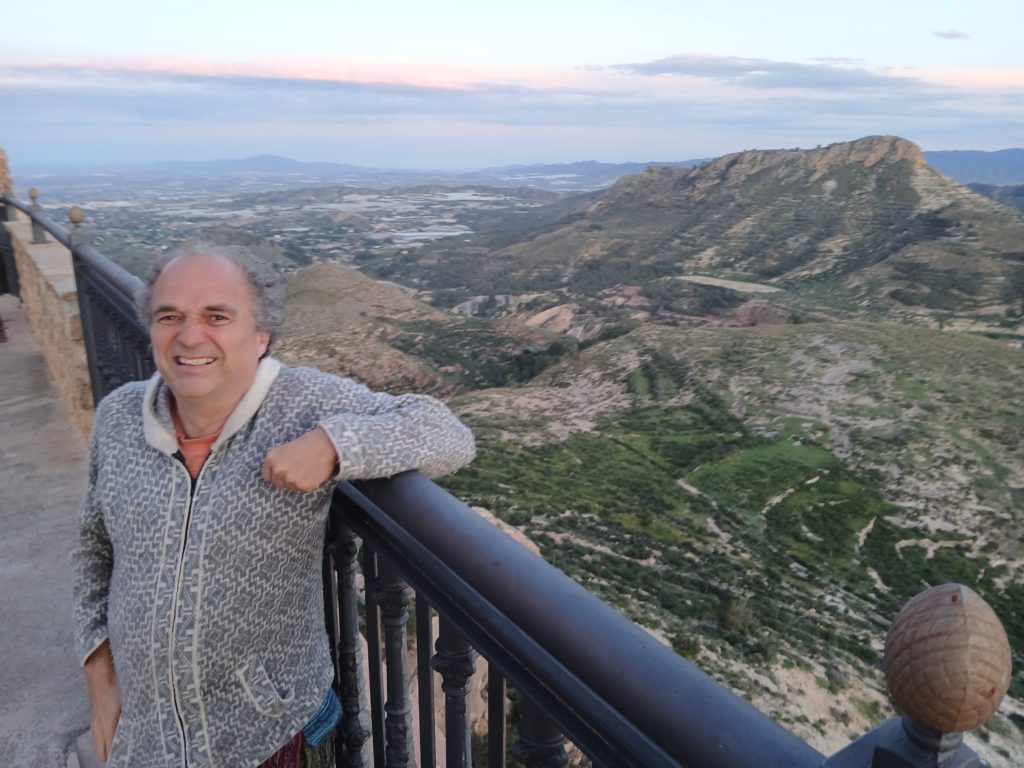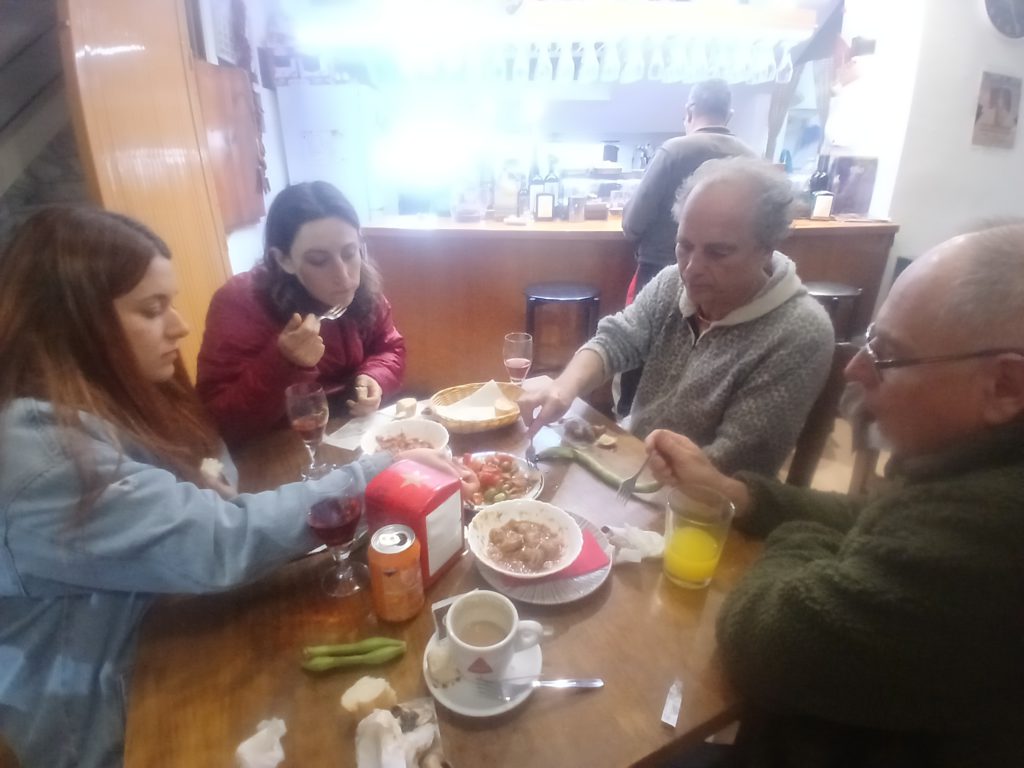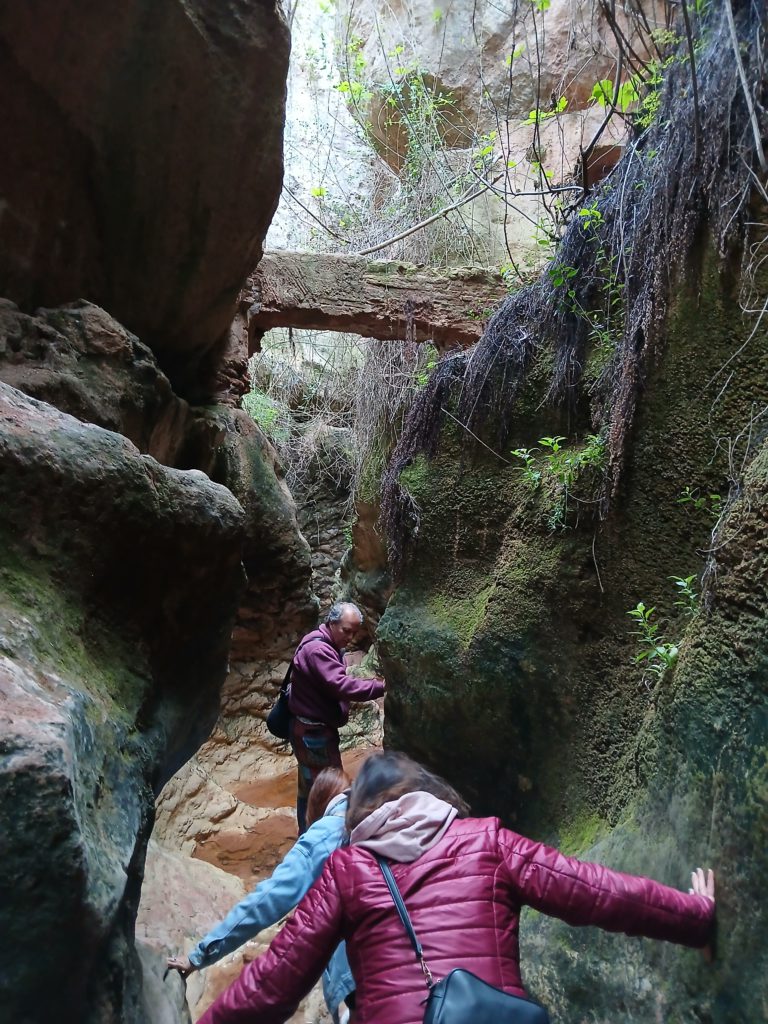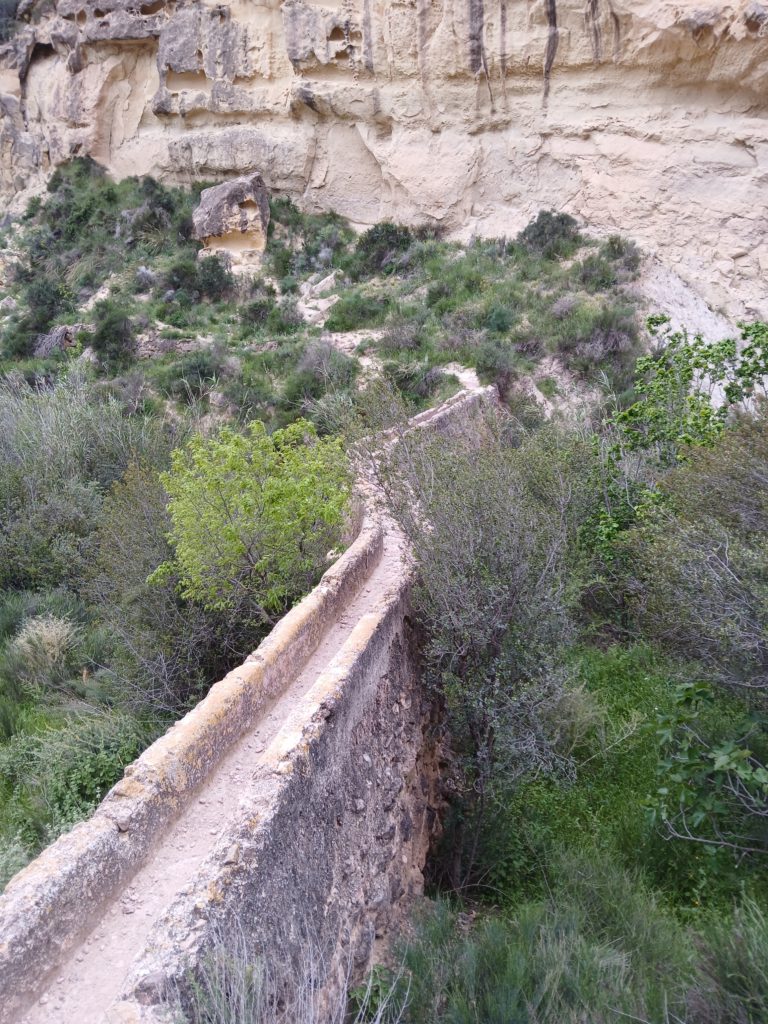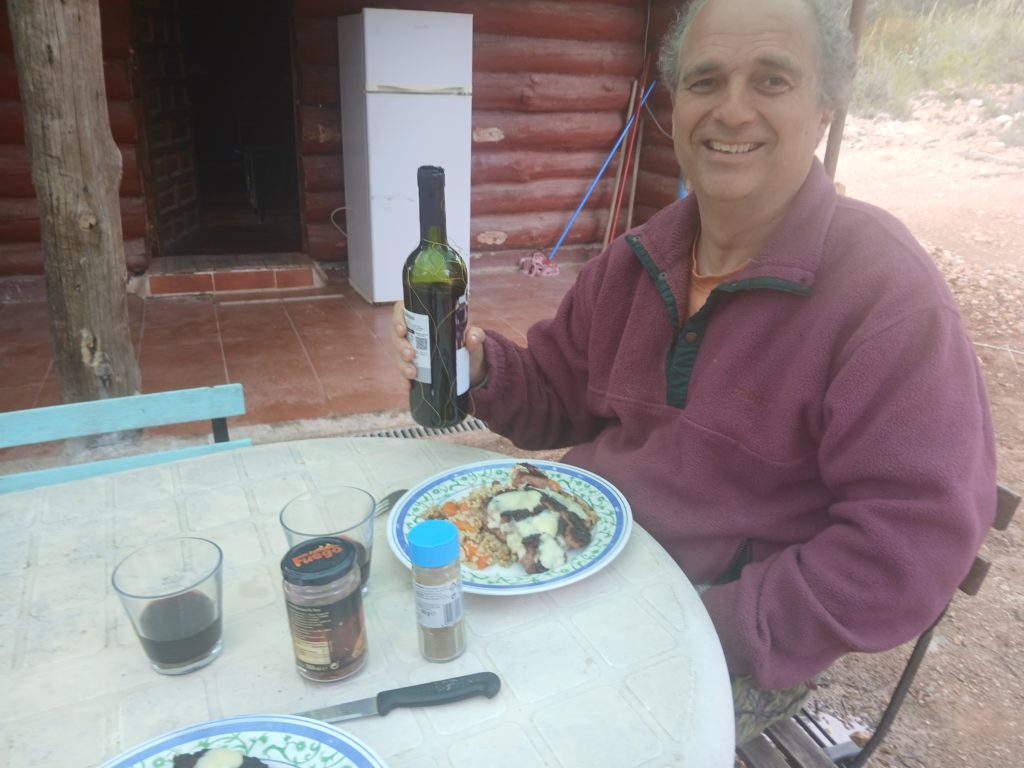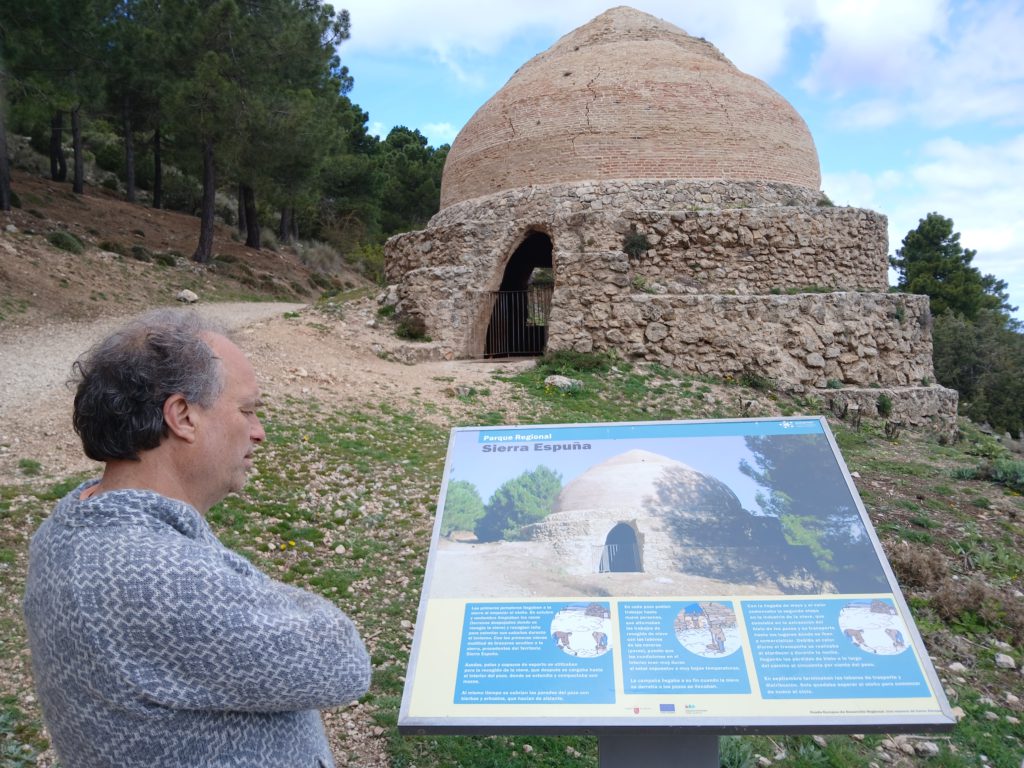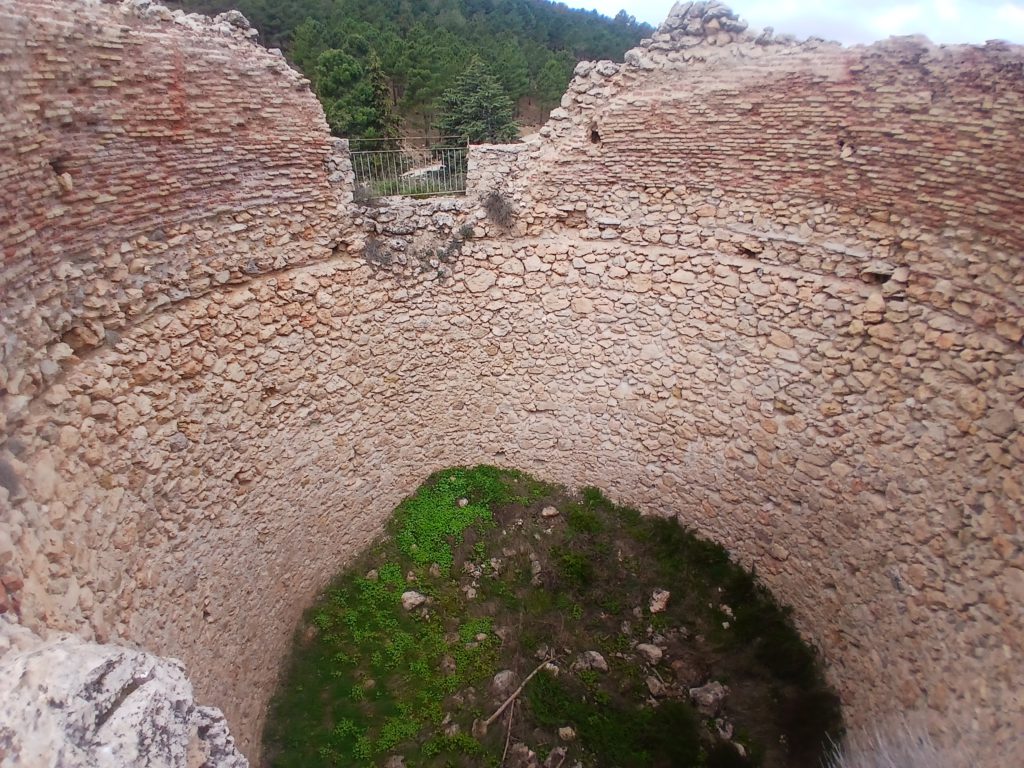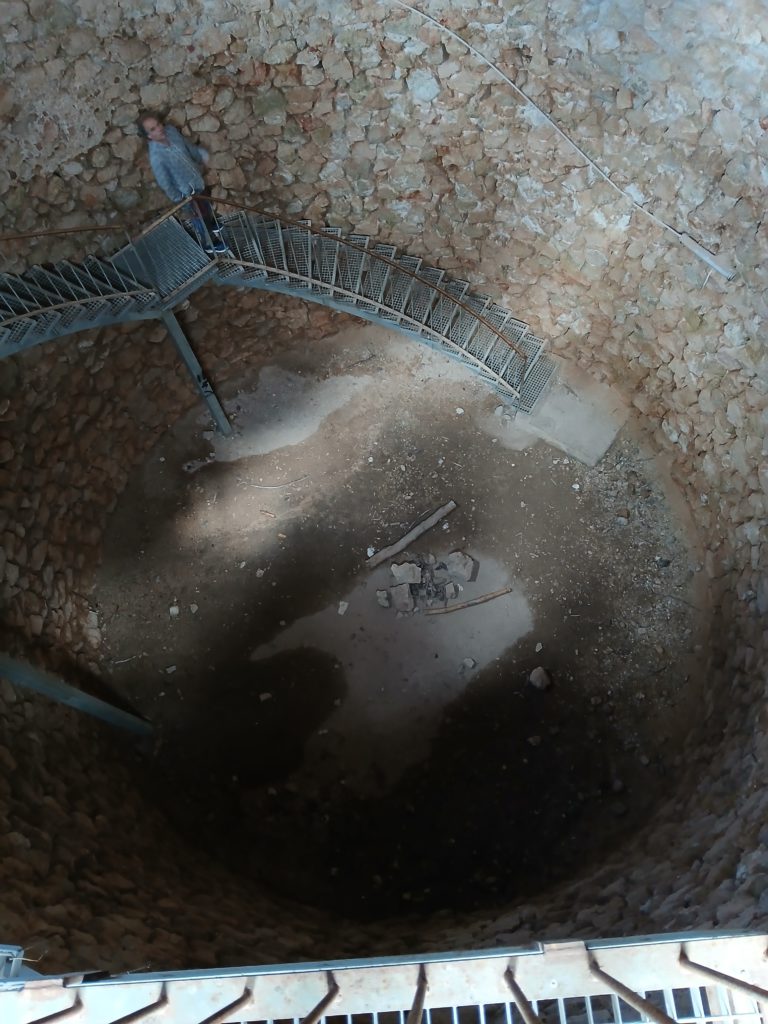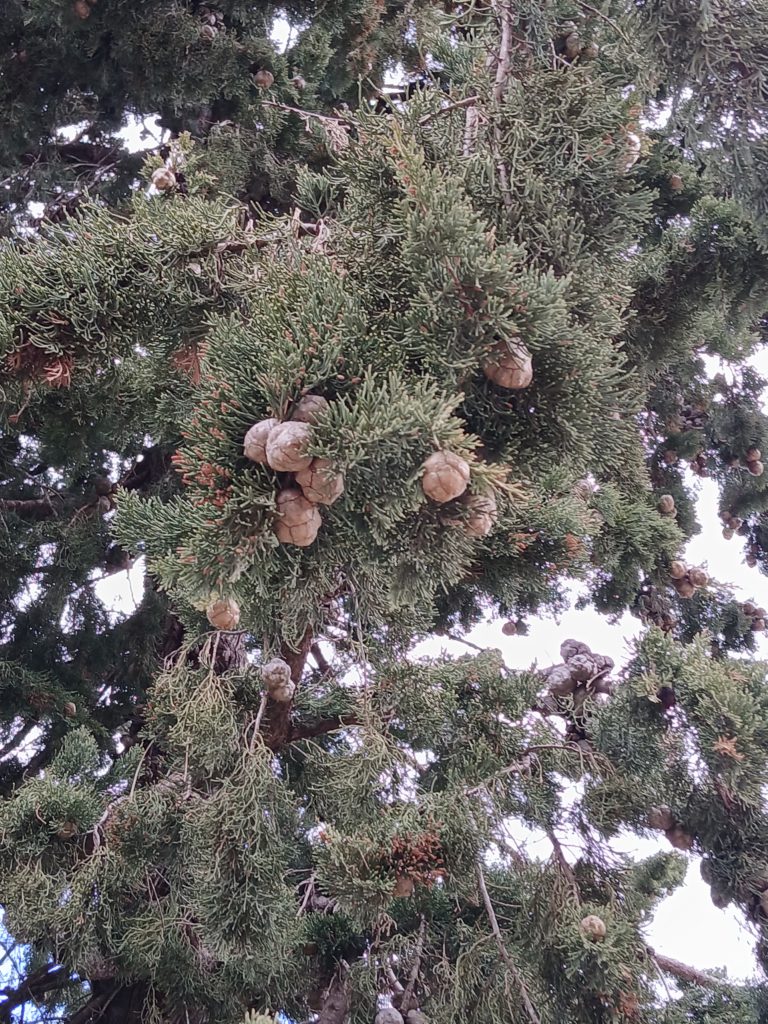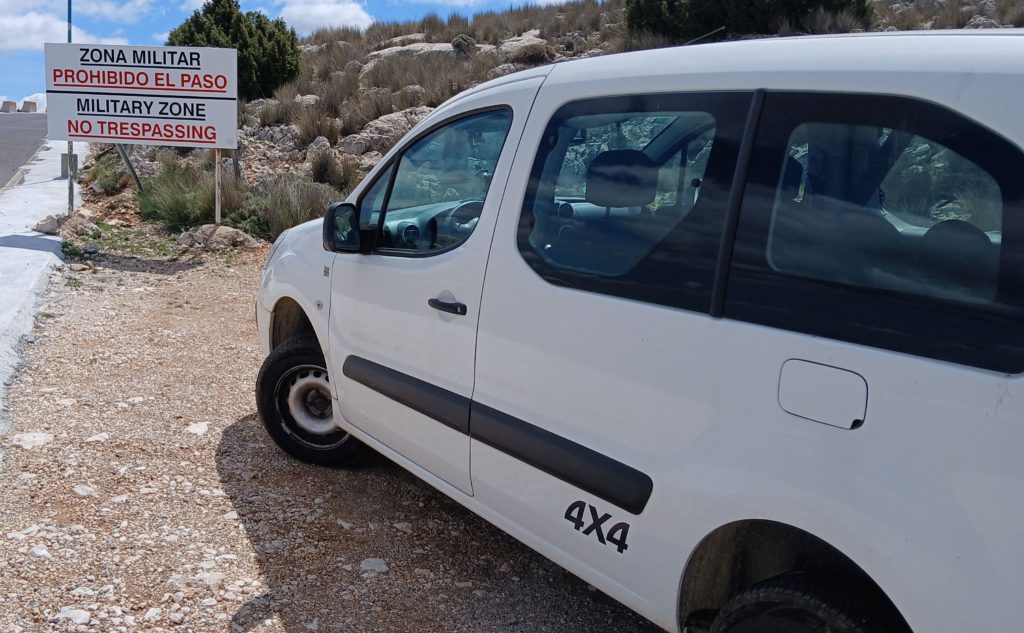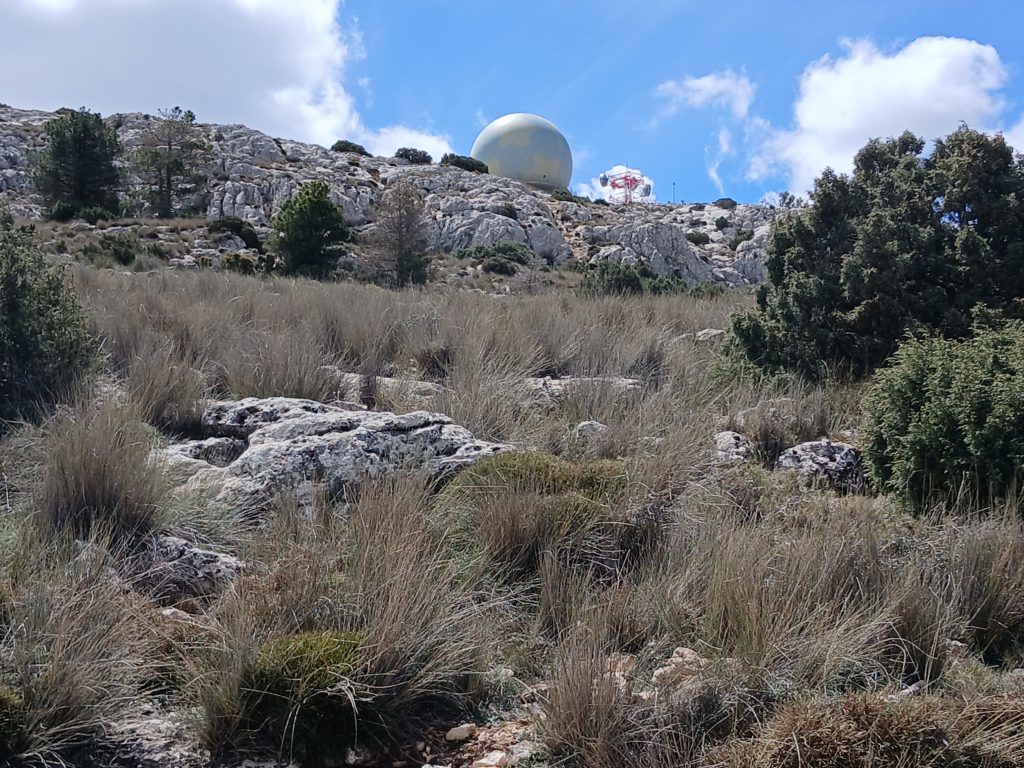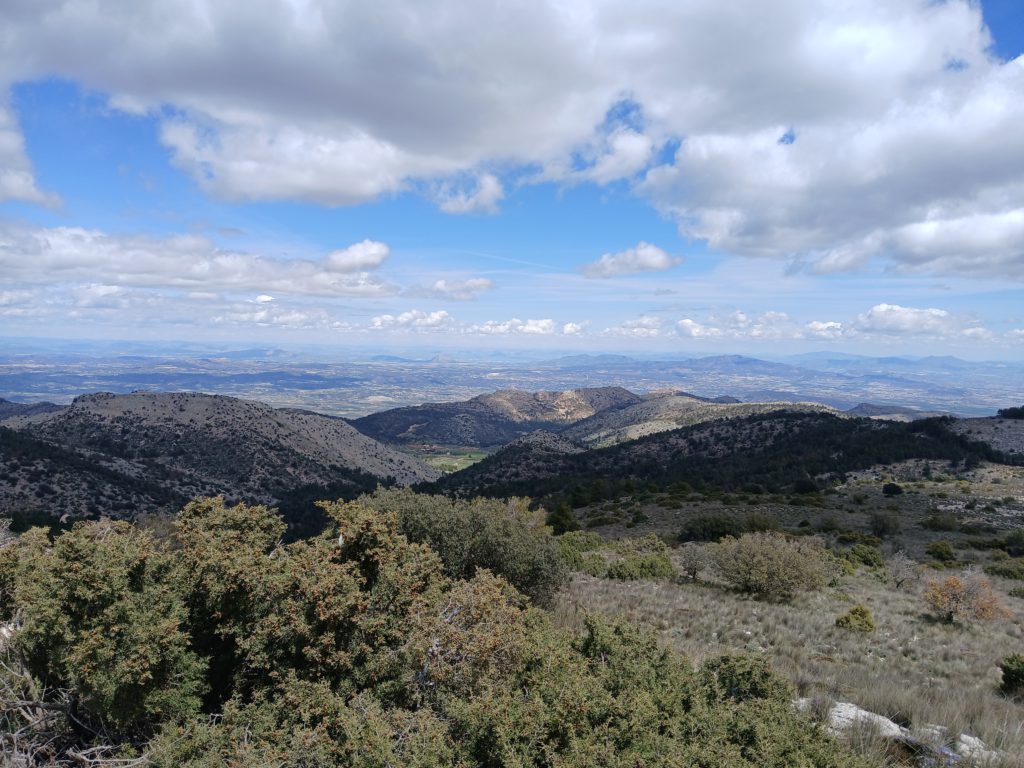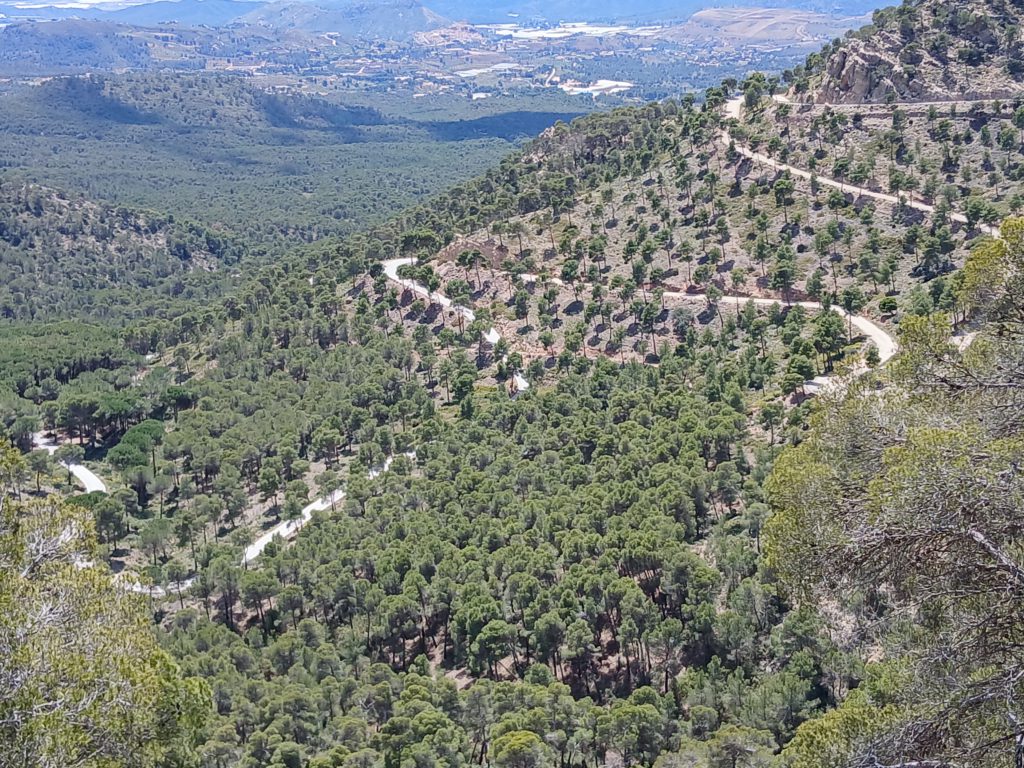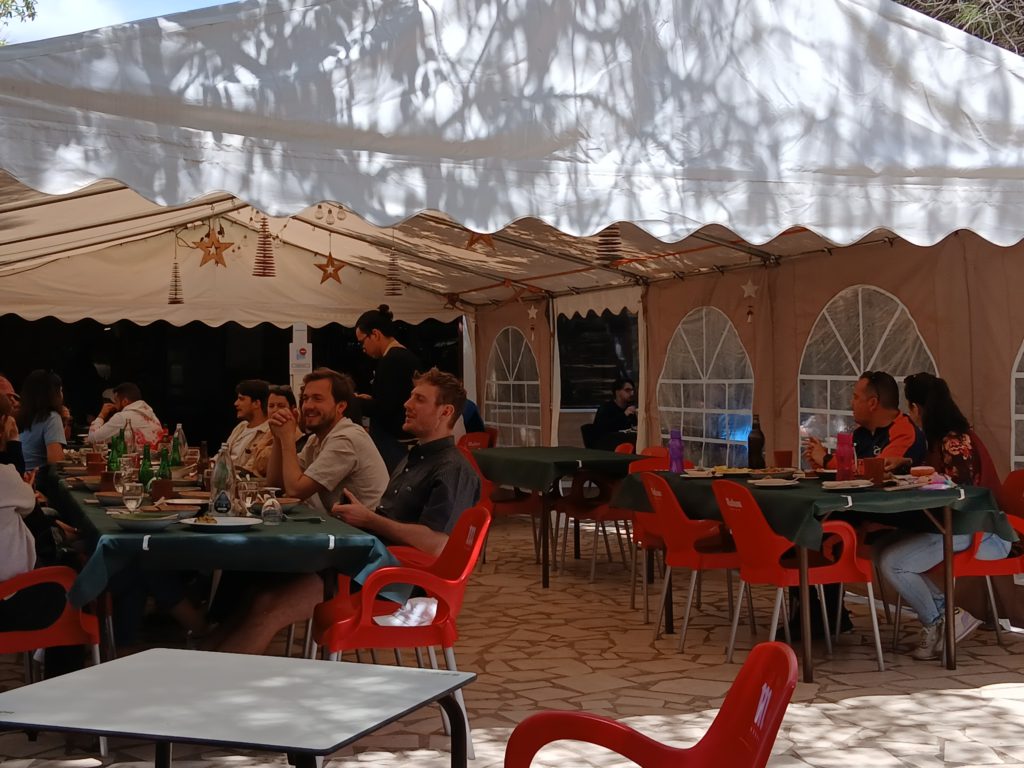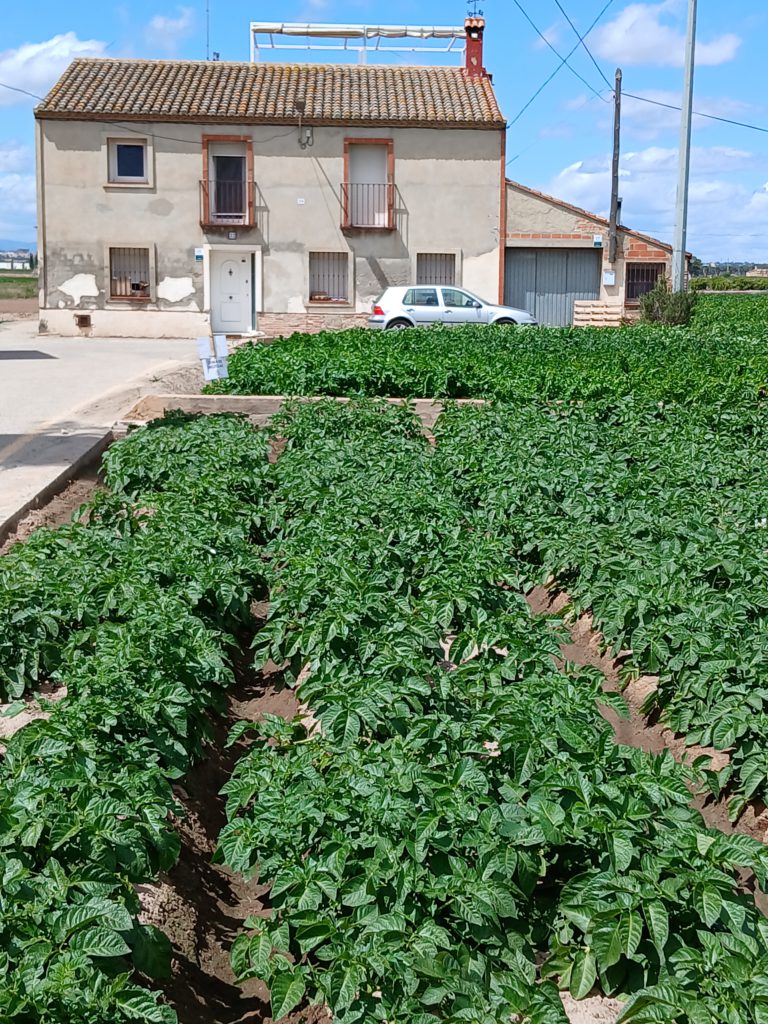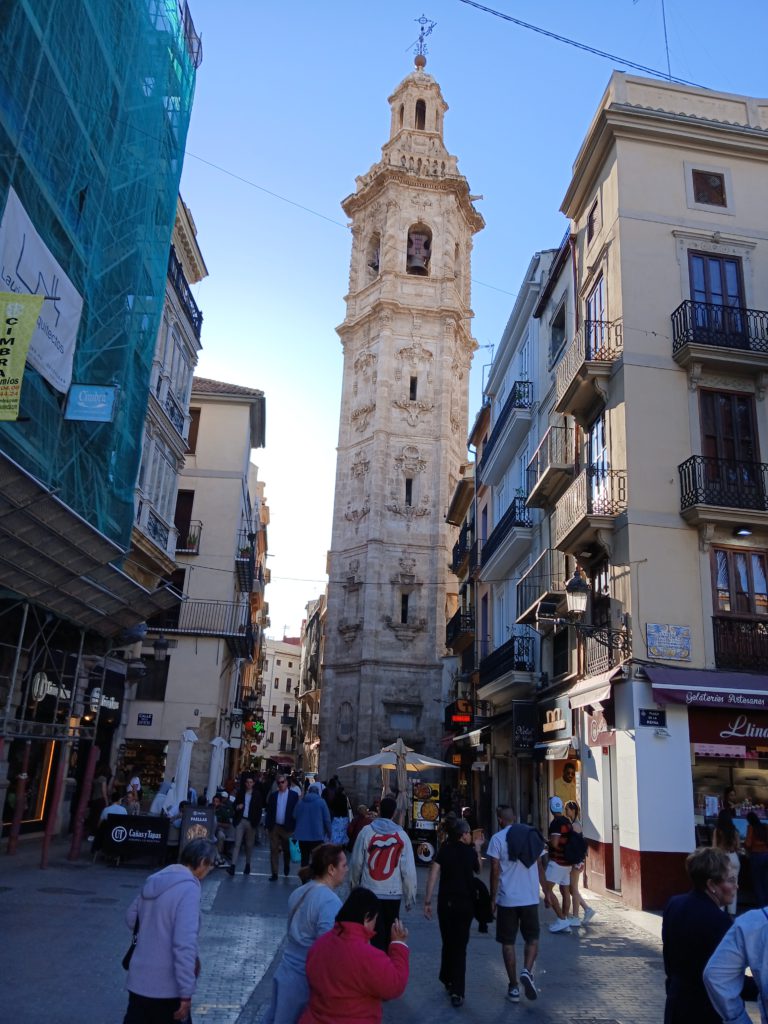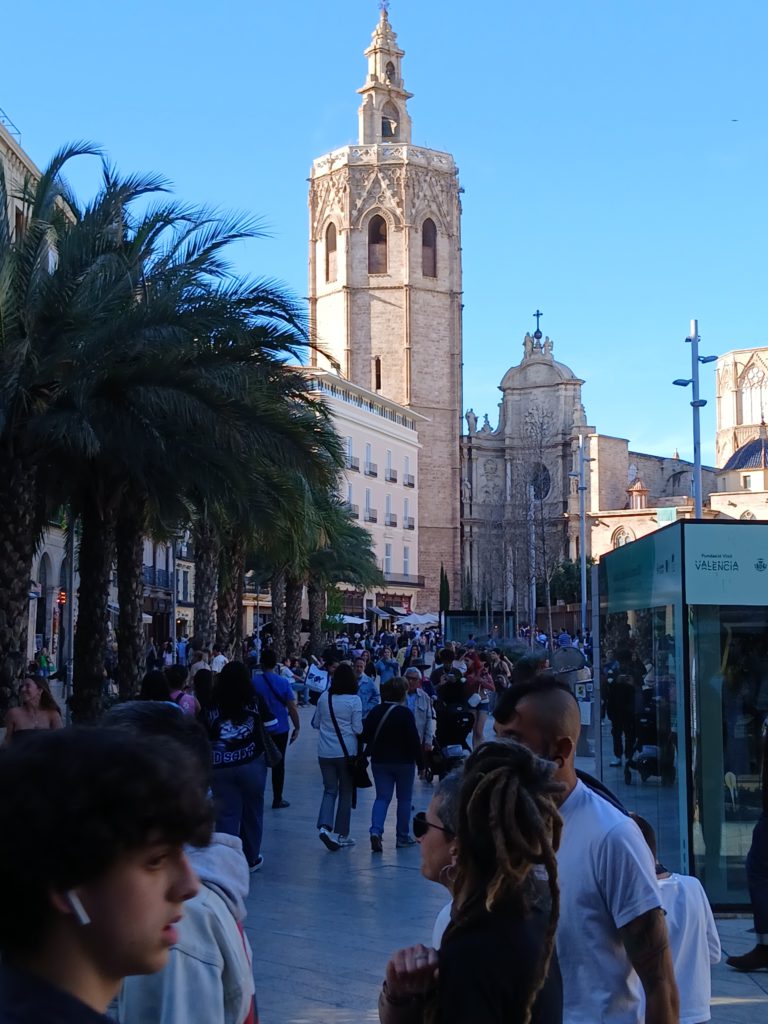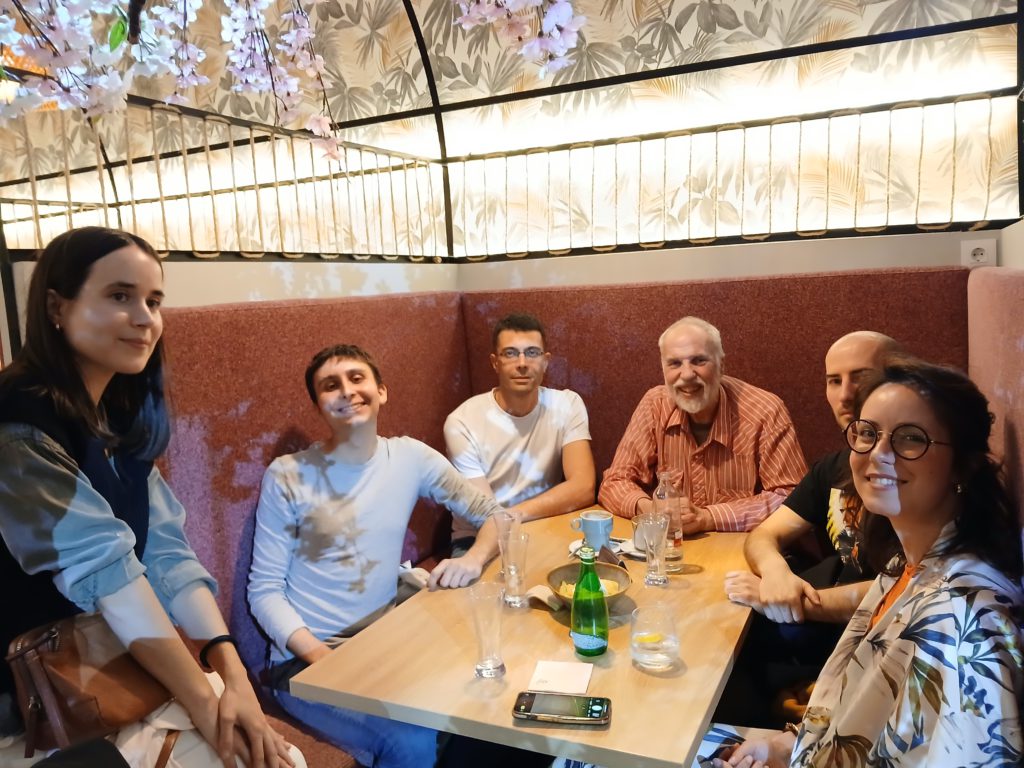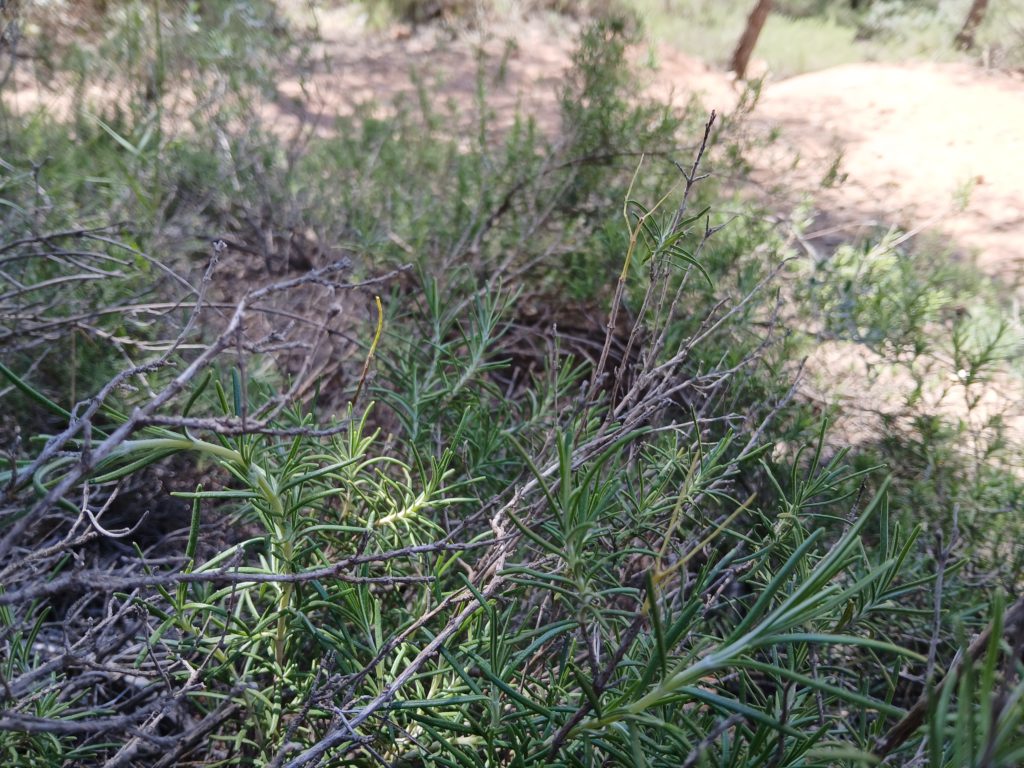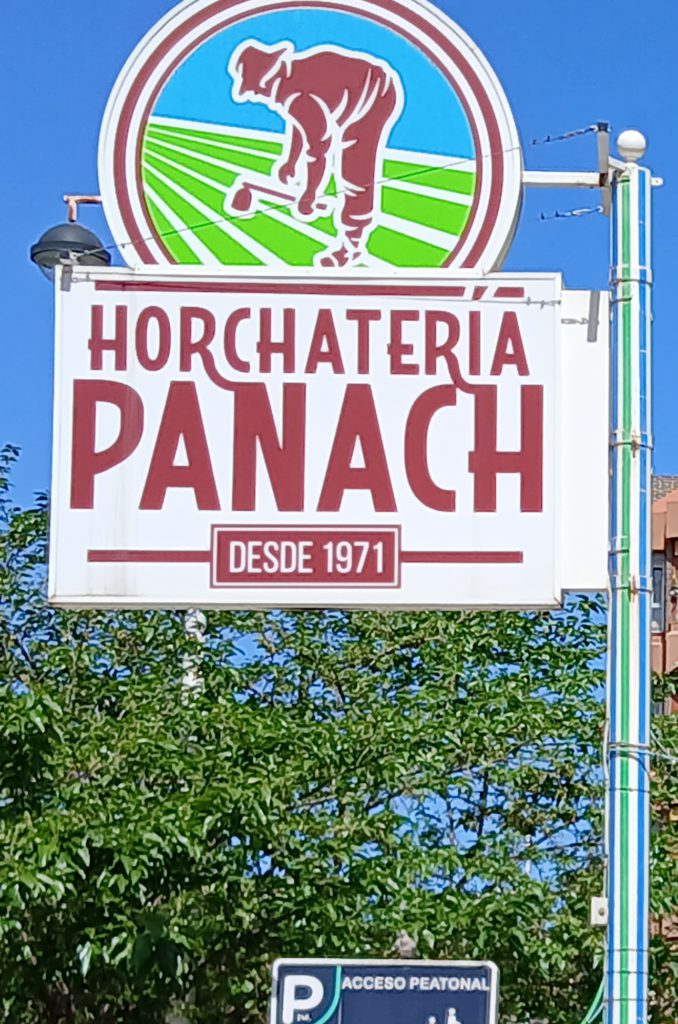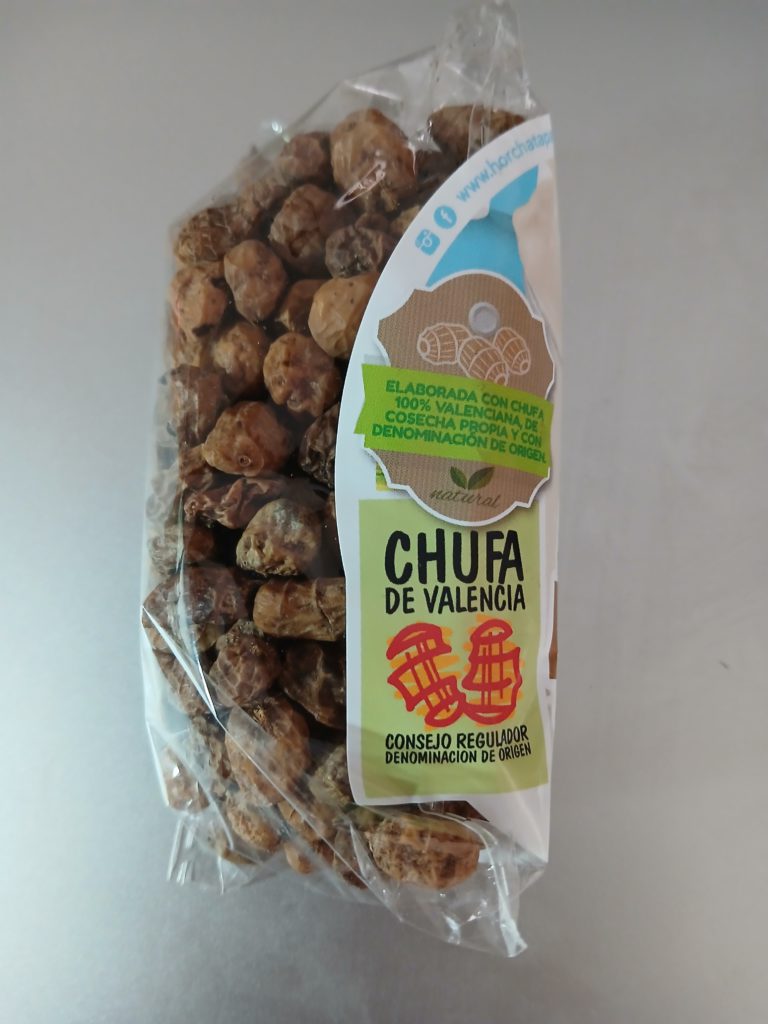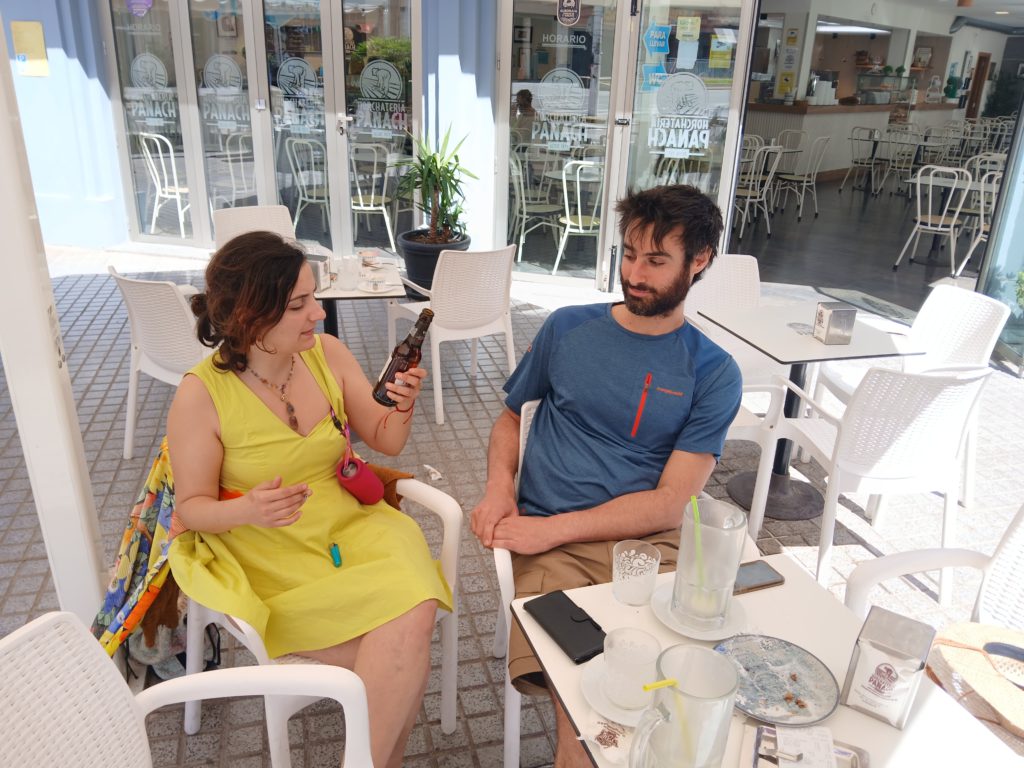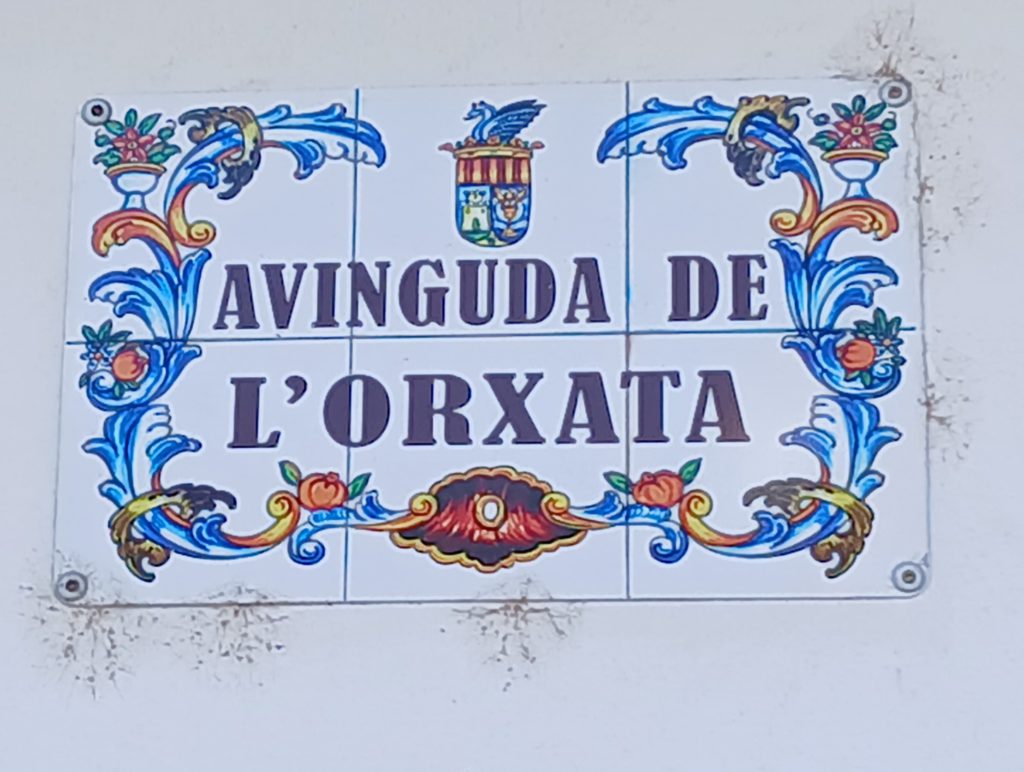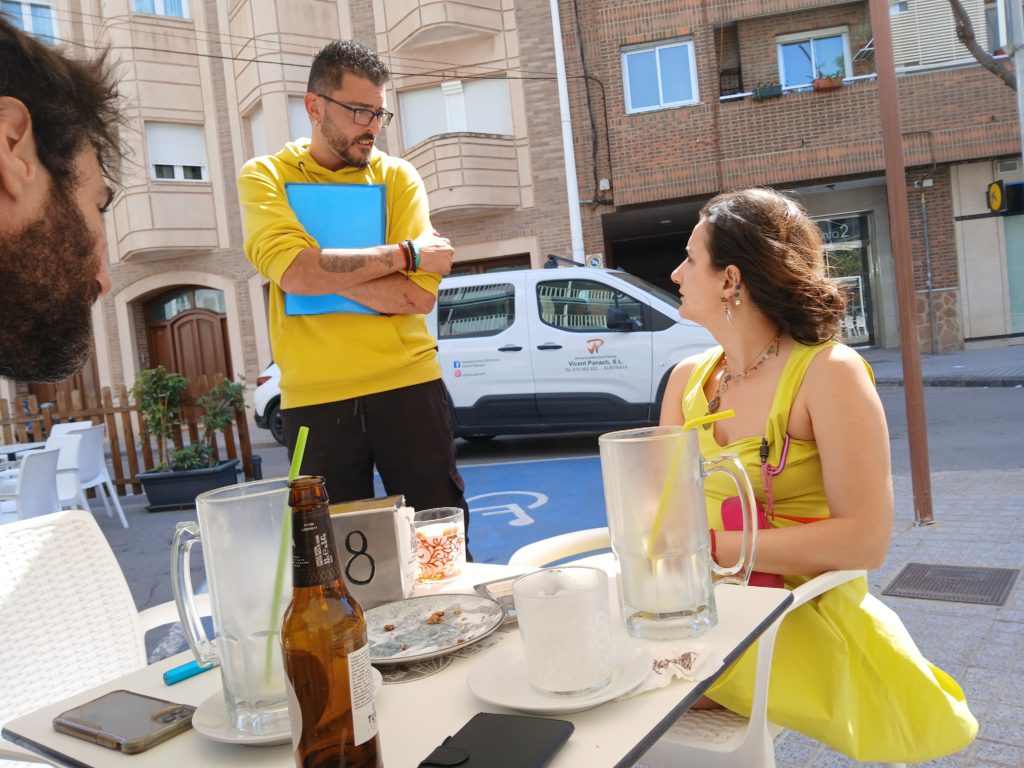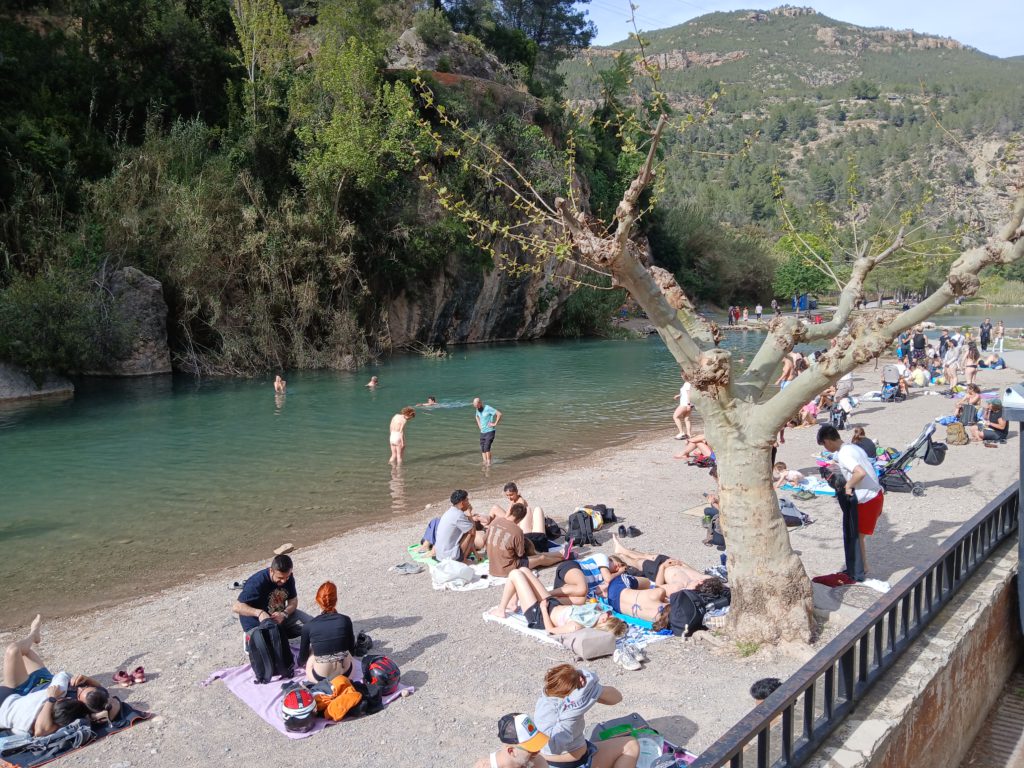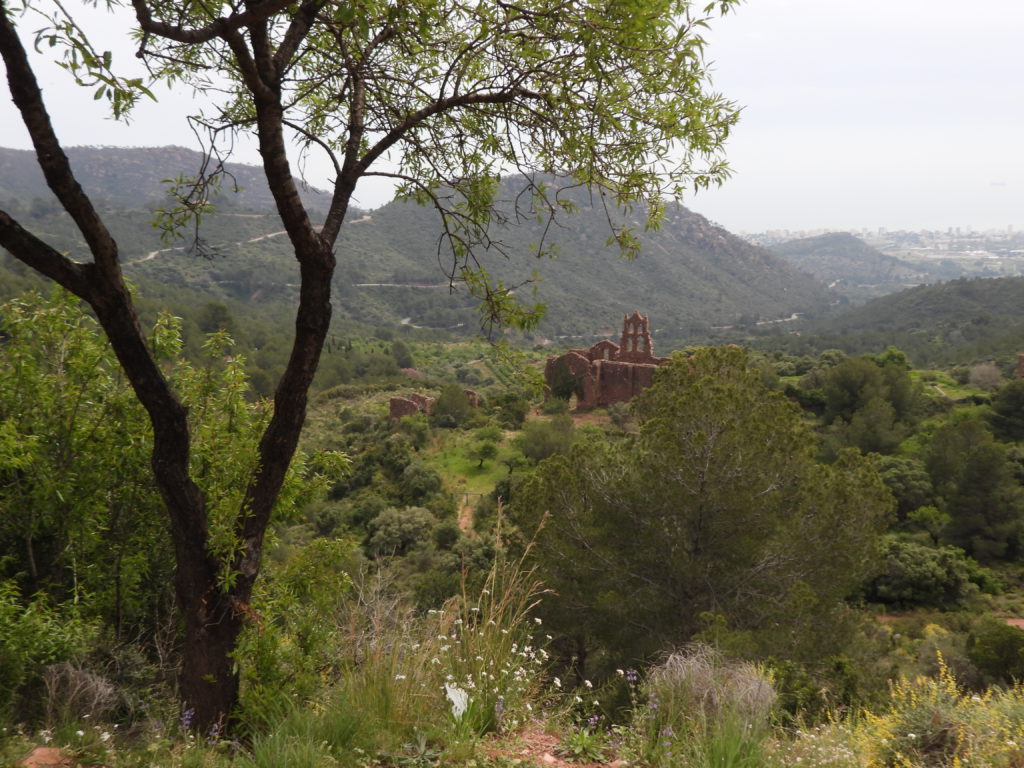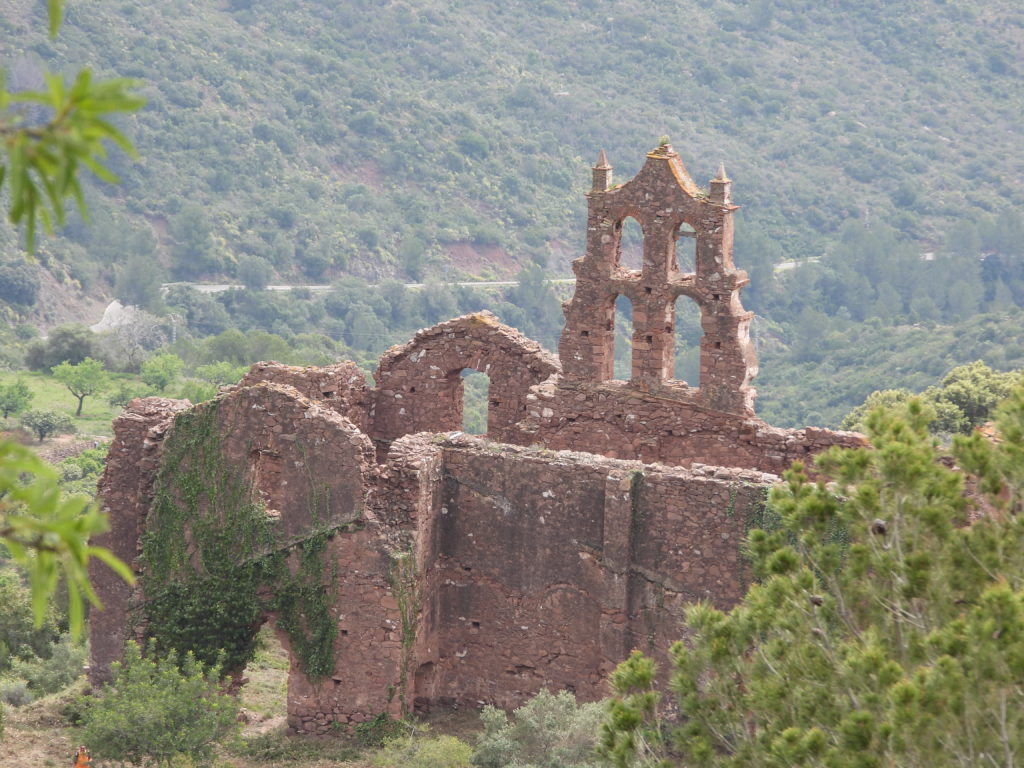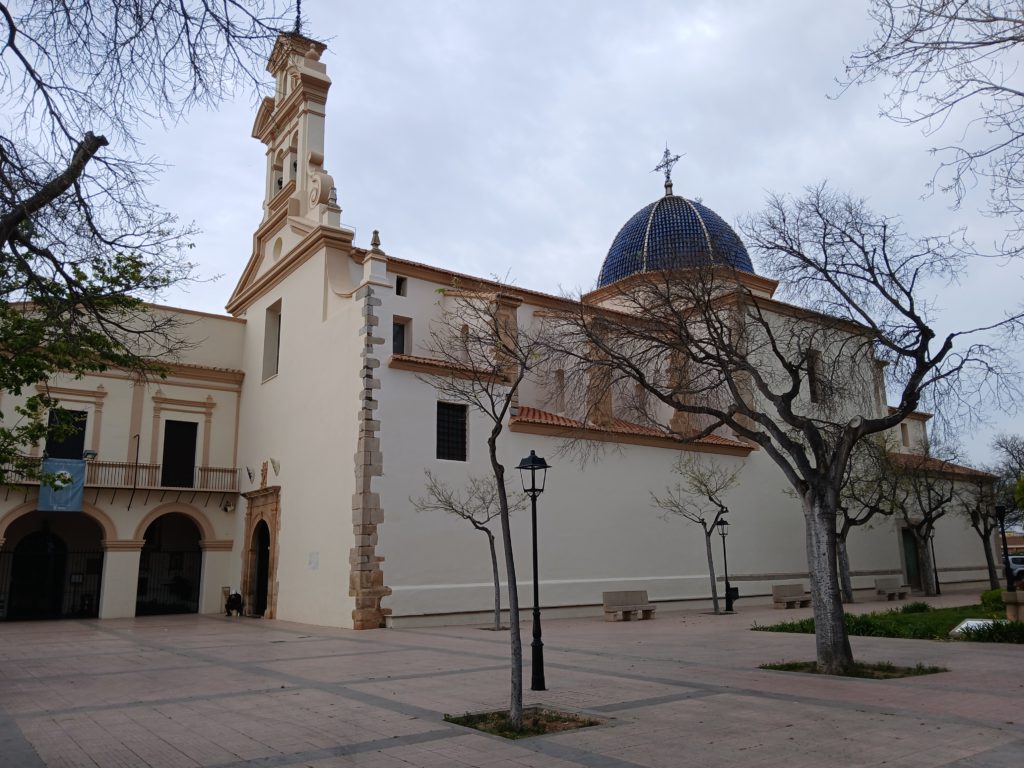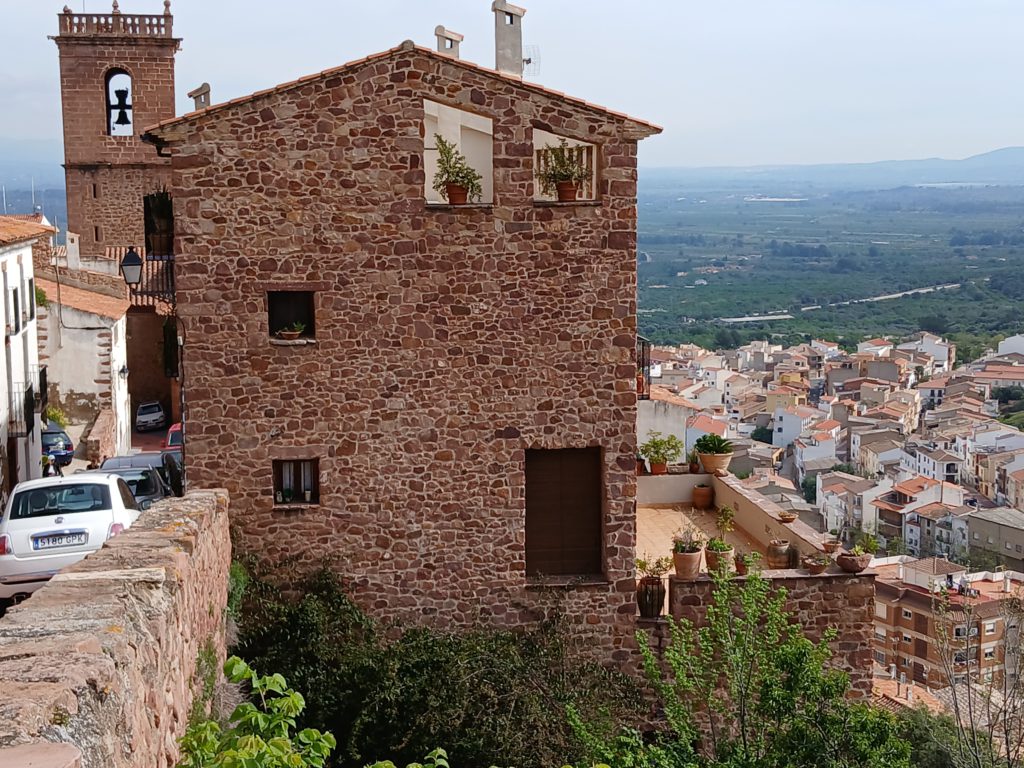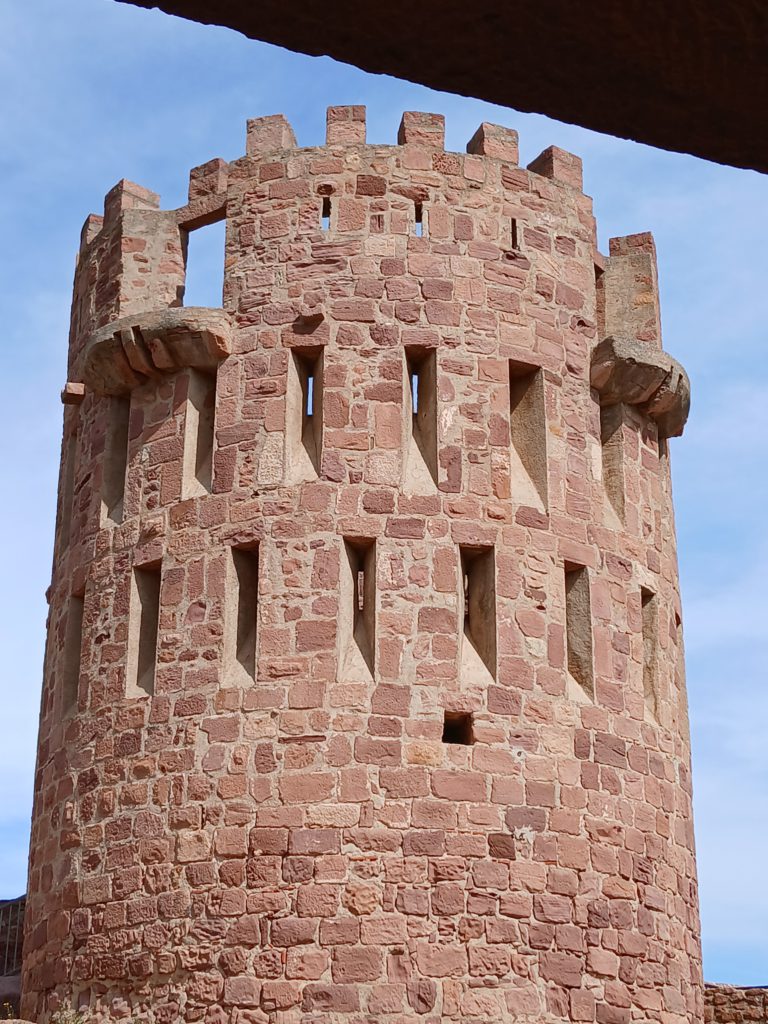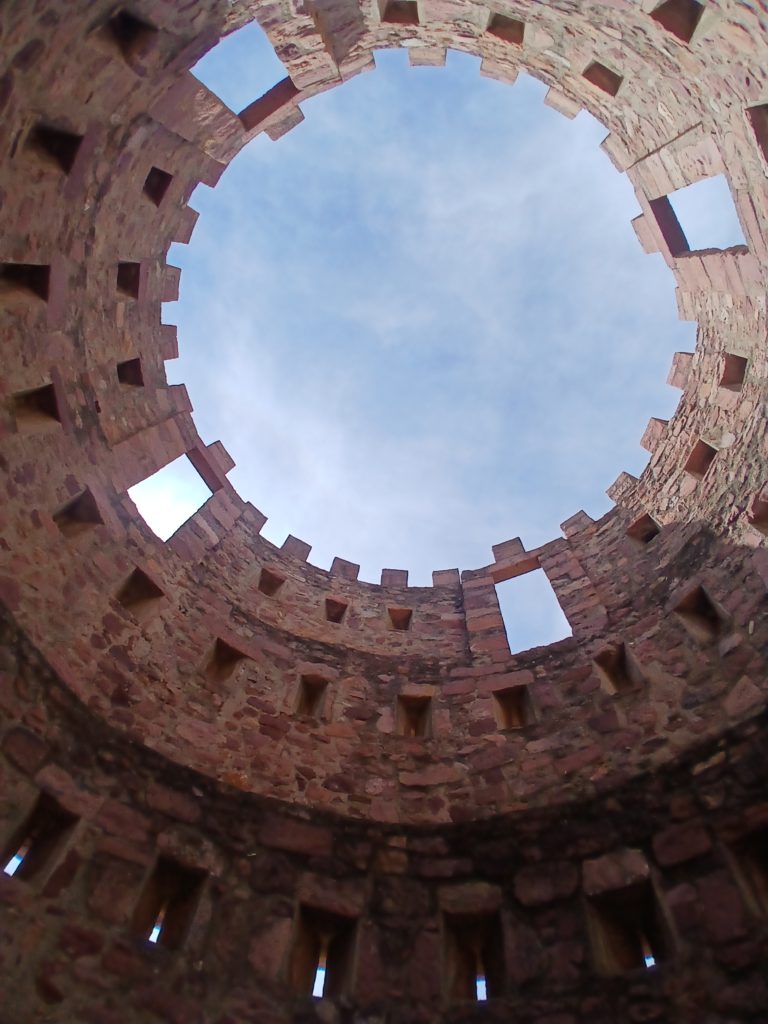[NOTE: Some displayed images are automatically cropped. Click or tap any photo (above the caption) to see it in full screen.
Getting off the 17 hour ferry from Sête, I’m tired, but it’s a beautiful day and I’m eager to explore Corsica. Pascal and Marie have urged me to sightsee the north end of the island, Cape Corsica, which is a relatively narrow “finger”. We’ve disembarked in Bastia, one of the largest Corsican towns. It sits at the base of the cape, so getting off the ferry, I turn right and I’m immediately on my way. The distances aren’t that great so I figure I’ll be done in 2 or 3 hours. I head north along the water, and within minutes the road becomes sinuous, twisting and turning as it follow the steep inclines that drop down almost into the sea. Above me to the left are entire mountainside communities perched on precipitous slopes. I will find this is common on the island. Flat land is scarce so many people live on steep terrain. Not far along, I see a tower high above to my left and find the street that climbs to it. Climb it does in switchbacks and steep uphill curves. The tower turns out to be the spire of a church in a wooded setting.
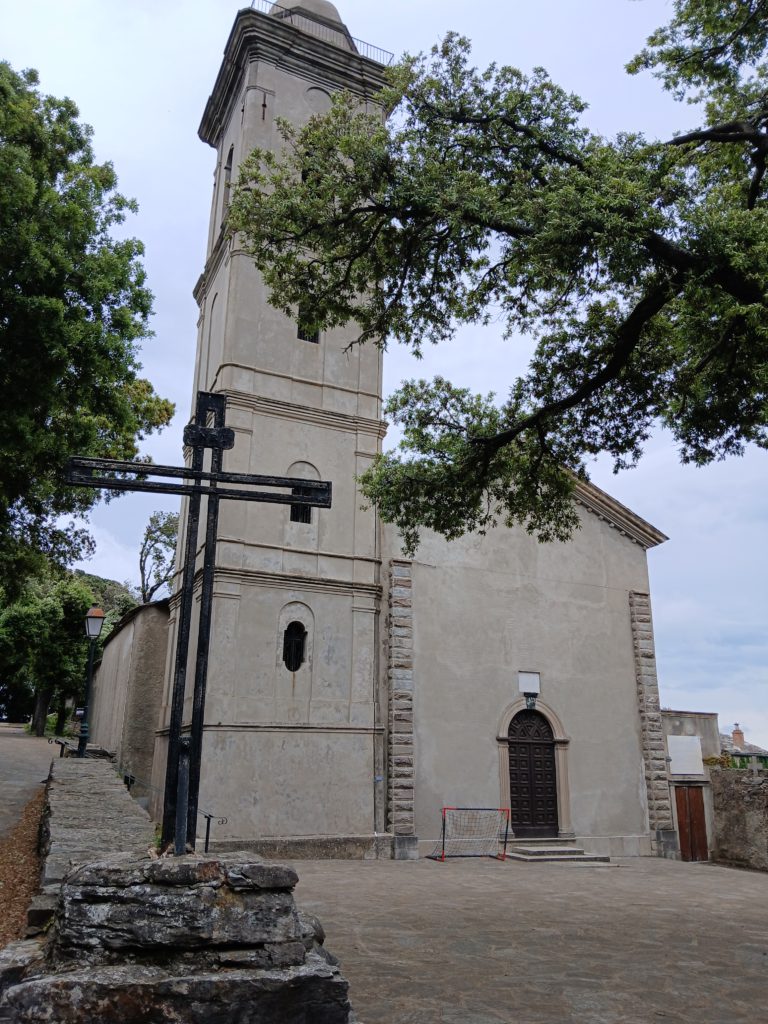
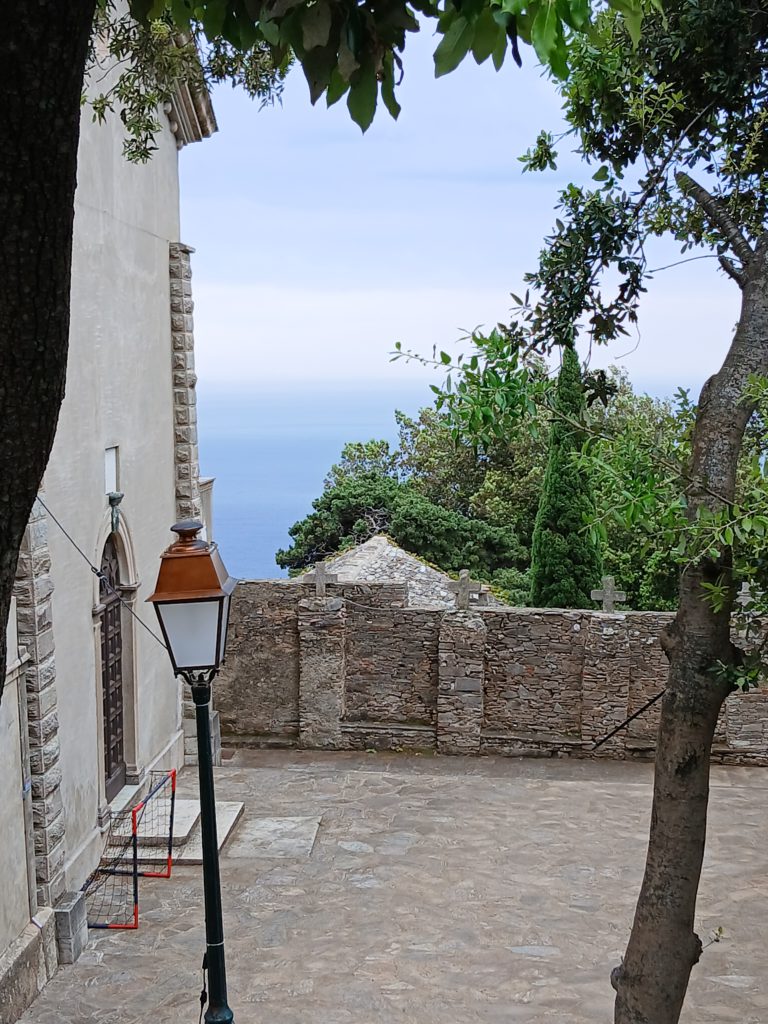
Going a little further, I hit a dead end residential alley with a stunning view of the coast and sea.
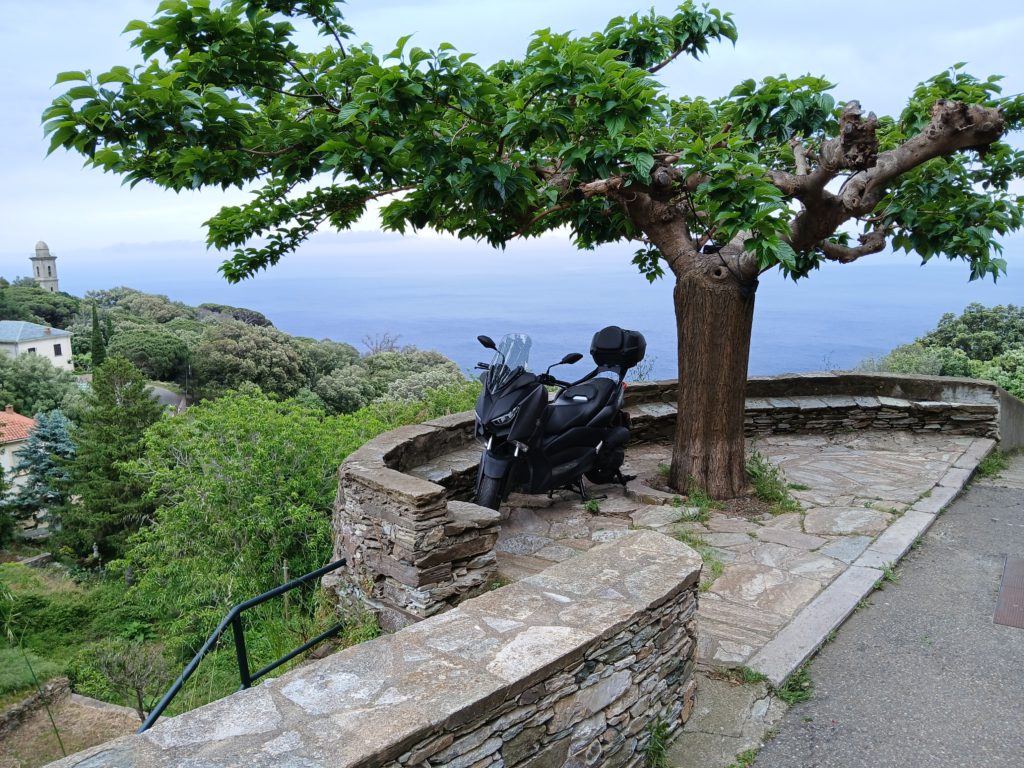
Twisting my way back down to sea level, I continue north. I’m really tired from my uncomfortable night on the ferry, so I stop twice for short naps. The northeast corner of the cape is sparsely populated, so I turn off on a dead end road just to see where it goes. It gets a little rough as it ends at a very pleasant beach and adjacent bar. I figure a bath will wake me up, so I go into the quiet water to swim and float for a while. Immersion does the trick and my fatigue disappears, so I walk the coastal trail for a mile or so to get a better look at the island of Elba off to the northeast. Just off the coast is a small island containing one of the 16th century Genoese watchtowers that ring the entire island. Their function was to warn of Muslim Ottoman galleys, also known as Barbary Pirates, approaching from Africa to raid for loot and Christian slaves. The basic Genoese strategy was to yell, “Run, run, hide! You can’t protect yourselves!” They eventually gave up Corsica as unmanageable, also due to interminable revolts of the locals. They got out gracefully by selling the island to the French in 1768.
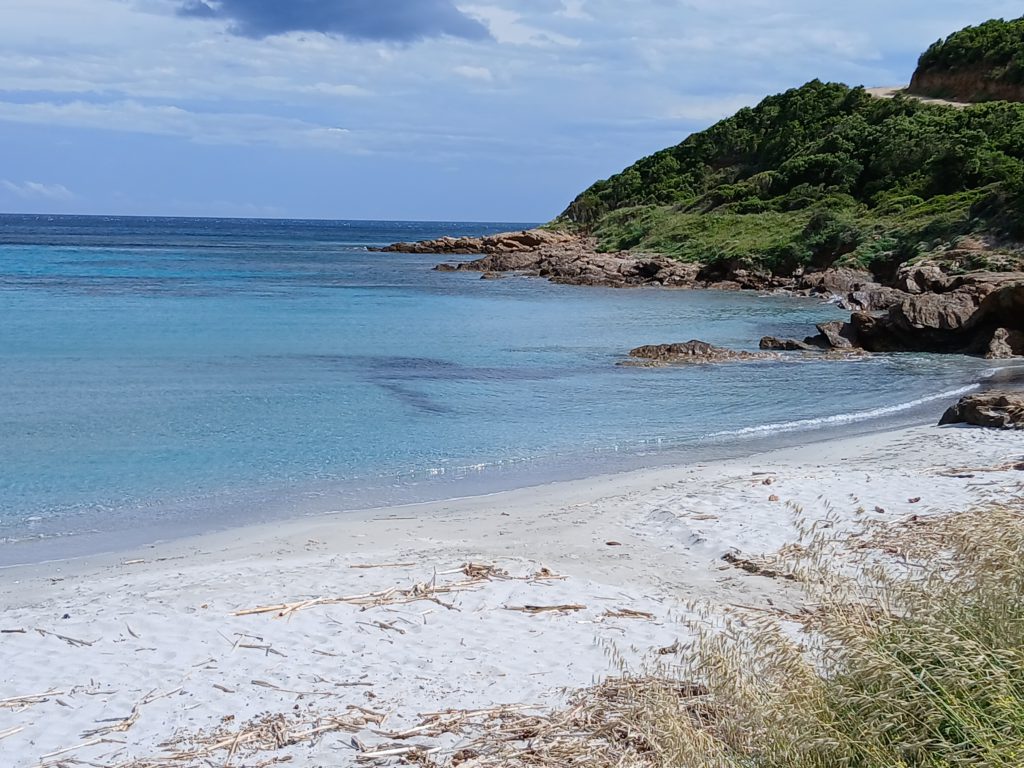
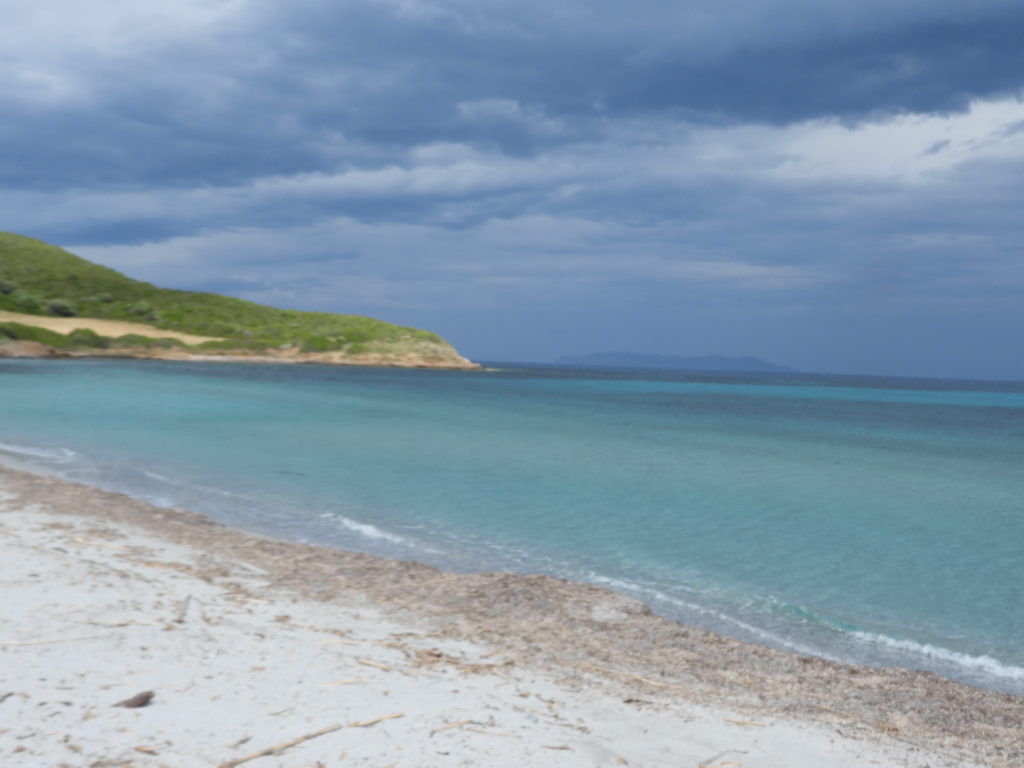
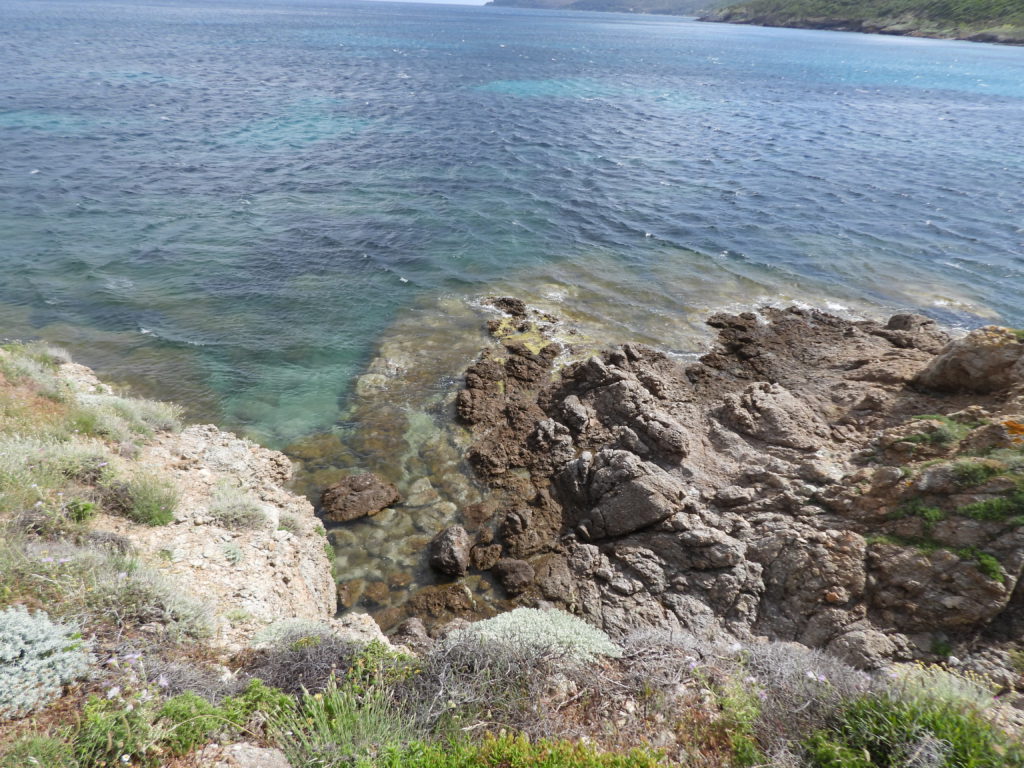
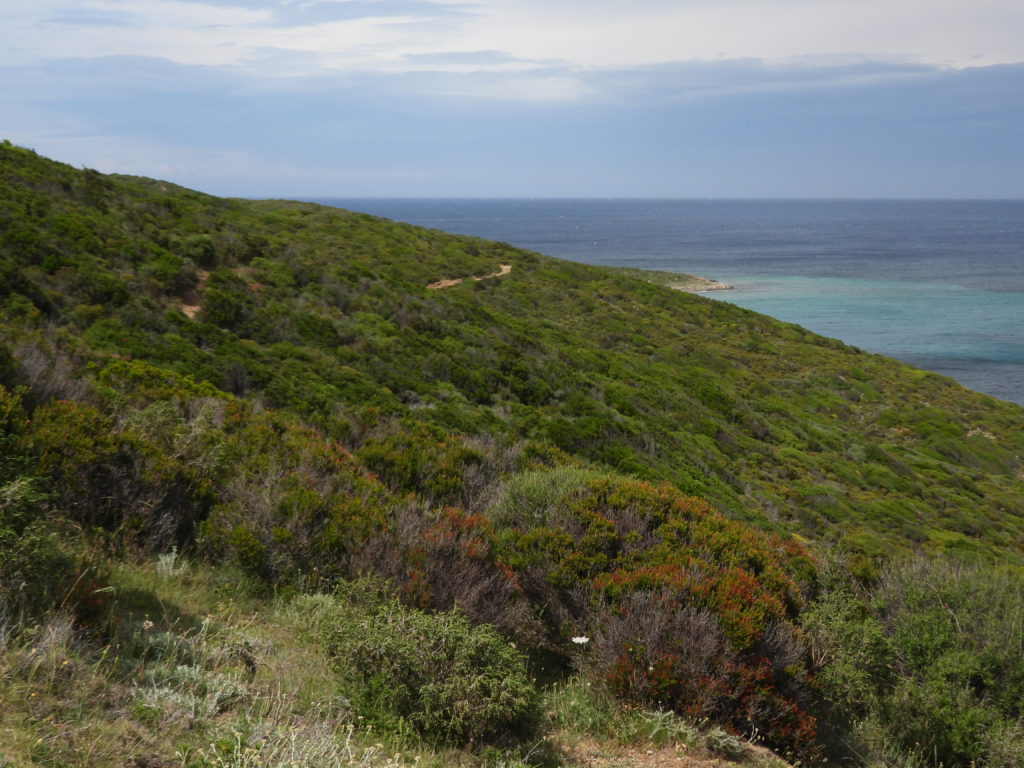
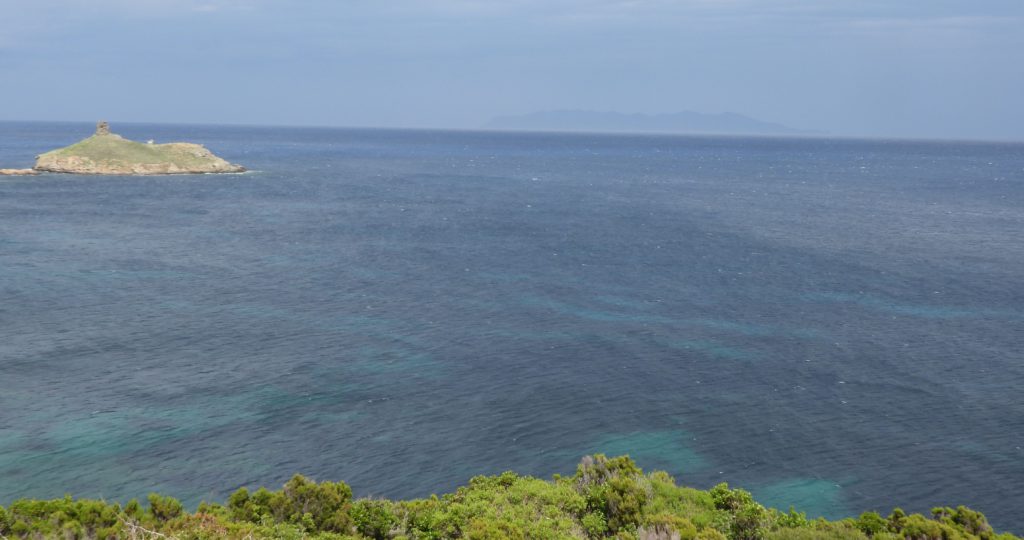
Eventually, I return to the car and continue my counterclockwise circuit of the cape, stopping briefly in the picturesque northern tip town of Barcaggio before turning back south along the west coast.

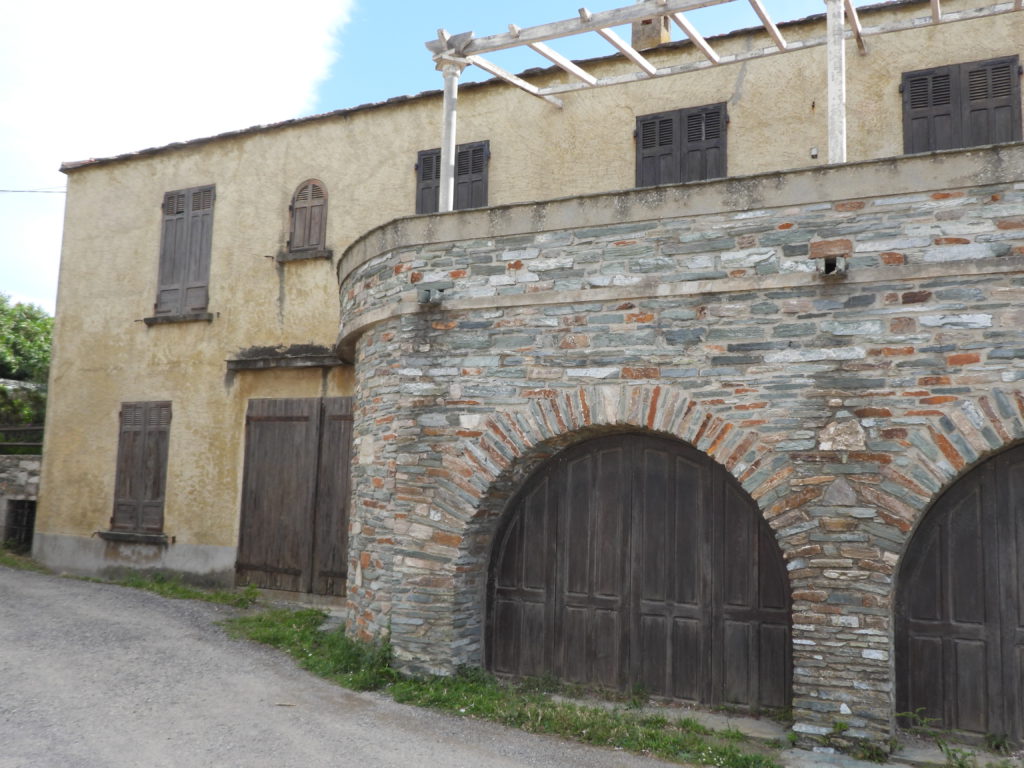

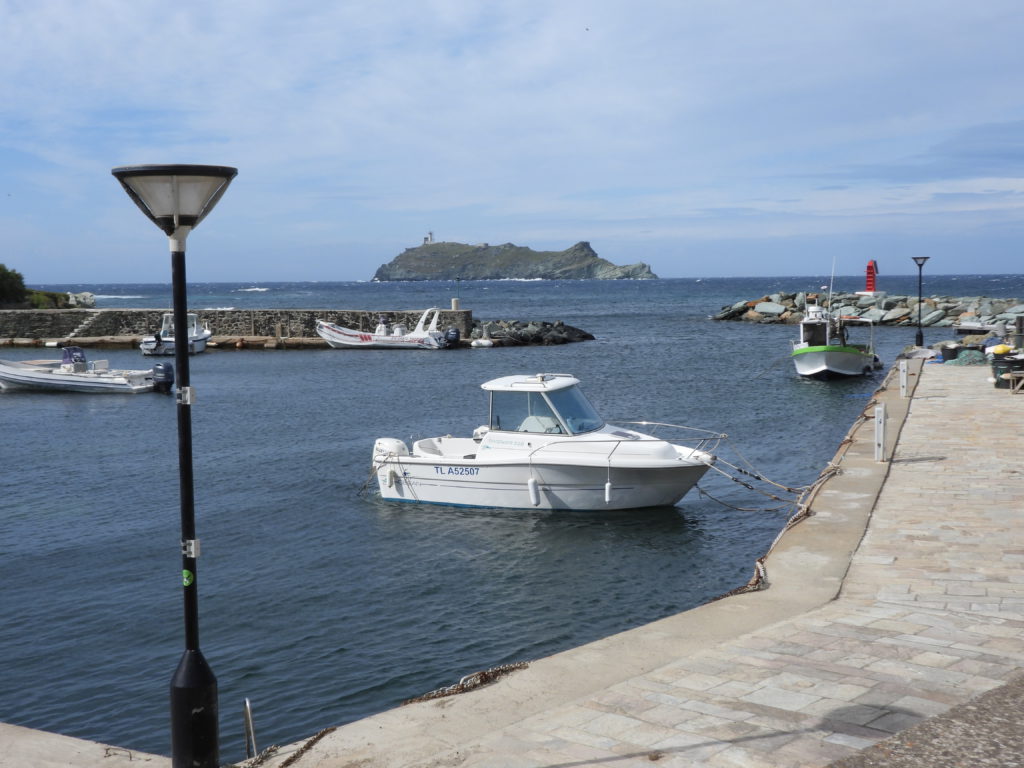


Every turn of the road offers beautiful but precipitous views of lushly green mountains with many exposures of bare rock, always with the sea at the base. I had no inkling Corsica is so beautiful. The road winds high above the coast with barely a straight stretch anywhere. I’m due at Pascal’s home at 7 PM but I now see that my inchwise progress will make me at least 2 hours late. I let him know and he replies that he will not wait dinner and suggests I eat something before arrival.
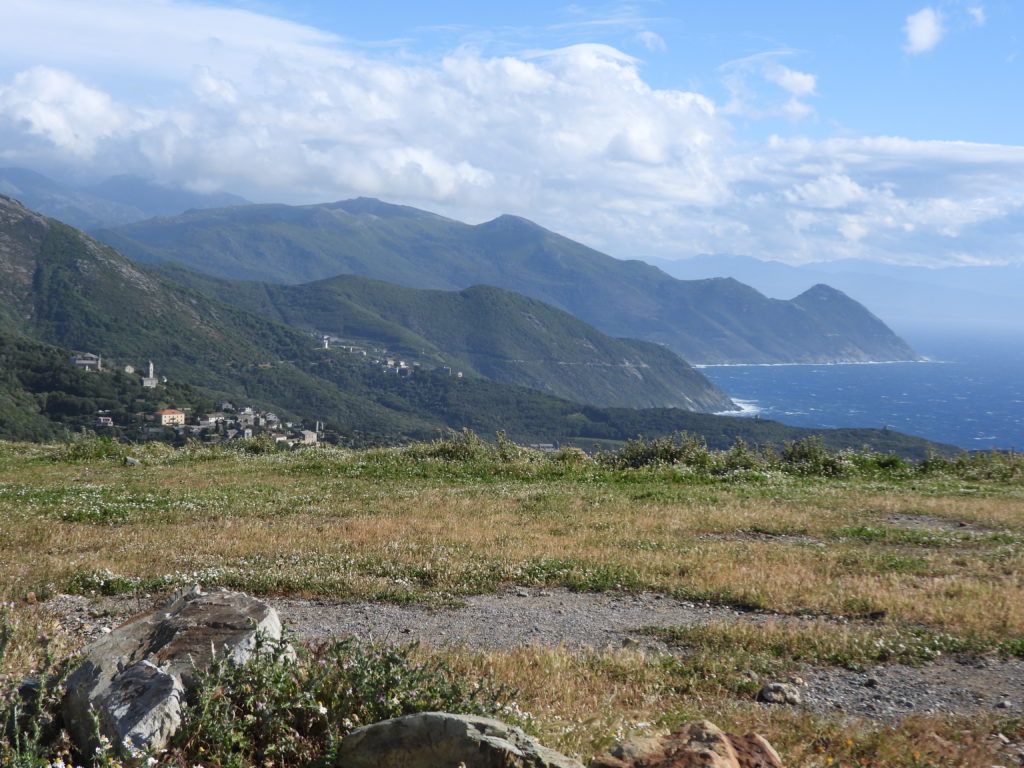


Finally, at almost 9 PM I reach his house on the east side of of the island and he readily agrees travel on Corsica roads is excruciatingly slow despite (and because of) the magnificent scenery. We spend a little more time getting acquainted but since we spoke at length on the ferry and because I badly need a comfortable sleep, we make it a fairly early night.
When you’re on an island with a car, it’s important to know how and when you can leave. Ferries can easily be fully booked or very expensive. Thus, first thing this morning I check out the possibilities. The ferry ride to Sardinia, my next destination, is only 30 minutes but Pascal tells me two of three boats of one company are not operating and the other line is shut down completely at the moment. Indeed, online searching shows nothing available on either line until June 4th, which will slow my progress to mainland Italy by too much. Hoping there is a standby system or waitlist that might get me on board sooner, I email the Ichnusa inquiry line. As backup, I ask Pascal to phone them with the same question while I send a query to the other line, Moby, which he thinks isn’t operating at the moment. He gets an answering machine, so we have no useful info yet.
I’m setting off today on my own tour of southeastern Corsica, and I decide to add a stop at the physical ferry office at the southern tip of the island. I set off on a secondary road that parallels Corsica’s mountainous backbone. Running from north to south, the range has peaks to almost 9,000 feet and in the distance many still have substantial snow cover. The scenery quickly becomes amazing.

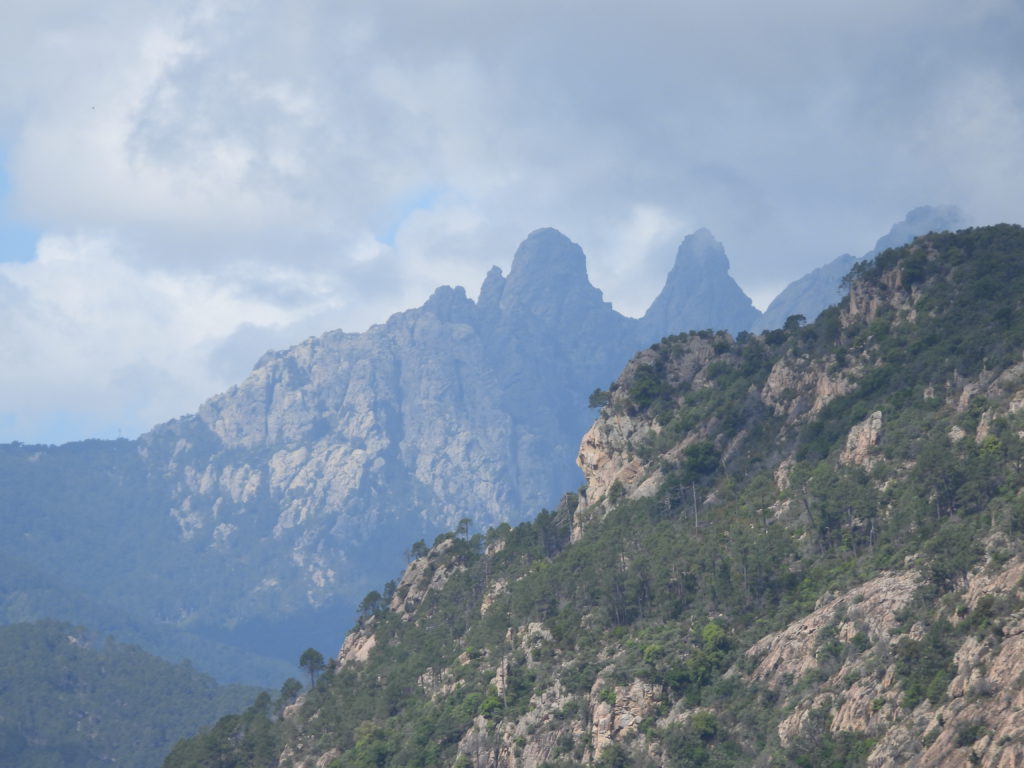
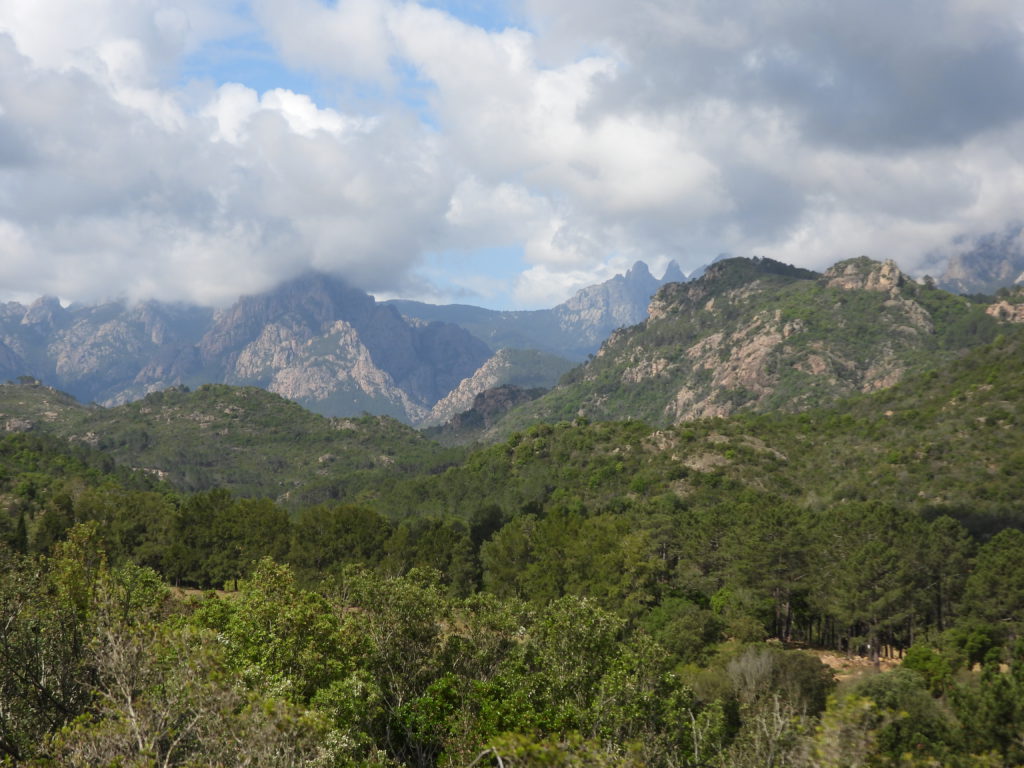
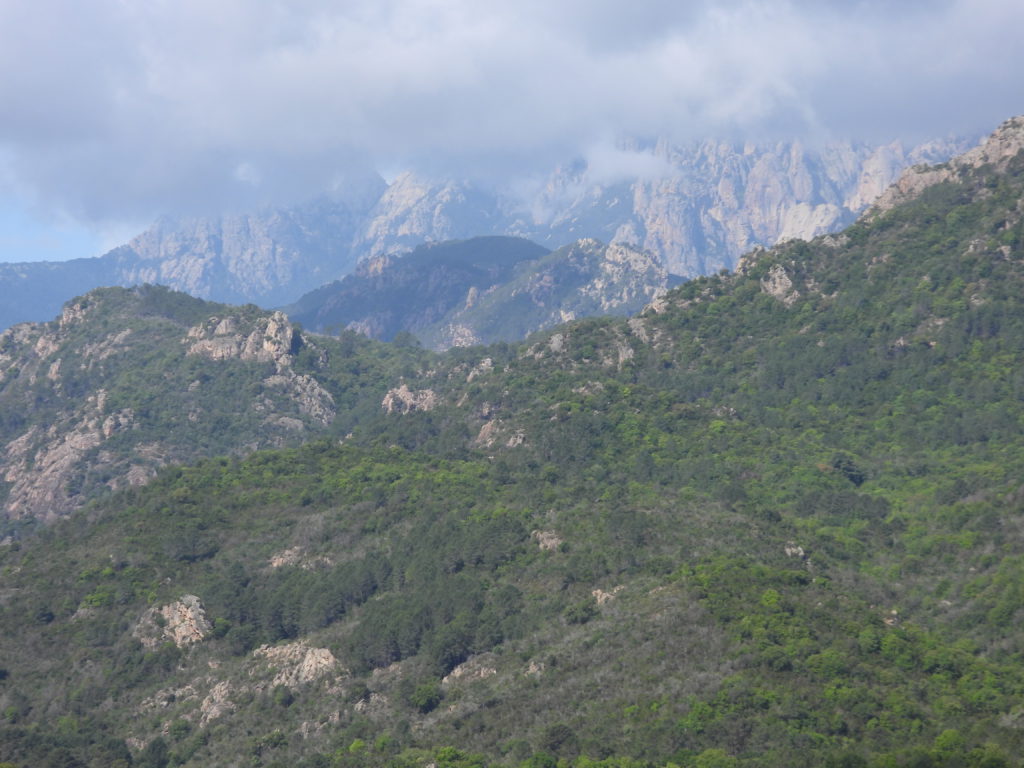
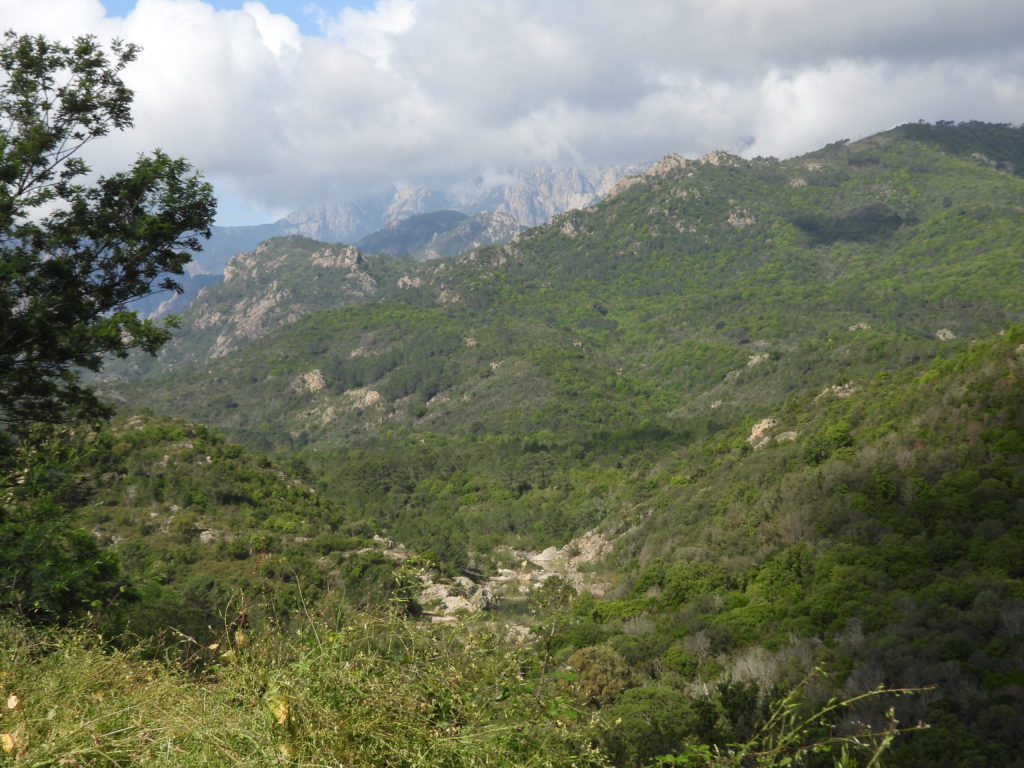
One of my first encounters is a river pool that’s a near perfect swimming hole. It’s inlet is a small waterfall, and the pool is long and deep. I later find out this is where Pascal grew up, spending many hours fishing the river to help support his family.
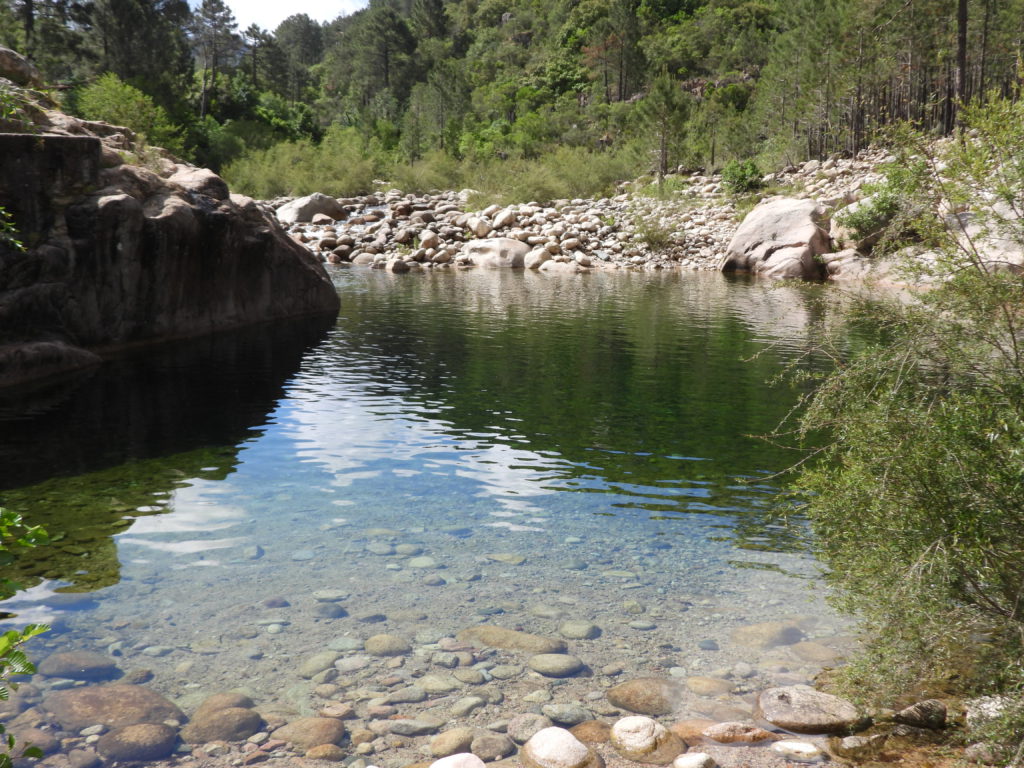
As I resume my southwestward drive, the road goes up and over a ridge through a large fire burn area. Judging by the regrowth, I guess it dates from about 10 years ago.
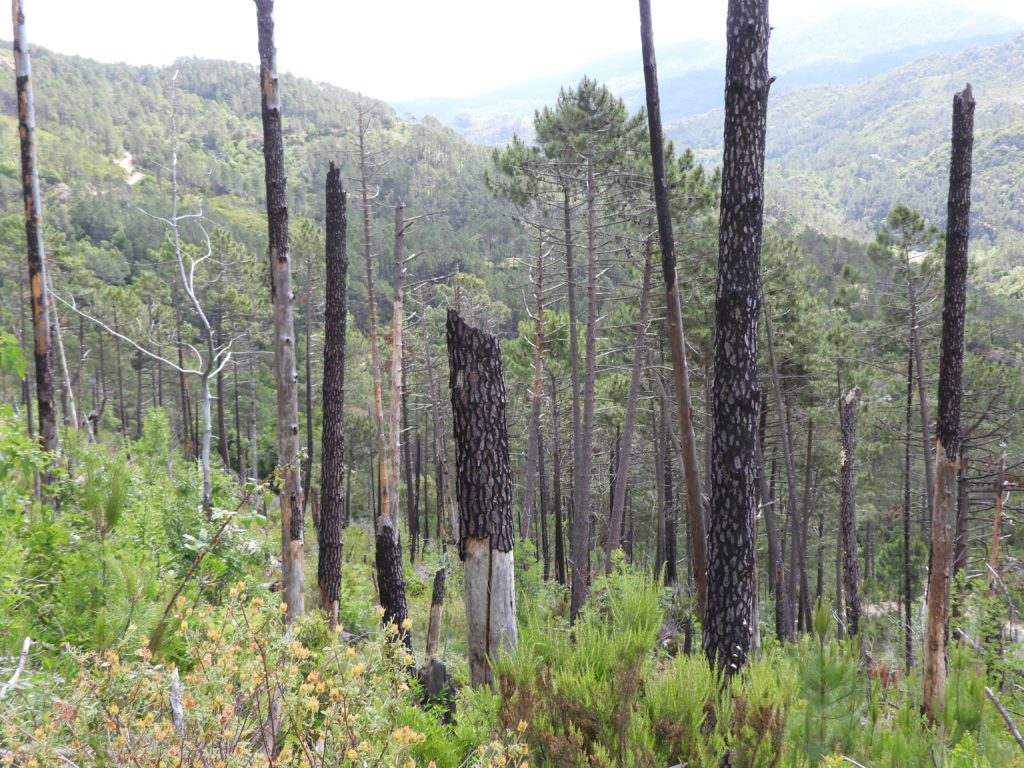
Descending, I come to a wooded challenge park. It’s still closed, but when open it offers a series of rope walks, zip lines, and flexible bridges. It must be fun to work the course.

I stop at a parking area signed for one of Corsica’s hundreds of trails and fire roads. Ahead are rugged, sculpted, mountains. The views are a mixture of bare rocks and mature forest, much of it pine trees. In the other direction, I’m looking back down at the Mediterranean, about 10 miles distant. I am still shocked at how ruggedly beautiful Corsica is.
I take a short hike up the trail and end up making a loop with a steep, rocky descent on a “sort of” trail back to my starting point. The sun is out but temperatures are modest and a stiff breeze keeps me cool.
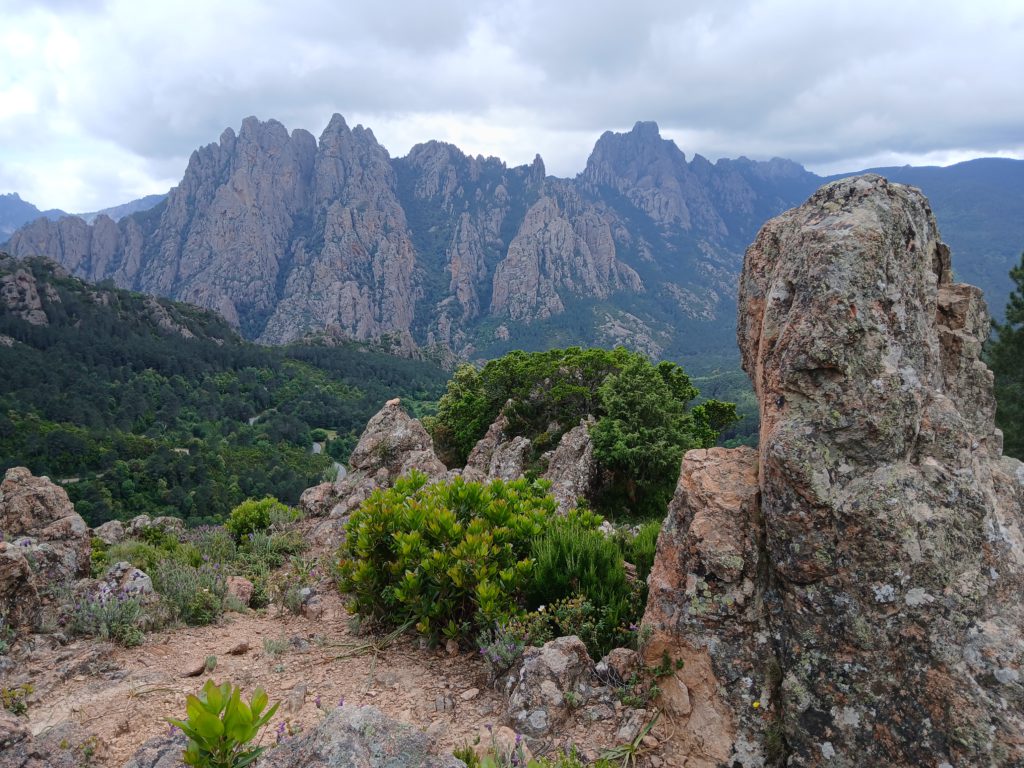
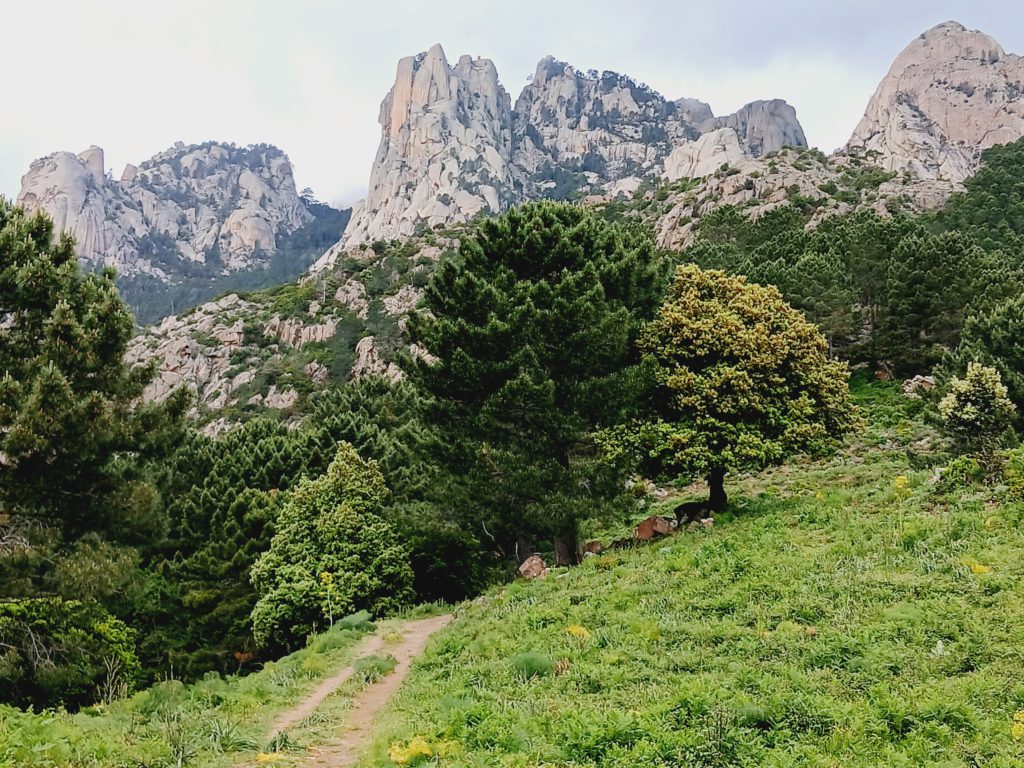
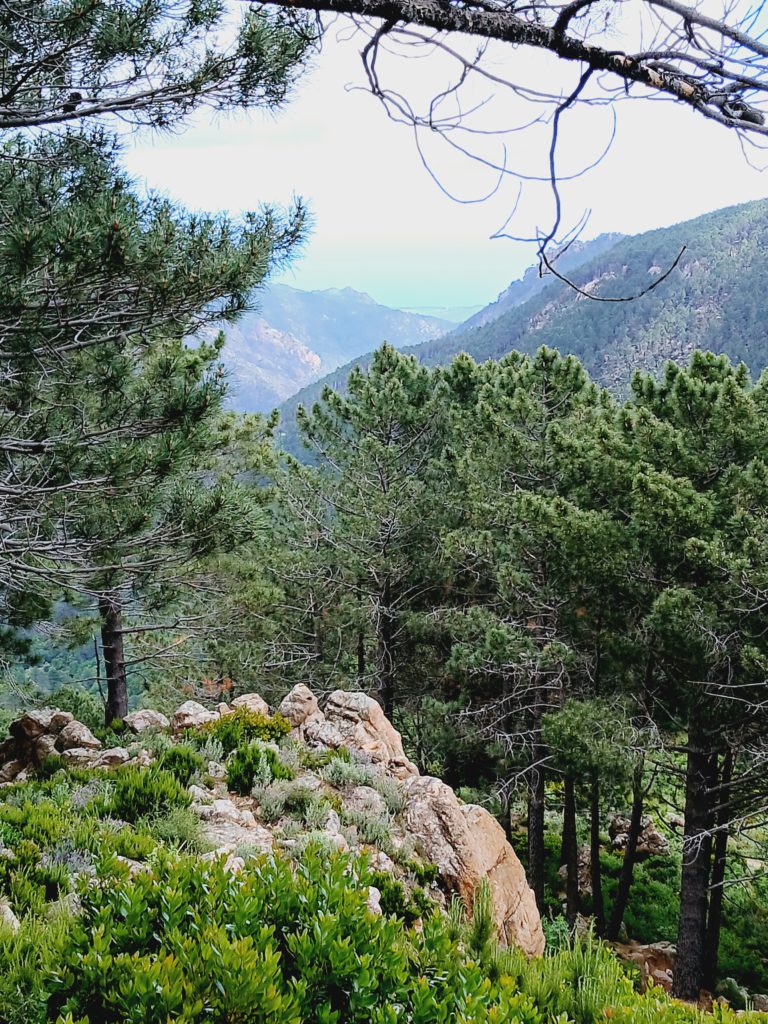
Re-entering the forest, the road becomes serpentine, winding tightly upward toward Bavella Pass at about 4,000 feet. Pascal has told me I can hike to a waterfall here but the parking areas are crowded and private. About a 1000 feet past the main crush, I find a pullout, park, and walk back to the trailhead. The scenery here is also rugged and I start downslope on a well worn path. After 20 minutes, a trail sign points out that the waterfall is about a 4-hour round trip. Given my other plans for the day, this is too far so, disappointed, I reverse and head back to the car. South of the pass, the road descends spectacularly and steadily toward Porto Vecchio on the eastern coast, another important Corsica port.
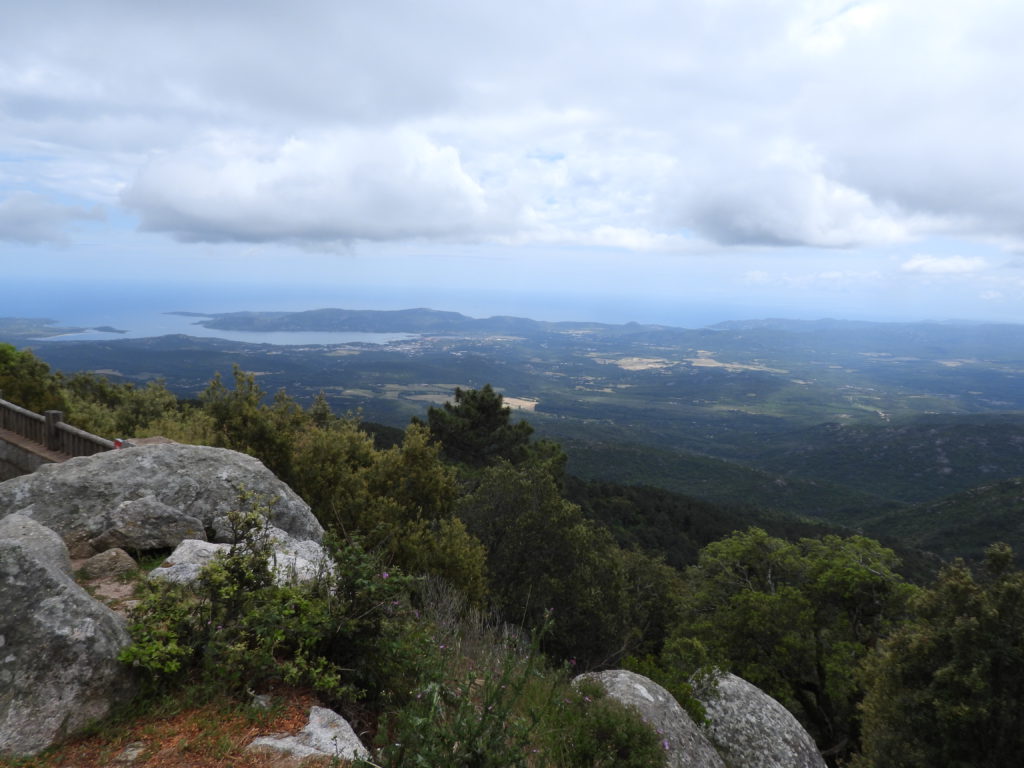
Back at sea level, the temperature is noticeably hotter. In addition, the center is full of tourists, so I content myself with a drive by and then leave via the waterfront.
From here, it’s another 40 minutes south through flat, coastal territory to Bonifacio, the ferry port closest to Sardinia, about a 30 minute crossing. The town is attractive, but also crowded with visitors. I have a hard time imagining how bad island traffic must be during the actual summer vacation period with the crush of people, cars, RVs, and tourist buses winding their way along the narrow, mountain roads. I work my way downhill to the port, leave my car blatantly illegally parked, and walk to the ferry terminal building. There’s a line of vehicles queued up for boarding but no ferry in sight. Inside the small terminal building, the counters for both ferry companies are closed and deserted, so I’m not going to get the firsthand information I came for. Unwilling to wait for an unknown period and perhaps not getting a productive answer anyway, I give up, I continue my driving loop, heading northwest along a scenic coast highway and turn off, as planned, on another mountain road, this one on the west side of the backbone range.
It’s another sinuous highway, with narrow lanes and endless sharp, blind turns. This one goes over two passes above 4,000 feet. The first, Col de Vaccia, is fairly austere and rocky, while the second, Col de Verde, fits its name (“green”), being heavily forested all the way through. Off and on, I come around a curve and encounter farm animals grazing without stress on the roadway. Cows, pigs, goats — they all have the right of way over the few cars along the route.
Eventually, I get back to the coastal plain and Pascal’s house where he has dinner almost ready. More pleasant conversation and then bed. I’m pretty concerned about getting from Corsica to Sardinia in a timely way. In the worst case, I might have to ferry directly to the Italian mainland and skip Sardinia entirely. I recall a casual remark Pascal made that the local ferry companies don’t participate with travel agents and that he thinks Corsican Ferries handles that aspect for them. Pursuing that lead, I look on their site and — to my great surprise — Corsican Ferries itself advertises one, and only one, voyage between Corsica and Sardinia, for this Thursday. It’s a perfect date for me and, even better, the fare shows as “half price”. I have no idea why. Perhaps it’s because I joined the Corsican Ferries loyalty program before my first journey, from Sête, France. It doesn’t matter. I book immediately and my scheduling problem is solved! It’s a 5 hour crossing instead of 30 minutes, but who cares?
Saturday, I stay close to home. I meet a friend of Pascal’s, a young woman struggling with her role as volunteer firefighter due to encounters with sexual harassment and some fear of possible violence in the overwhelmingly male environment. This is so sad to see in this day and age but she says there is no official support to address her situation. Pascal recommends I check out the Saturday street market in town, so I walk to the center and end up buying homemade salami and goat cheese from one of the vendors. They’re both really tasty, even though I’m not generally a salami lover.
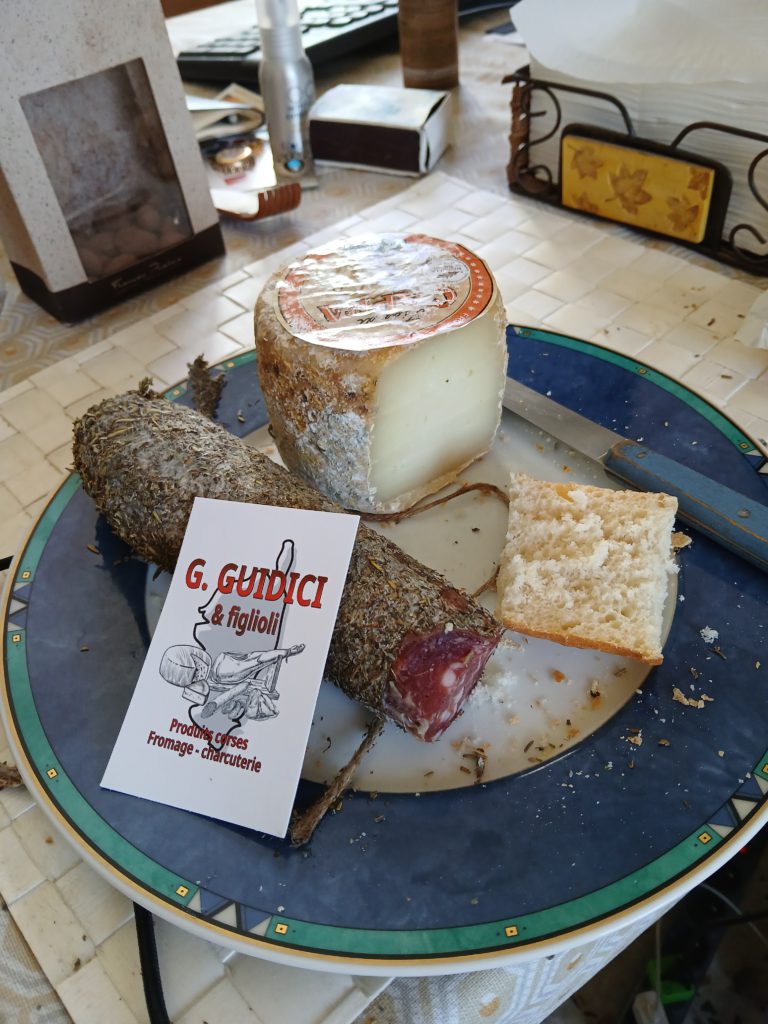
I’ve been offering to cook something but I always get a polite refusal. Finally, Pascal confides that he doesn’t like anyone using his kitchen. But, he tells me, he’s much more relaxed about it now. Until a few years ago, he says, he didn’t even allow anyone else to enter it.
Sunday morning, I ‘m going to head across the island to a second host. She has warned me to bring some food because Sunday shopping is very limited in her small village. Fortunately, in France stores are open Sunday mornings. I bid farewell to Pascal and his dogs after a really nice visit.
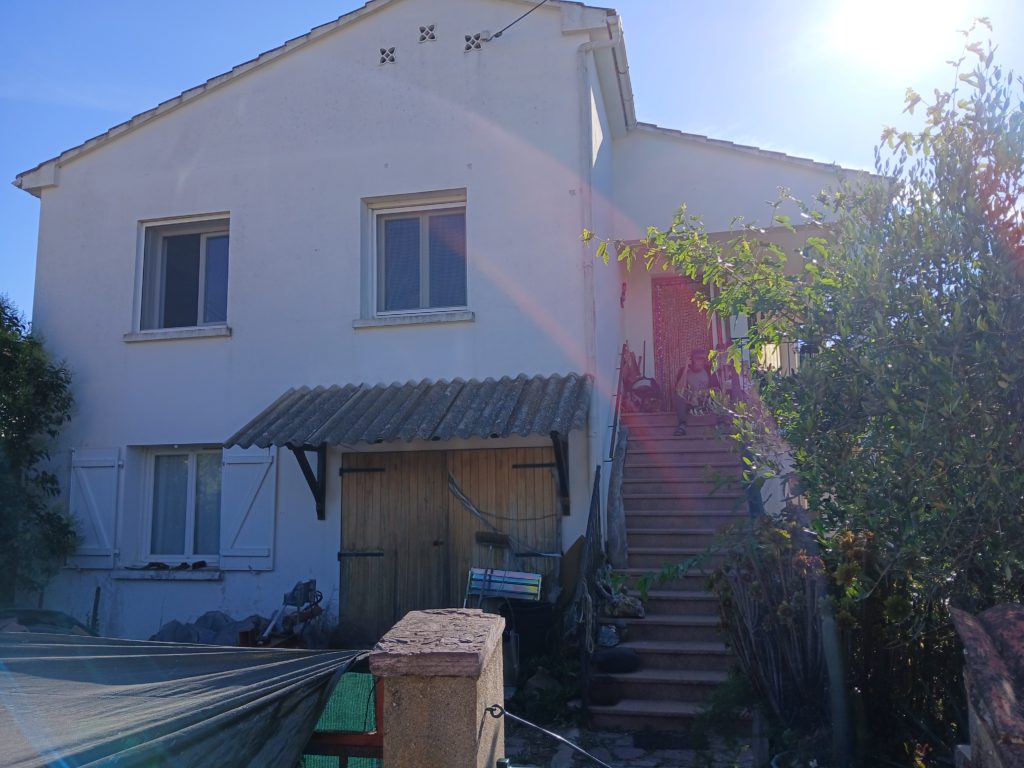

I stop at the supermarket and load up on groceries. By now, I’m accustomed to long drives over short ‘as the crow flies” distances across Corsica. The route starts out in flat, coastal countryside. Not too far along, I get a view of a beautiful piece of engineering design, a 14th century Genoese bridge over the Tavignano River. Amazingly, until a modern bypass was opened in 2011, this ancient bridge was part of the main highway, carrying even heavy truck traffic.
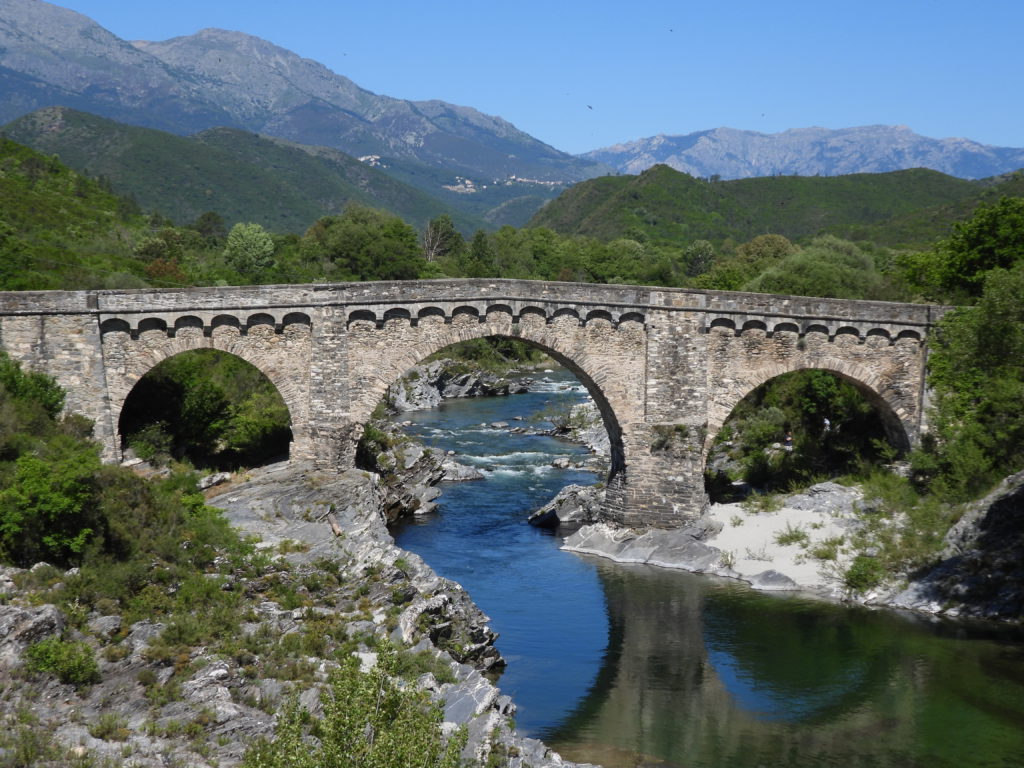

The transit to the tiny community of Curzu takes over 3 hours, twisting surprisingly close to snow covered peaks,
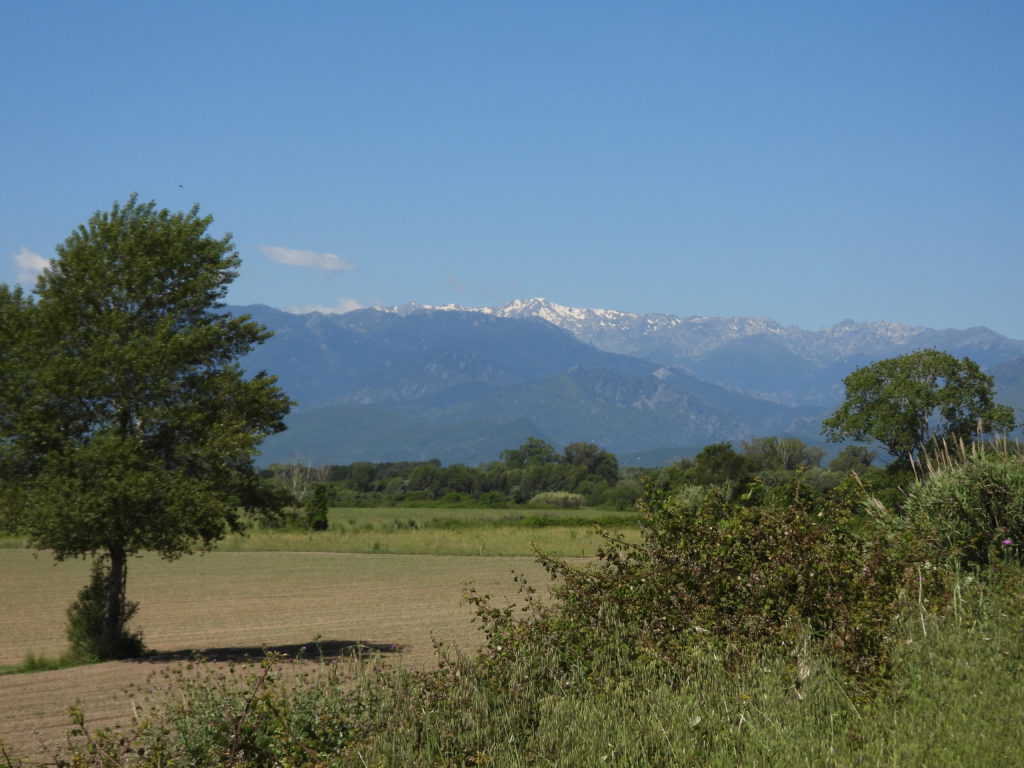
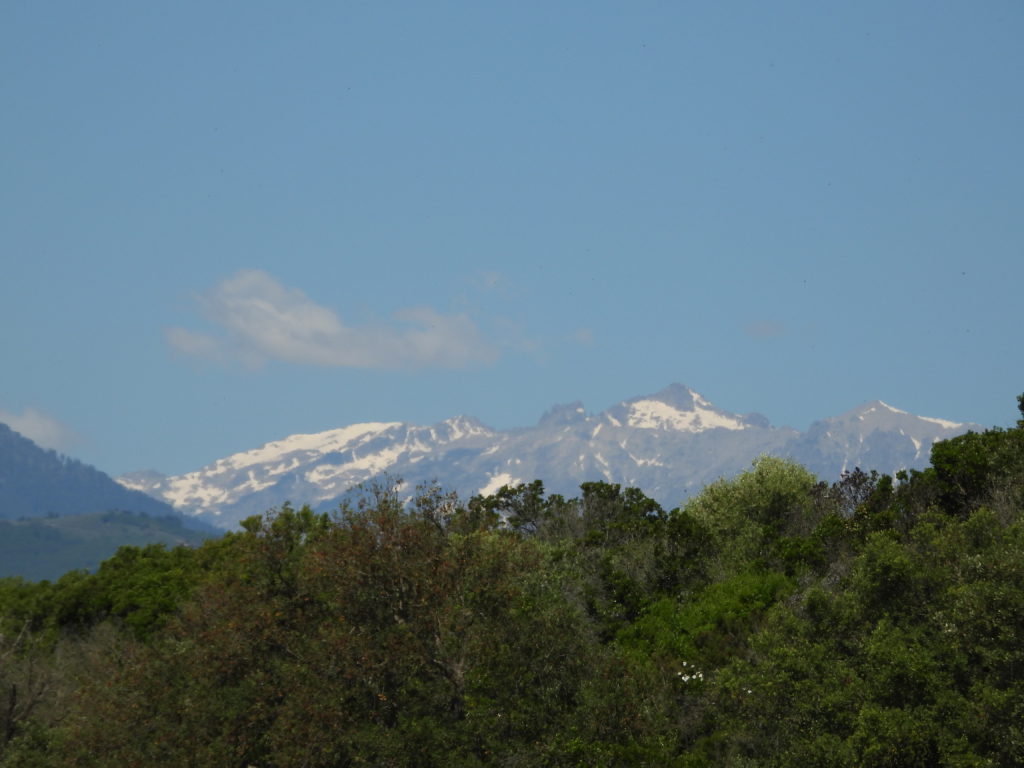
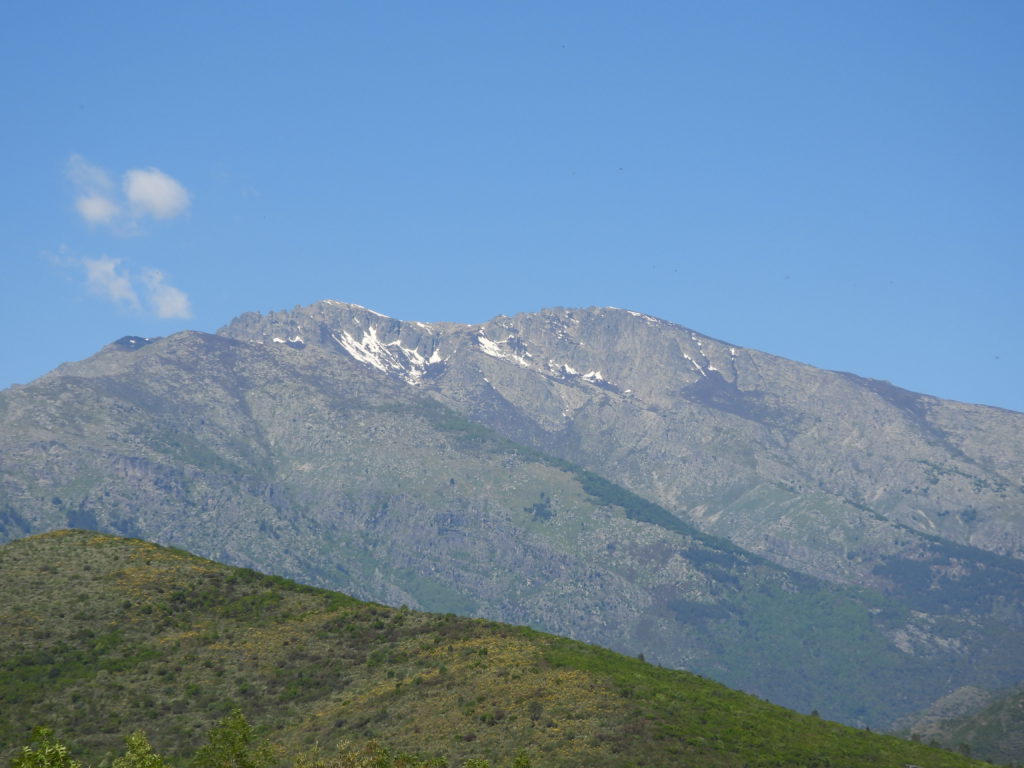
then climbing to the Col de Vergio mountain pass, shrouded in beautiful pine forest.
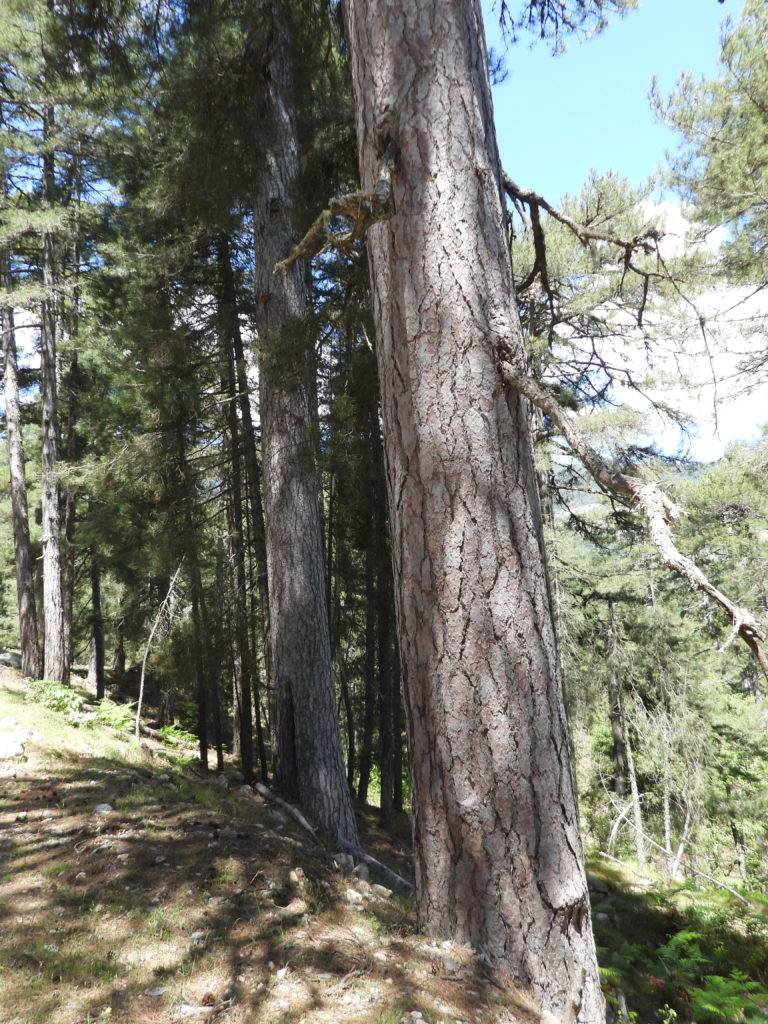
On the other side, the road descends continuously for an incredible 25 miles only to immediately start rising again over another ridge.
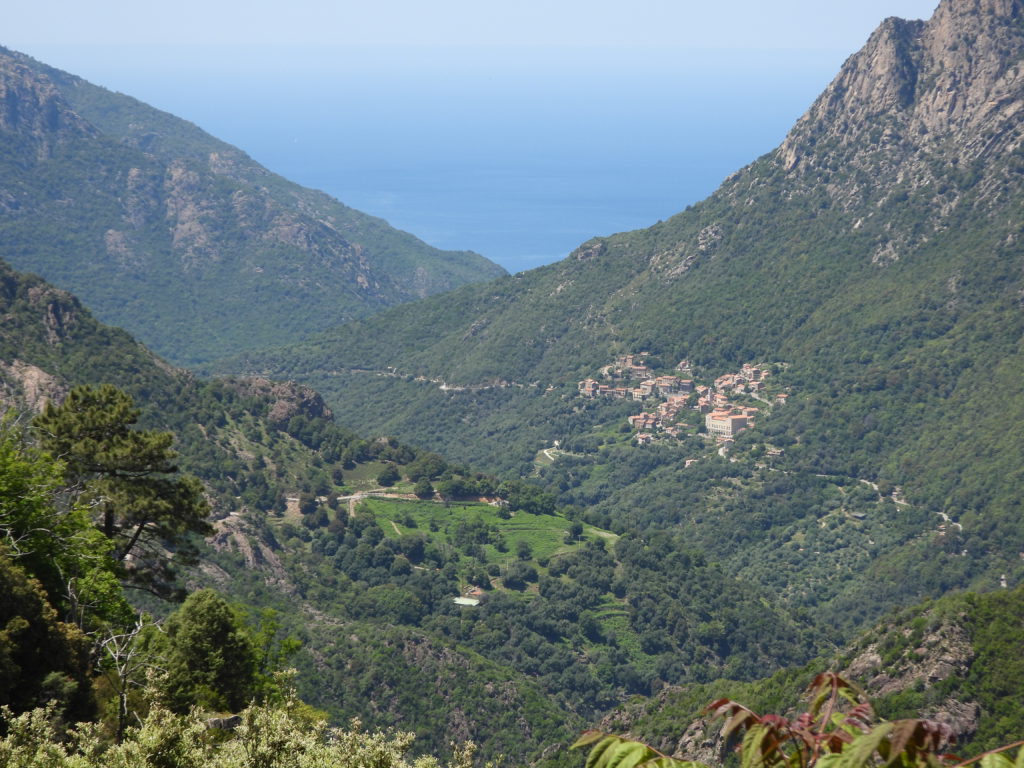
I finally reach Curzu, The last stretch — the main road through the village — is a severely steep switchback. MaryLou’s house extends down the embankment below the road. On the narrow street, I park with my wheels tucked perilously close to the vertical wall above her property to leave room for traffic, including large delivery trucks.
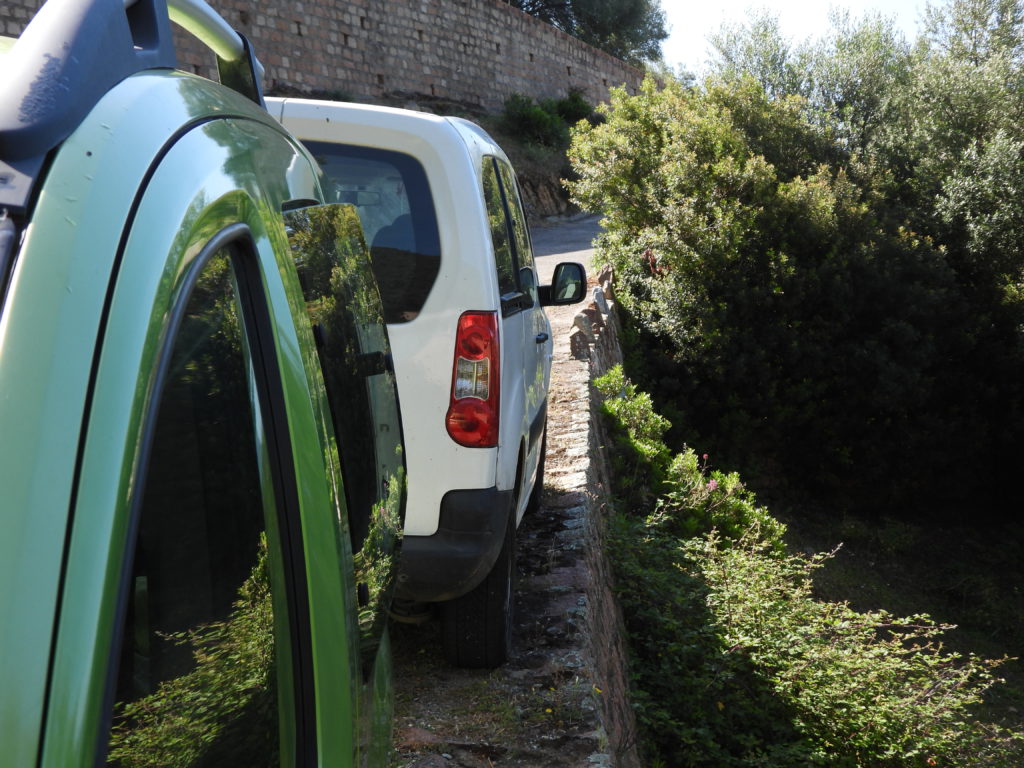
She escorts me down steep outside stairs to a delightful garden terrace and the lower floor of the house, which includes her guest rooms. The long drive, requiring my full attention through the mountains, has tired me out and Marylou invites me to take a nap on an outdoor bed in the shade of a large tree. This is irresistible and an hour’s sleep puts me back in action.
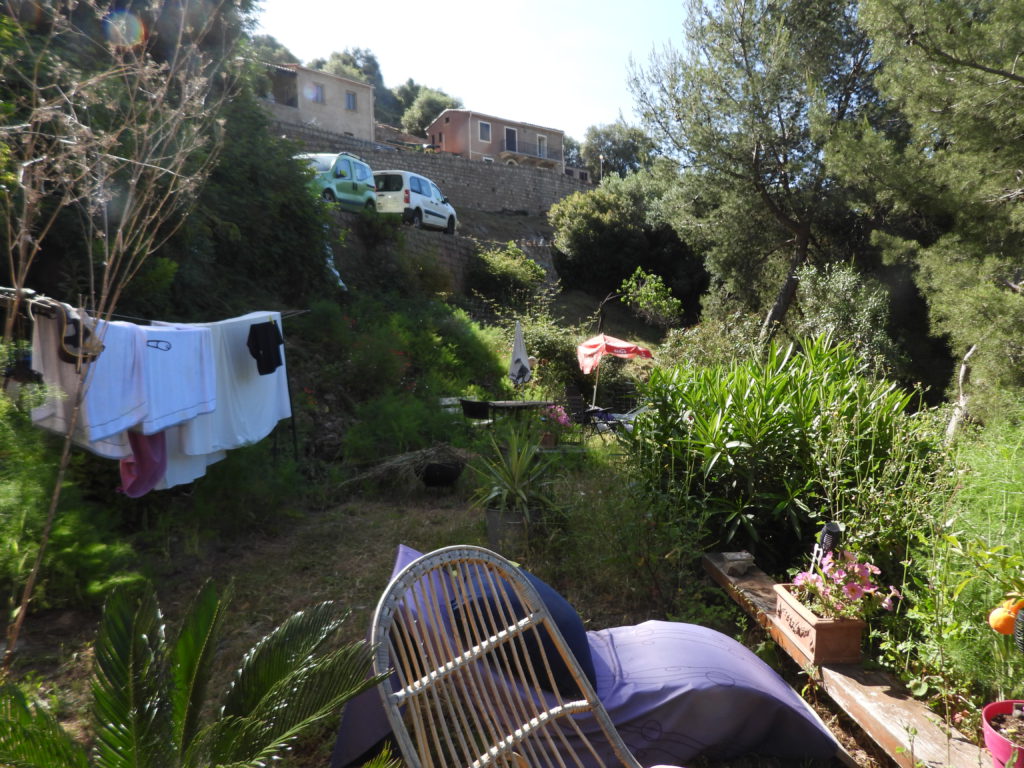

Marylou is French and German, very dynamic and welcoming, and makes her living as a language trainer. She does some of her work remotely with students and also has a student, René, staying in the house, taking daily lessons. He is German, a Mercedes truck salesman from the Dusseldorf area. I meet him when he returns from a day of biking. Although married with 2 teenagers, he’s taking two months off without pay to learn French with MaryLou. I never fully understand his motivation, but at least in part, he just needs an adventure and this is it. From my point of view, dealing with two teenage daughters is reason enough to bolt.

All three of us speak German, and MaryLou is also proficient at Spanish, but outside of René’s French lessons, when the 3 of us are talking or it’s only him and me, we settle on English for our conversation. He already speaks it but he’s not overly proficient. The more we talk, the better his vocabulary gets, with me supplying the right word whenever he has only a German term at hand. We talk about his decision and he describes how many of his colleagues simply can’t understand how could do such a thing. He says one of his friends is so upset he no longer talks to him.
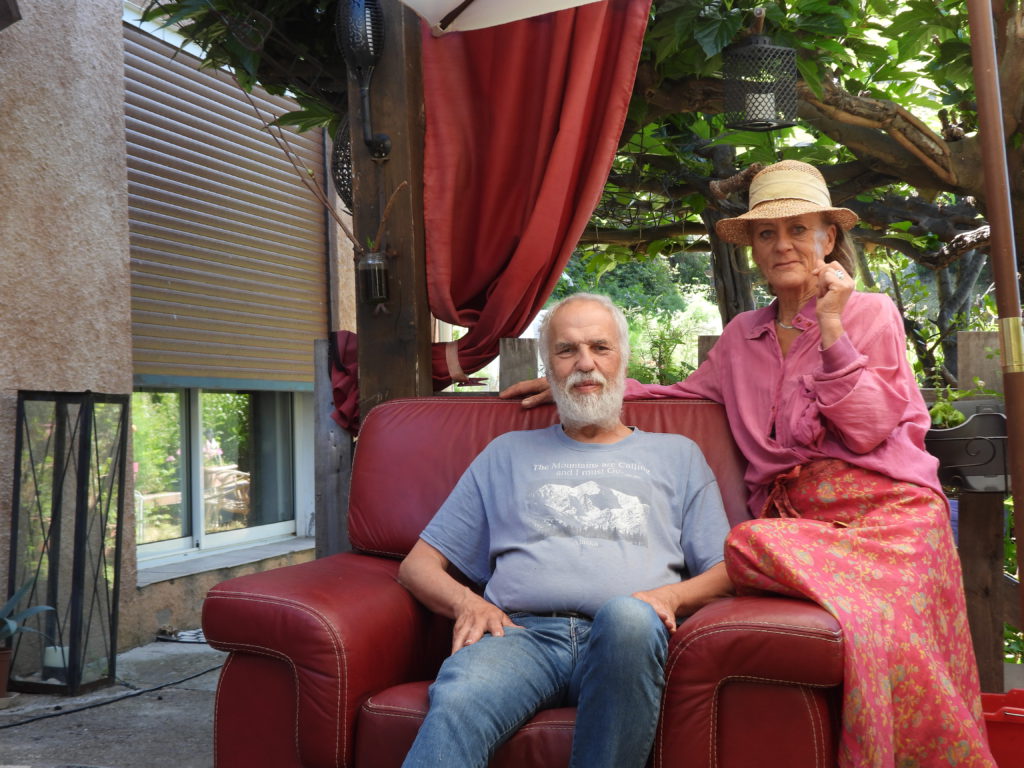
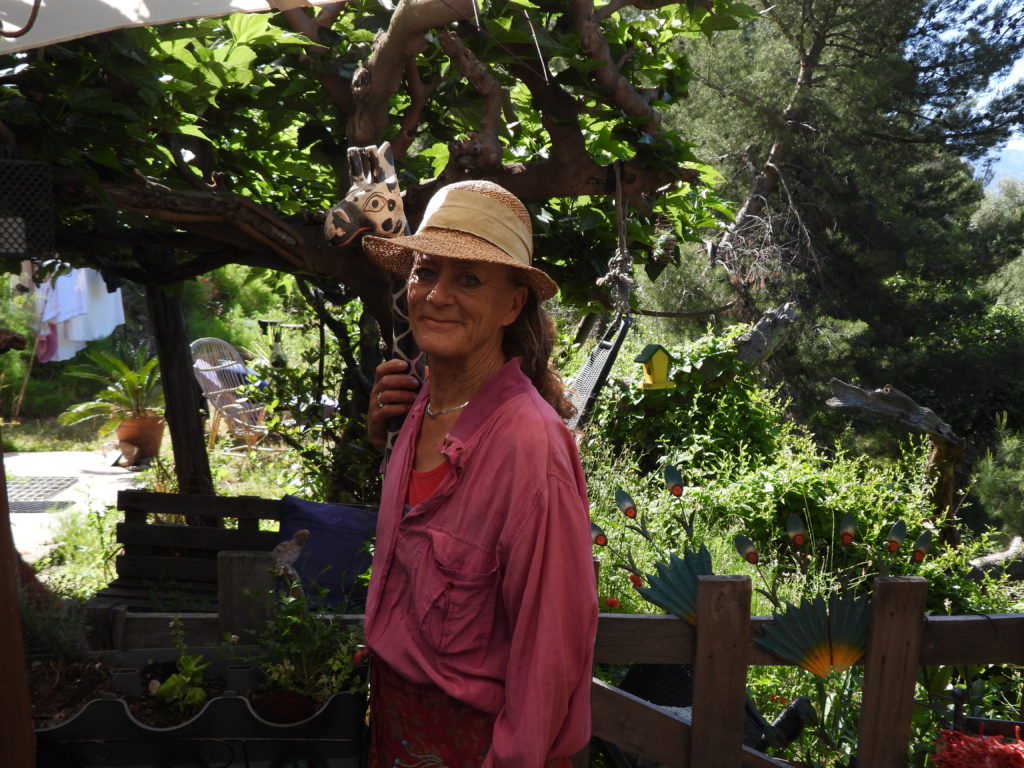
About 6 PM, when the sun is less intense, MaryLou and I go down to the beach for a swim. It’s only 3 miles away, but the dizzying descent from Curzu on narrow roads takes 15 minutes. This part of the coast is a large bay and the water is quite calm and not at all cold. Marylou has brought a diving mask for me, so I can see the clear bottom and the large number of saddled seabream that inhabit the surf zone.
She describes a recent close call when she swam from the beach around a headland, had some kind of problem, and ended up with a very difficult barefoot hike over steep rocks to get back to the beach. No one knew she was out there so she was completely on her own. This leads to a conversation about how solitary activity is much more risky than with a companion. A small mishap with a second person present can be dealt with, but solo it can be dangerous or fatal. About 8 PM, we return home, where René has cooked a delicious dinner for all of us and the good talk continues until bedtime.
Monday morning, I prepare a French toast breakfast for us. It’s really a quite consistent pattern that foods named after a nation are rarely called that there. There are no “French” fries (pommes frites) or “French” toast (pain perdu) in France, no “Swiss” cheese (Emmentaler) in Switzerland, and no “Belgian” waffles in Belgium (that one’s at least close: Brussels waffle). The patio and garden are so shady and pleasant, and the direct sun is too hot for me, so Monday is spent without going anywhere until late afternoon. The three of us are going to a different beach for a swim. René drives a pretty elegant Mercedes sedan and I joke that he should experience the luxury (NOT!) of my Citroën to see what a real vehicle feels like. He declines the privilege and takes his own car down the mountain.
Once at the beach, there’s a little surf — nothing like the ocean – but MaryLou, thinking of her recent problem, holds off. René and I start to enter the water, but he says he’s not a strong swimmer and doesn’t go in beyond his knees before abandoning the idea. For me, the waves, compared to Atlantic surf, are almost trivial and absolutely no problem. We’re adjacent to a family-run beach bar and MaryLou knows the owner so she’s conversing there. I come out and join them but can’t do much more than nod and grin as the talk is all in French. Another guy joins us and he speaks heavily French-accented German, so I get a bit of participation in but he’s not really interested in what I have to say. As the sun drops, the wind has died down and the water is calm, so MaryLou and I go in for a swim. The bar has had absolutely no paying customers since we arrived, so we decide to have a drink. Something called Palermo is recommended to me, and we get generous portions. It turns out to be some sort of bright red herb liqueur. I could have lived quite well without it, but what the hell, we gave the bar a little business. We drive back up to Curzu and I make the dinner I’d planned for the 3 of us, Chinese fried rice, using all the fresh sausage and produce I brought with me. Halfway through the sauteing, the propane gas tank runs out. At that time of the evening, there is absolutely no way to get a full one, so we improvise finishing preparation with a couple of electrical appliances. It still tastes good.
Since I’m currently about 4 hours from the ferry terminal in Porto Vecchio, I’ve accepted another host invitation in Propriano for Tuesday and Wednesday nights. This will make my Thursday morning run to the ferry terminal much shorter. I’ve written to the host for final confirmation that it’s okay to arrive, but I’ve gotten no reply all day. MaryLou would like me to stay longer anyway, so I have a home. That’s no problem, but I would rather not leave the long make or break drive from Curzu to the ferry for the last minute. There’s only one departure and missing it would likely force me to skip a visit to Sardinia. I ask Marylou to call Françoise, but she just gets voice mail.
I should say here that during my stay with Marylou, I managed to destroy my cell phone. I won’t completely humiliate myself by detailing my stupidity, but suffice it to say if my daughter reads this she’ll know immediately what I did based on my past history. A broken phone while traveling as I do is a grave problem. For one thing, all contact with the outside world is lost unless I’m on my laptop with a wifi connection– no contacting hosts, no ferry status updates, no nothing. Even worse, I can’t see my real time map location. In preparation for the drive to Françoise’s house, I carefully write down each step of the directions on paper. This works well as long as I successfully follow them but if I make one mistake, without the phone GPS, I don’t know where I am and the remaining directions are worthless unless I can successfully backtrack to a recognizable point on my recorded route.
Tuesday morning, my planned departure is on hold since I still haven’t heard from Françoise. It’s another completely sunny day, so I again stick close to home. Later, as the sun gets less intense, we go back to the second beach. Finally, Françoise returns Marylou’s call, apologizing for not having heard her voice mail or seen my prior texts. We agree I’ll go to her house tomorrow, even though the visit will be abbreviated by my need to get to the ferry Thursday morning.
Wednesday morning is when the itinerant bakery truck comes by. His horn signals the customers to come out to the street, much like the ice cream trucks of my youth in Brooklyn. I buy a few pastries. They’re a bit costly and not the best I ever had, but they were brought right to the door.
In the early afternoon, I pack up and leave MaryLou’s for Propriano. It’s been a really stimulating time here with wide ranging discussions and it’s hard to go. The first part of the drive continues southward along a coastal highway. There are continuous, tortuous twists and turns and many beautiful views from the frequent turnouts.

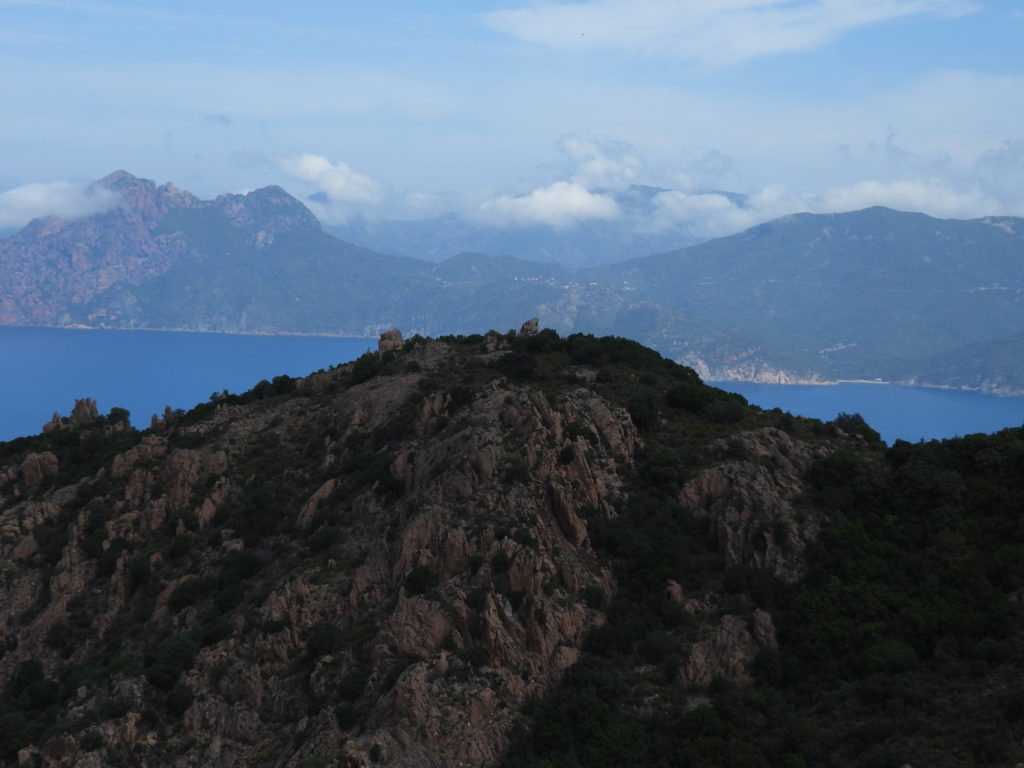

Traffic is quite heavy and I think again how crowded these scenic roads must be during the summer vacation season. Even now, progress is slowed to a crawl by elderly drivers of RVs (which are called “camping cars” in Europe) who think their vehicles are 10 feet wide and insist on taking their half of the narrow two-lane road from the middle, and then crowding to the right and coming to almost a complete stop every time there’s an oncoming vehicle, which is always. At one point, I meet a full size tour bus, completely inappropriate for this highway, which is inching around a sharp turn with a man on foot walking backward directing the driver so as to keep the bus as close to the rock wall as possible without scraping it, this to avoid shoving cars in the other lane over the precipitous embankment. Of course the line of oncoming cars has to wait through this maneuver and behind the bus are at least 50 vehicles that can’t pass it. The final part of the drive is through flatter coastal plains. Fortunately, Françoise’s home is only a couple of blocks off a numbered route, so my written directions get me there without major confusion.
Françoise is a retired teacher. She lives in the lower floor of a large house, having given over the upper one to one of her sons and his family. She often takes care of her two grandsons. She participates in a drum circle and tonight is a meeting on the nearby beach. It’s a pot luck dinner, so she’s prepared a sort of spinach quiche. We load the food and some large drums in her car for the short drive. There are about 15 people and, as usual at a social event where I don’t speak the language, most of the conversation goes over my head. A vivacious Moroccan woman who speaks English takes pity on me and she and I converse at length. After a few hours, the sun is down and I’m waiting for the drumming to start. Instead, food, beer, and wine having been consumed, everyone packs up their gear and heads home. Françoise tells me the group can be frustrating which is why she has quit and rejoined it many times.
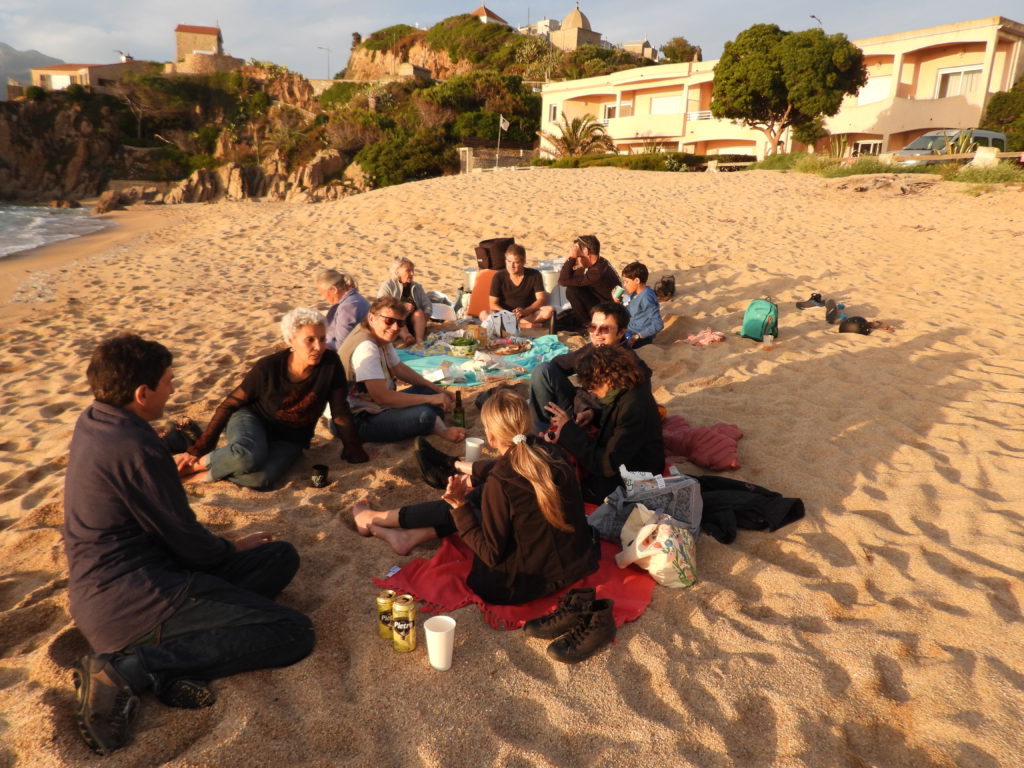
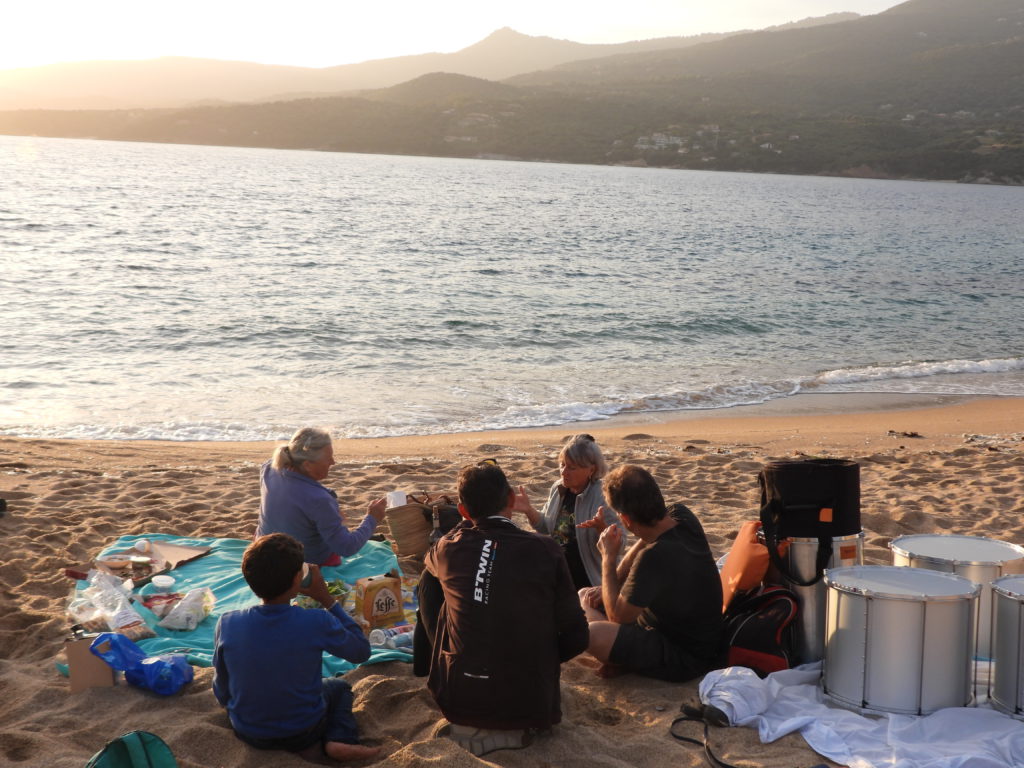
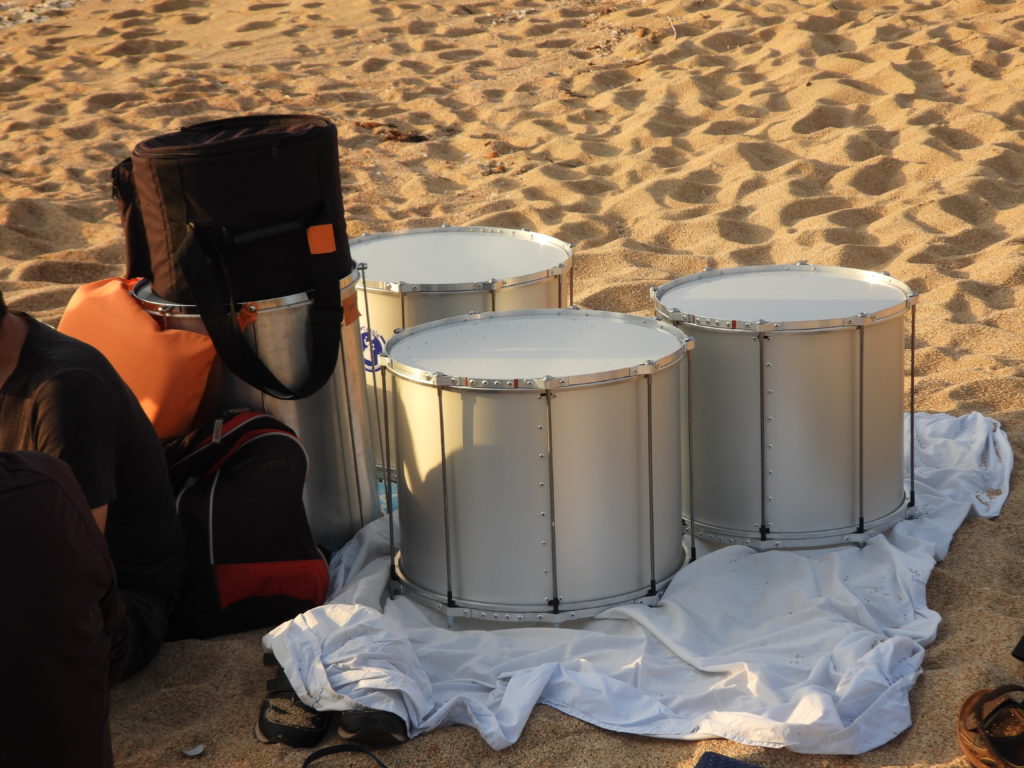
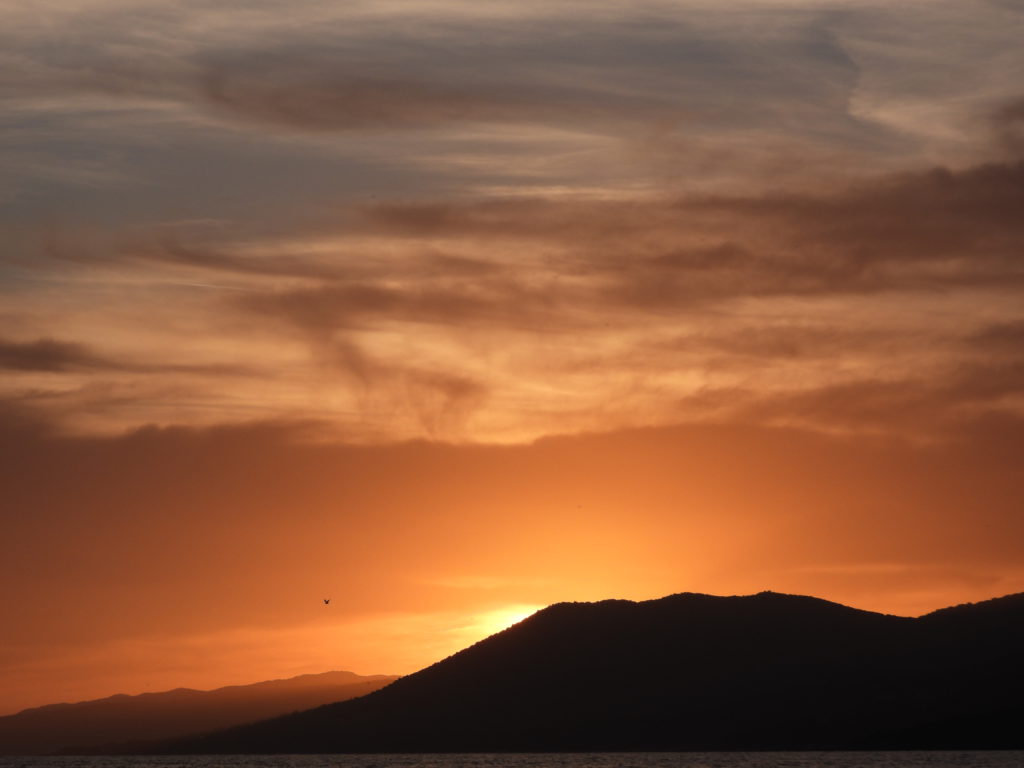
Thursday morning, I have to drive to the ferry terminal in Porto Vecchio. Over breakfast, Françoise mentions some cell phone problems, so I take a look. She brings out a newer phone and says she would like to switch to that one. I start migrating data from old to new for her and suddenly have an idea. If I can get her new phone fully functional, perhaps she’ll sell or give me the old one to replace my broken one. Unfortunately, I’ve started the project too late. I must leave Propriano by 12:30 to catch my ferry and, while I get her up and running on the new phone, there’s not enough time to migrate everything over. I came close to a cheap solution but close, as they say, only counts in horseshoes and hand grenades.
I make the drive from Propriano to Porto Vecchio. It’s straightforward, without too many slow, winding stretches, so my lack of GPS is no problem. Finding the ferry terminal is also easy because I drove through last week and know the layout. I arrive in time to queue in the loading line, which is incredibly long and completely stationary in the hot sun. Finally, we all inch toward the ferry, which holds an enormous number of cars and trucks on 3 decks, and depart on time. I’m on my way to Sardinia and Italy.
